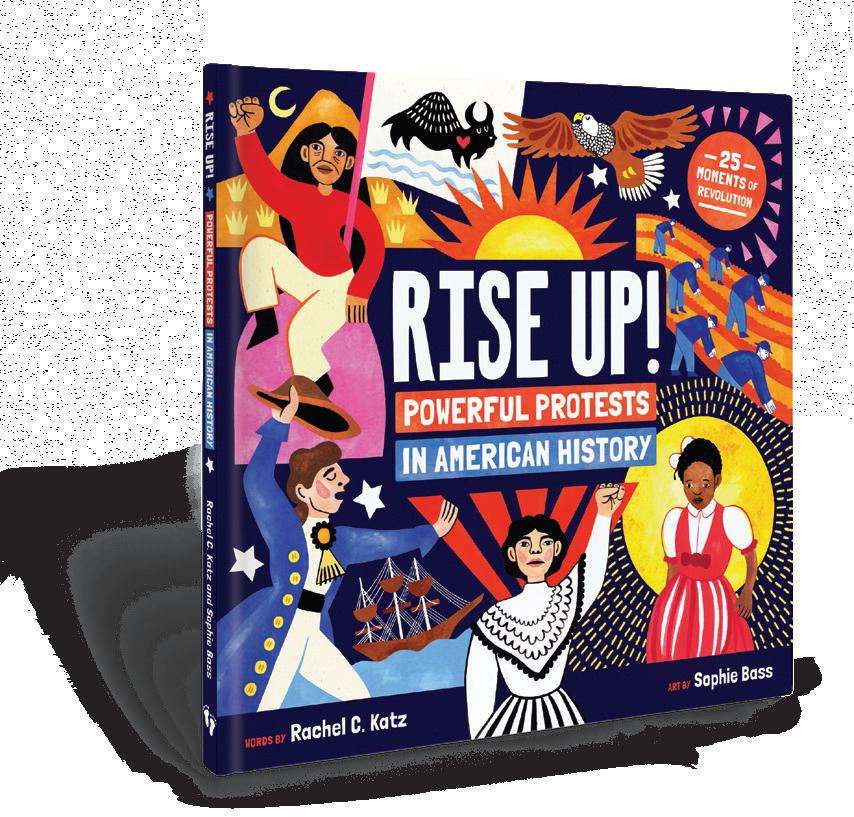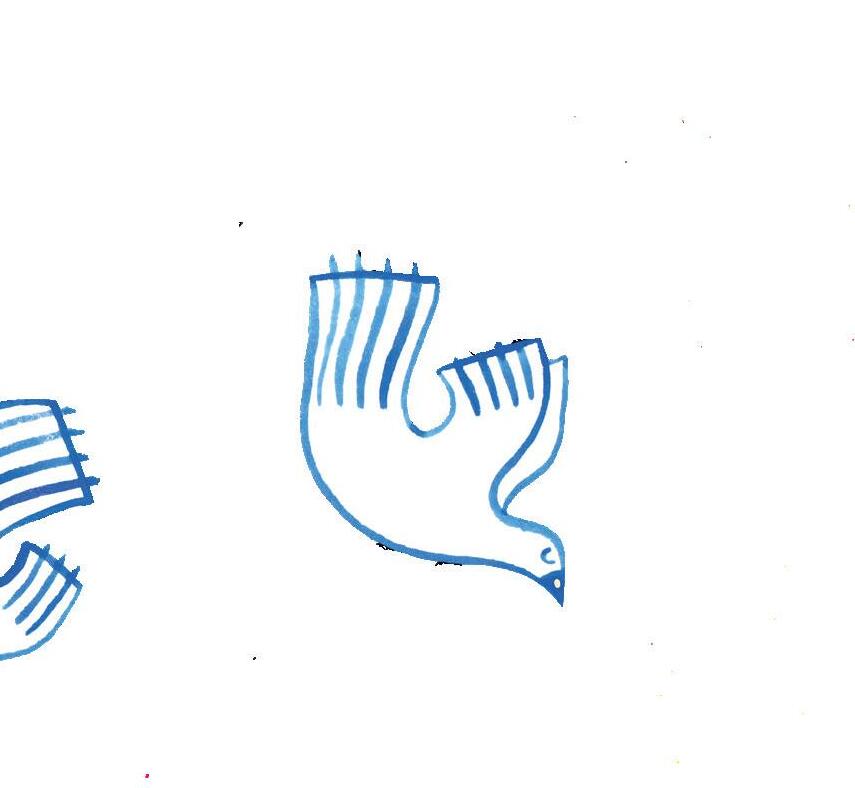



“I

- Concord Resident





from the





“I

- Concord Resident





from the
CConcord in winter is beautiful. The outside world quiets down and contemplates the future. Indoors, coffee shops, art galleries, and boutiques invite visitors and residents to stay a while and keep cozy. The snow on trees and meadows reflects the beauty of the sun hanging low in the sky.
As the days start to lengthen towards spring, our thoughts here in this part of New England turn to a very special spring indeed. Just three months from the date this issue went to press, our little corner of the world will step into the spotlight on April 19th. We will celebrate the 250th anniversary of the first battles of the American Revolution – the moment when a world based on kingdoms and colonists shifted to one of citizens with real agency over their own future.
This issue is filled with exciting content to honor the moments leading up to these semiquincentennial celebrations. Discover Concord had the extraordinary opportunity to speak with the legendary filmmaker Ken Burns and several members of his team about their upcoming documentary series, The American Revolution –partially filmed right here in Concord and Lexington. The article on p. 12 goes behind the scenes and explores what it was like to film through the lens of history in the very place where it occurred.
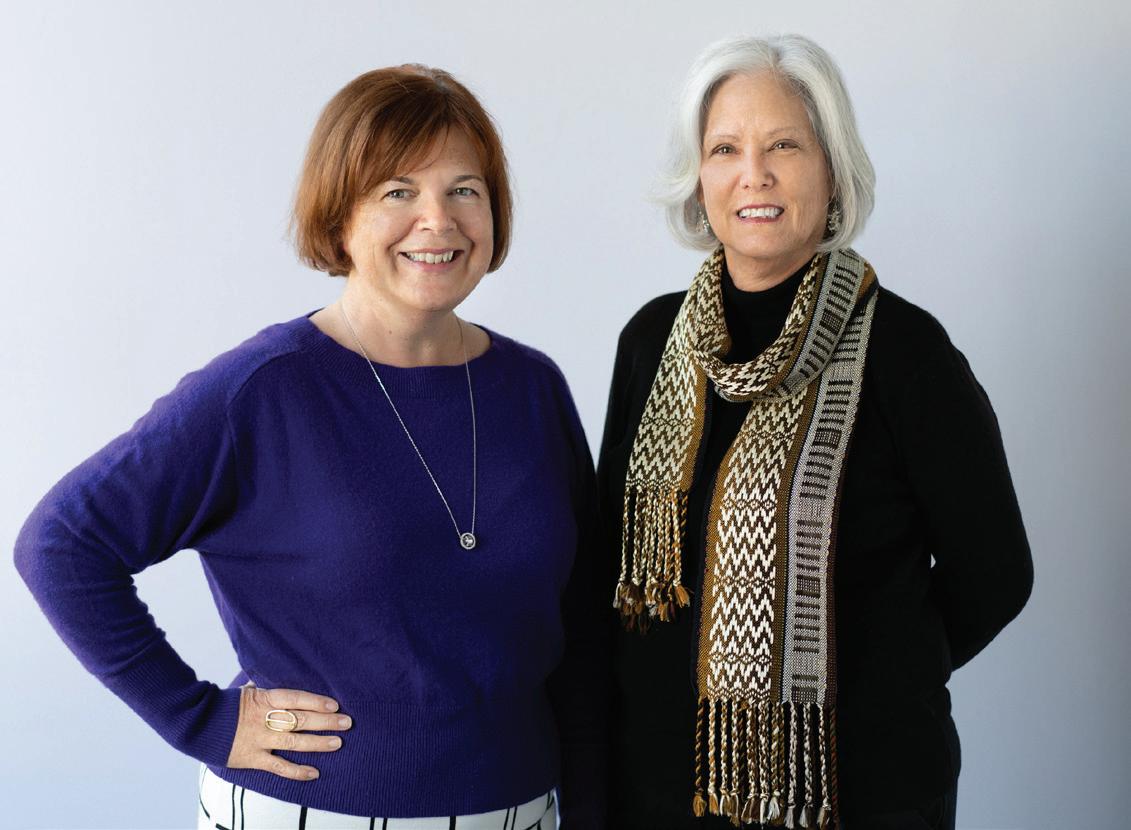
on p. 34. Get cozy with the history of quilting on p. 48. Or grab the kids and explore “Questions for a Snow Day” on p. 62.
As always, you will find family-friendly activities in the pages of this issue. There are a surprising number of “Things to See & Do” on p. 10. The arts come together with history in “Reflecting on the 250th Through the Arts” on p. 30. And Concord, as always, is alive with visual, theatrical, and musical “Arts Around Town” on p. 56.
Readers preparing for the 250 celebrations will appreciate articles on the ‘Salem Affair’ on p. 18 which nearly triggered the American Revolution seven months before the ‘Shot Heard Round the World’ in Concord and Lexington, and a handy fold-out guide to a “Monumental Road Trip” which encourages you to take to the road and explore the past through revolutionary war monuments, memorials, and markers. Don’t miss Jaimee Joroff’s fascinating tale of the role of the Wright Tavern in the events of April 19th on p. 24.
You will also find articles to celebrate the season with photographic and artistic renditions of winter in this lovely part of the world. Celebrate winter with outdoor adventures
This winter feels more electric than usual, with the lead-up to the 250 celebrations. We know that 2025 is going to be a special year indeed. And we hope you will join us here in and around Concord for these momentous celebrations. More than ever, we invite you to Discover Concord!
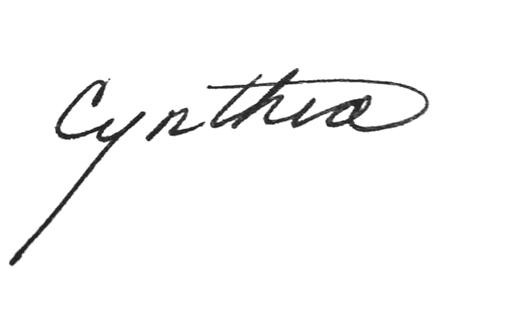

Cynthia L. Baudendistel Co-Founder
Jennifer C. Schünemann Co-Founder




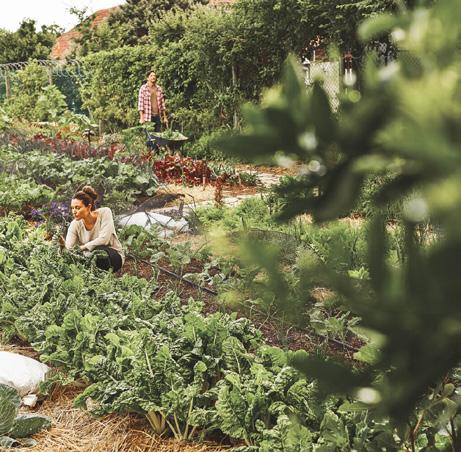
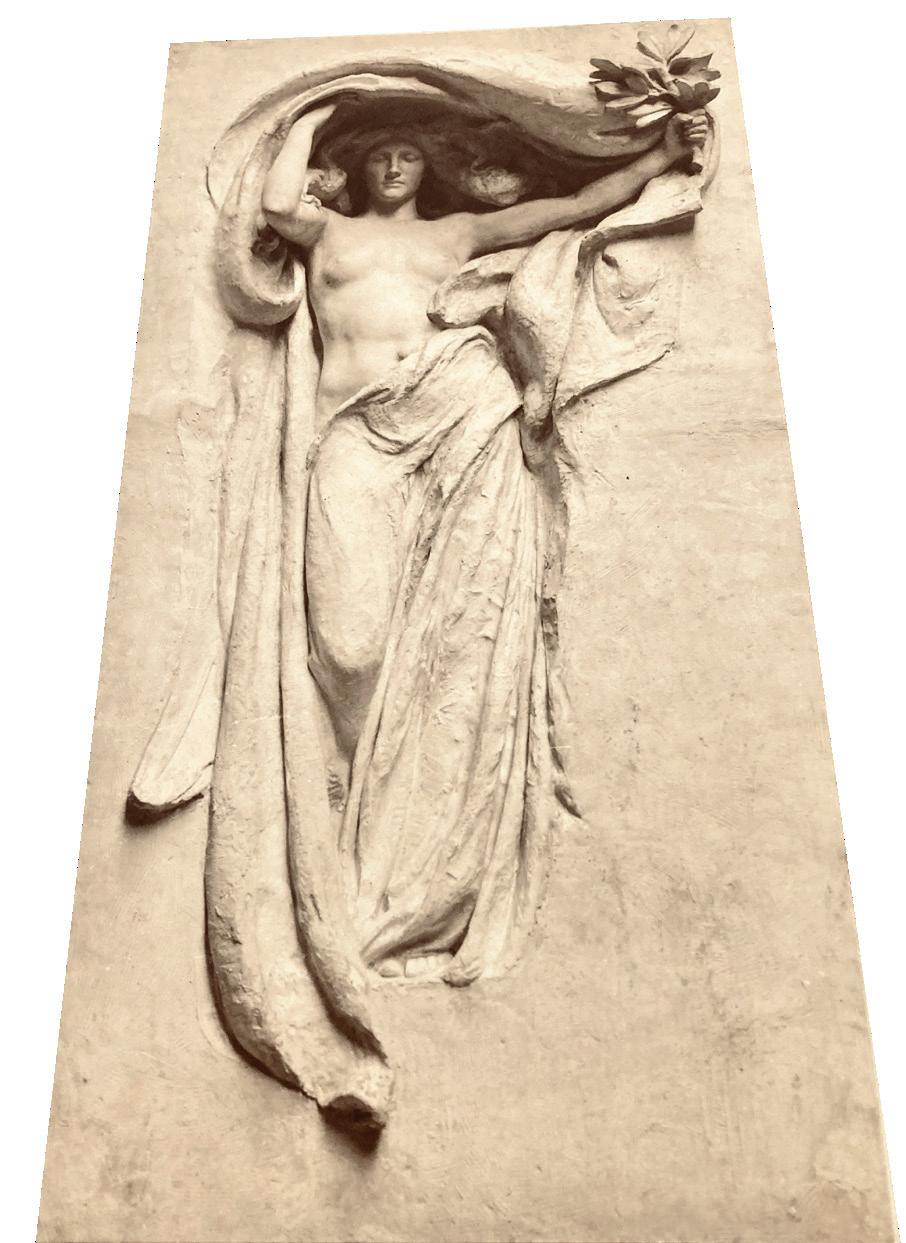
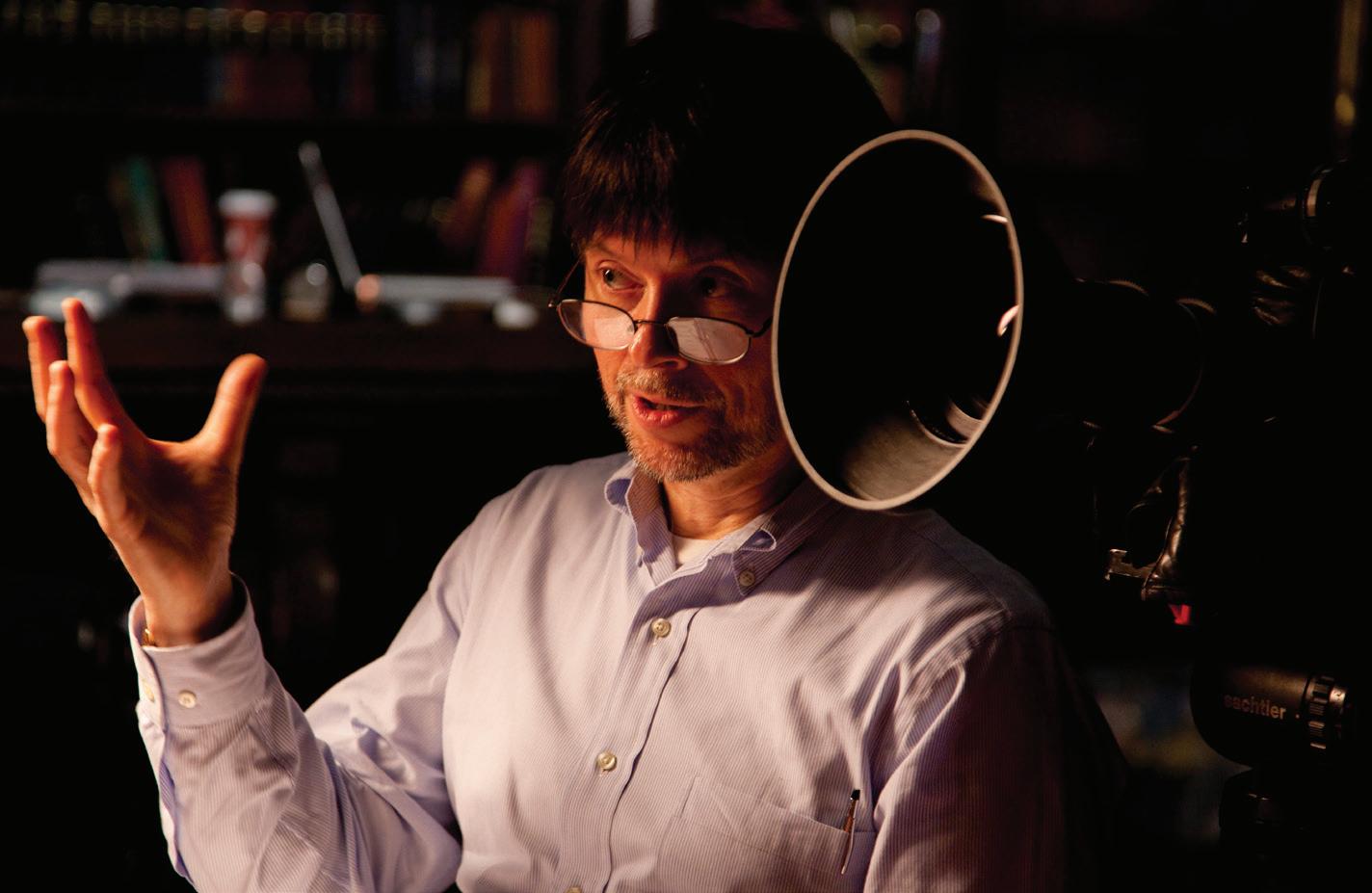

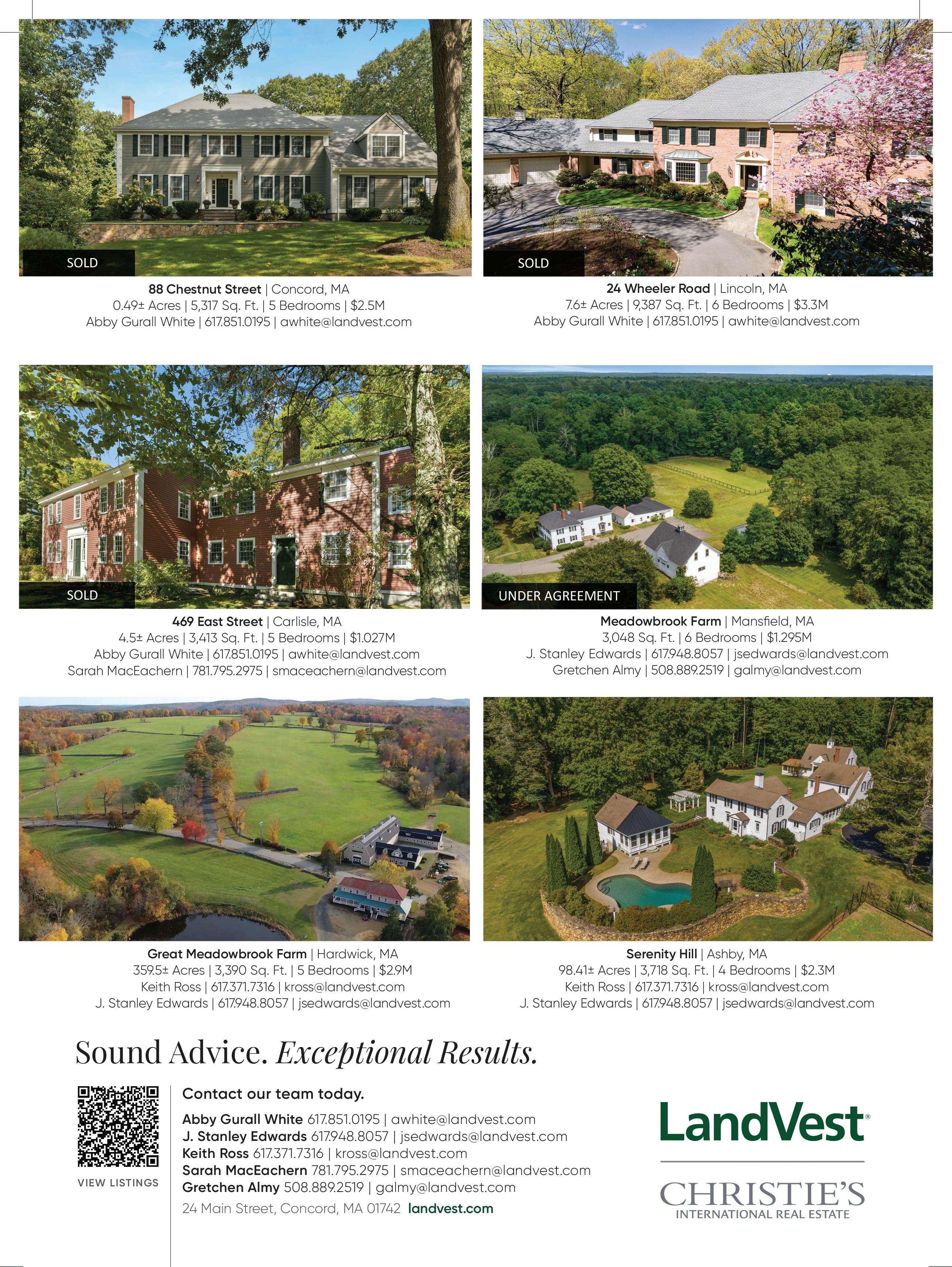




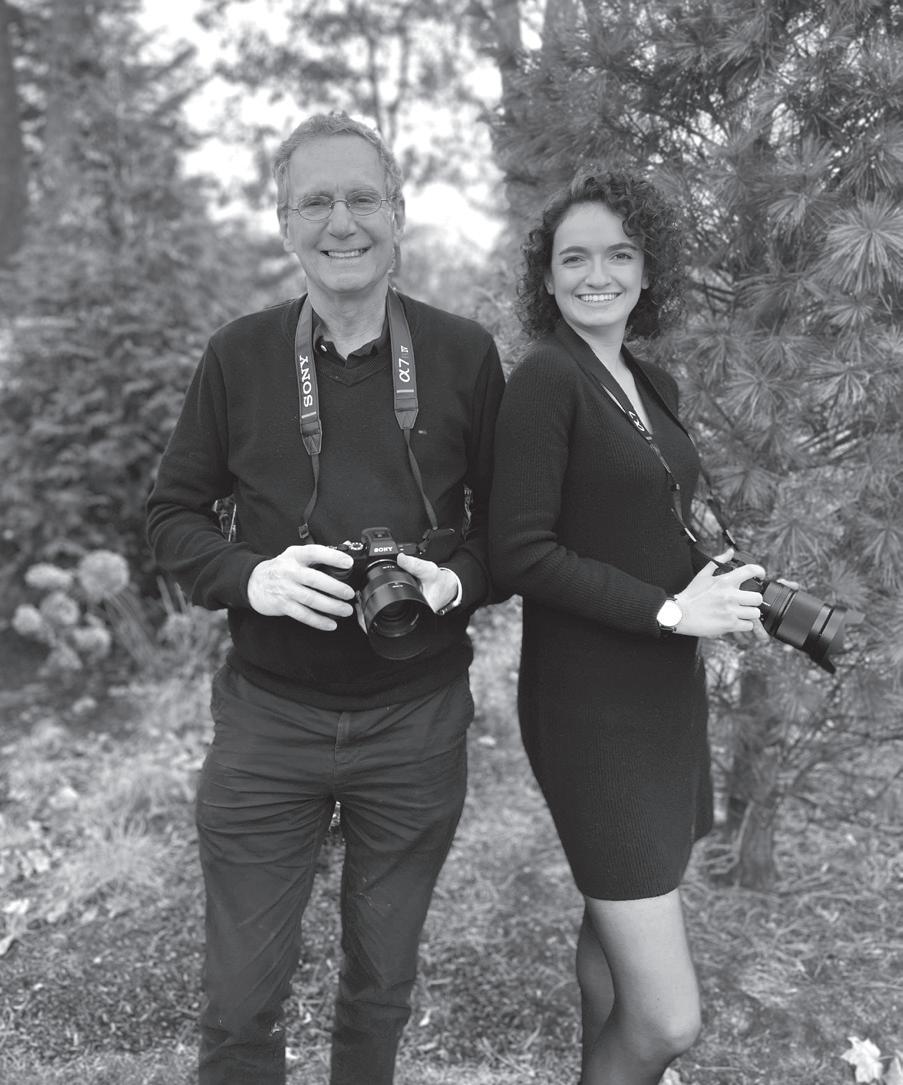

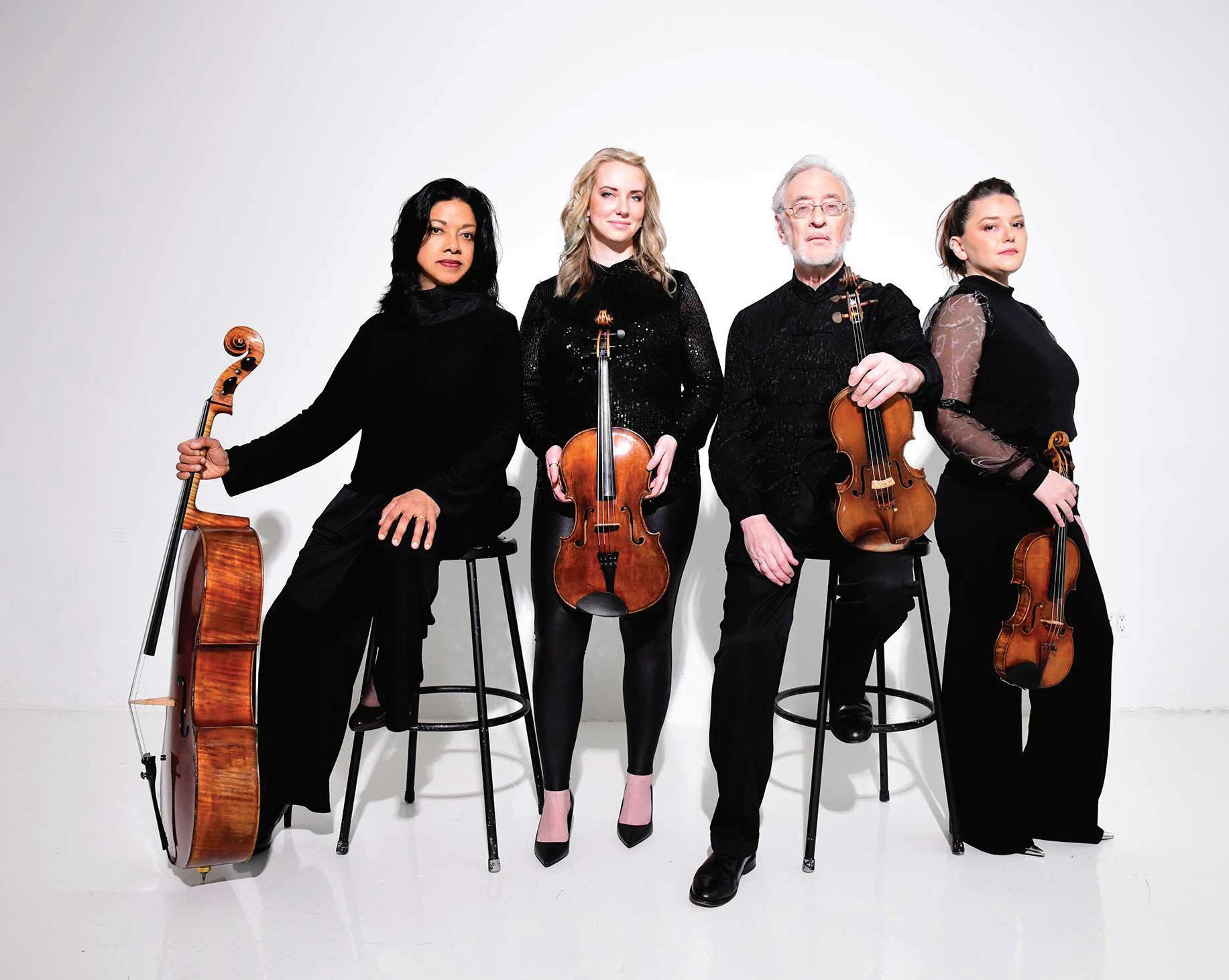

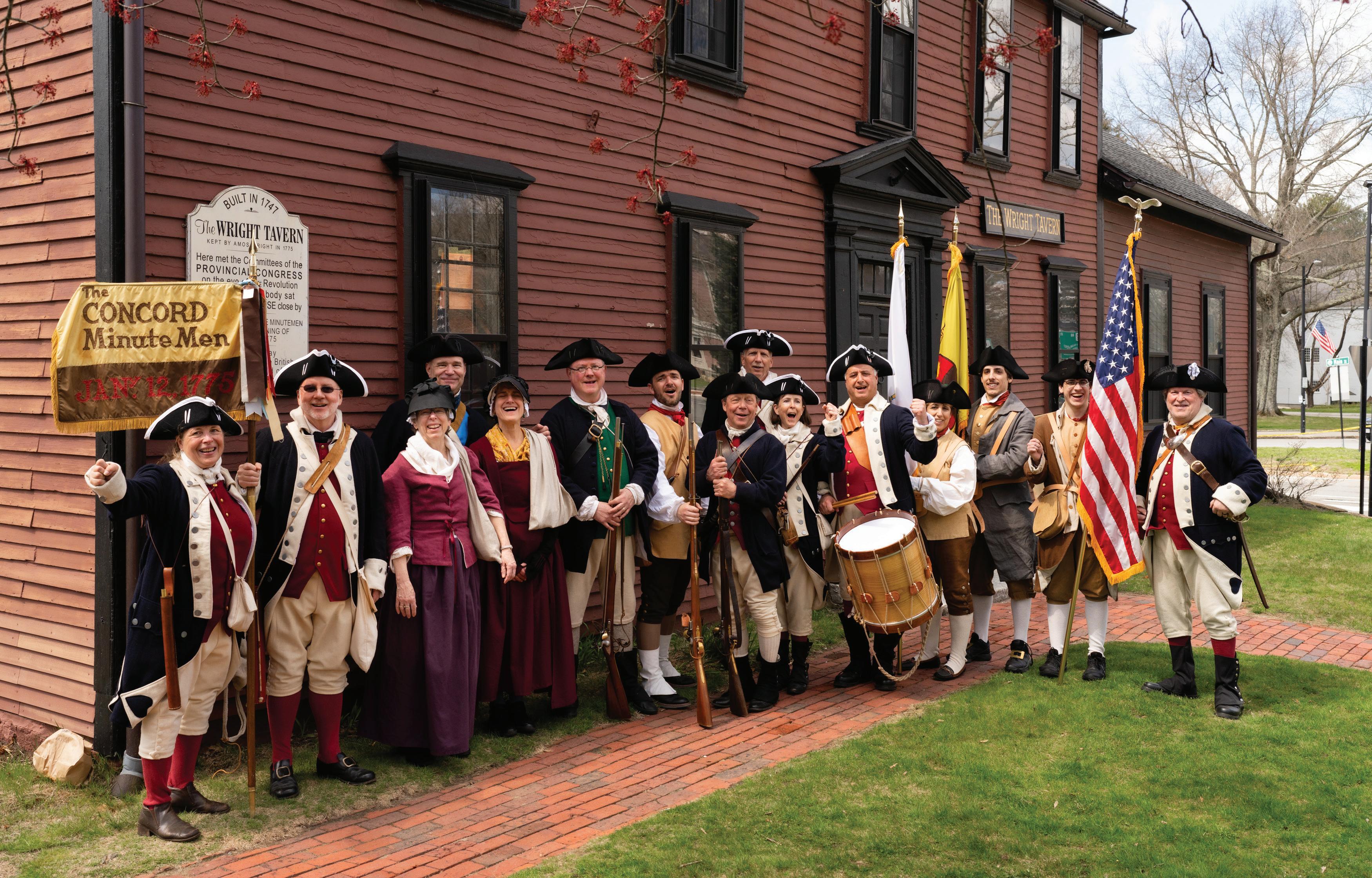



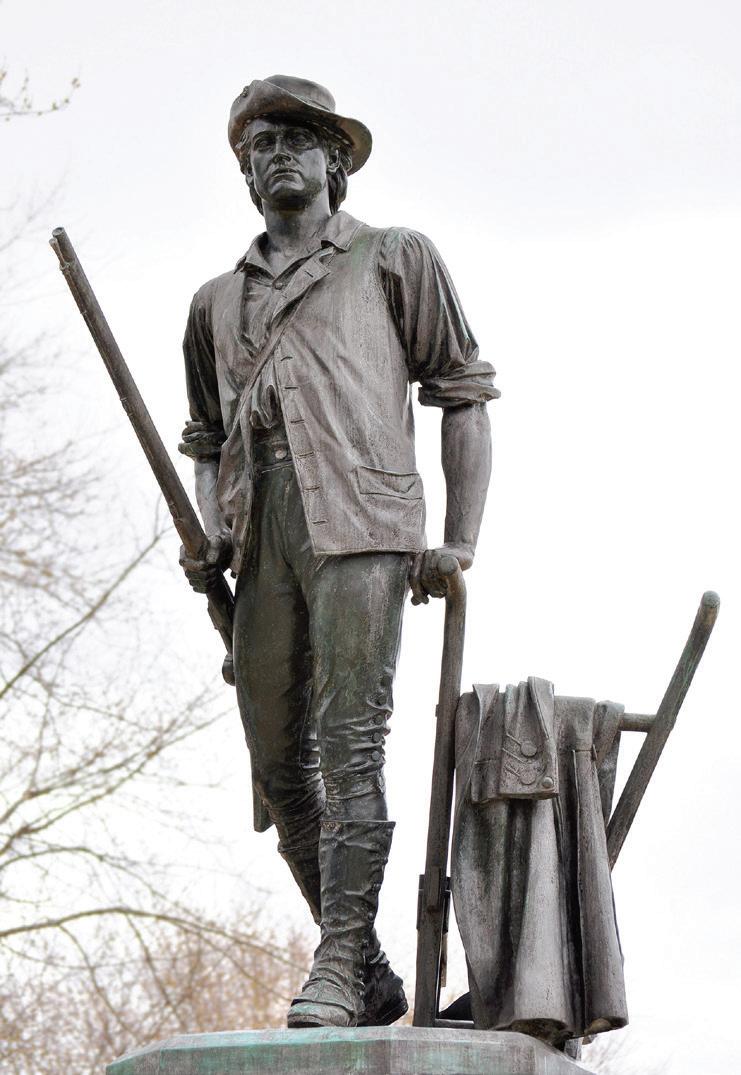
CO-FOUNDER Cynthia L. Baudendistel CO-FOUNDER
Jennifer C. Schünemann
ART
Beth Pruett DISTRIBUTION
Wilson S. Schünemann
ADVISORY BOARD
Professor
Helen
AUTHORS/CONTRIBUTORS: Cynthia L. Baudendistel
Botner
Alexander Cain
Pierre Chiha
Stewart Ikeda
Jaimee Leigh Joroff
Marybeth Kelly
Anne Lehmann
Anne D. Lovell
Richard Piccarreto
Jennifer C. Schünemann
Jan Turnquist
Dave Witherbee

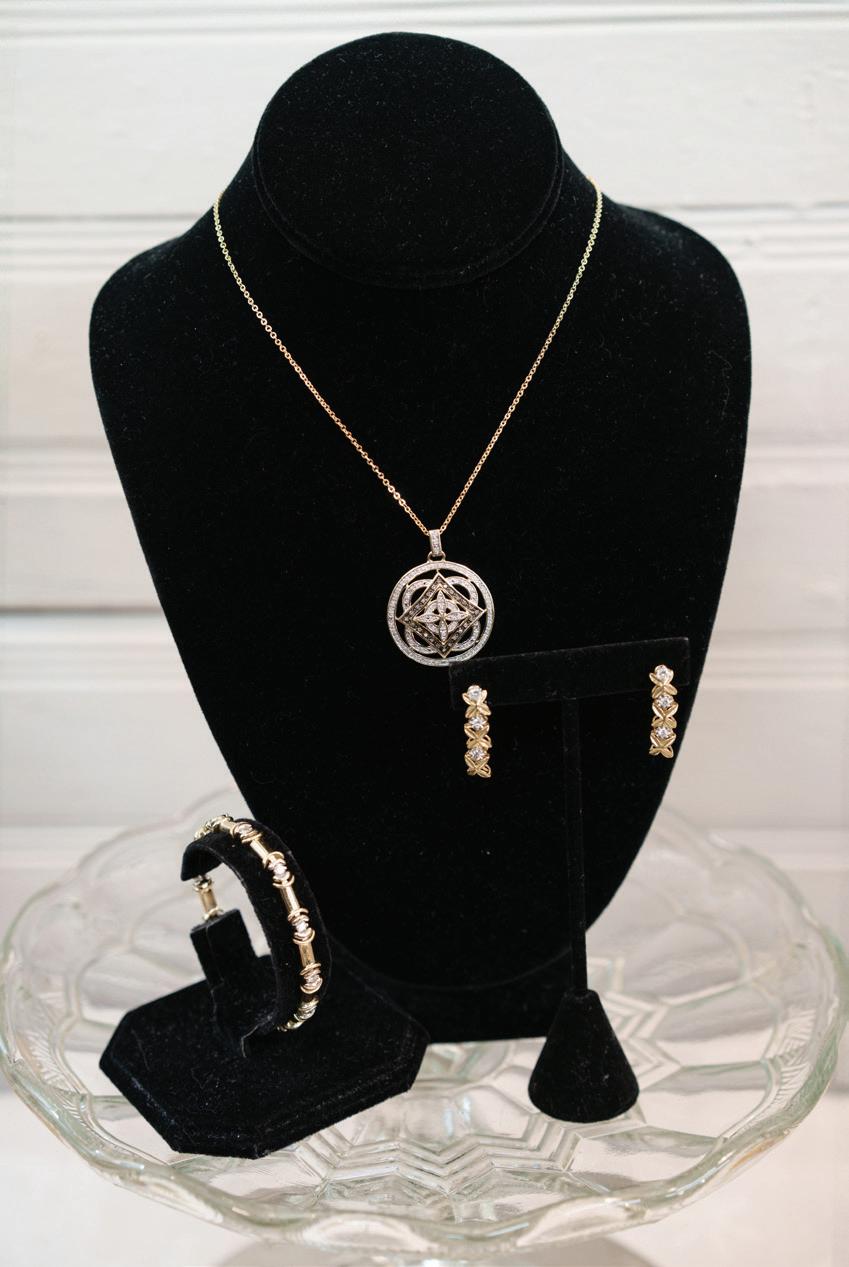
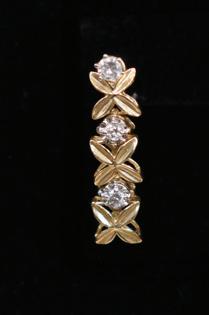
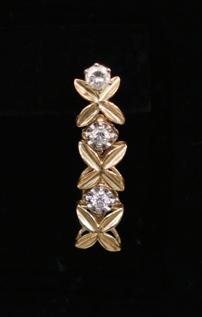
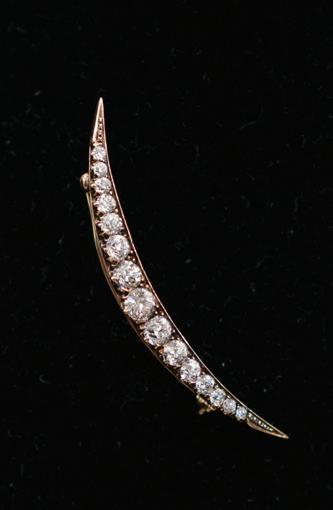
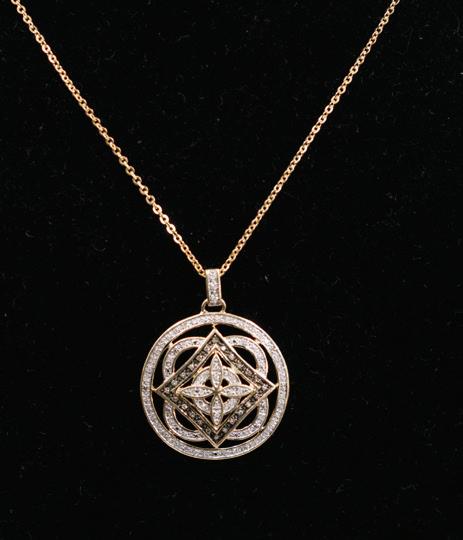
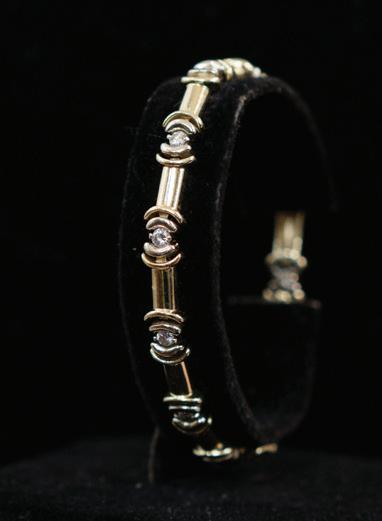






1
Calling all chocolate lovers! You are invited to explore Concord History with a Chocolate Twist! Every Friday and Saturday in February and March, this 90-minute chocolate-filled walking tour of revolutionary and literary history departs from the Concord Visitor Center. Wrap up your experience with hot chocolate and brownies! Information and registration at visitconcord.org
2
Join celebrated fashion historian Jonathan Michael Square for Fashioning Identity: The Garrisons and African American Fashion in Photography Jonathan will uncover the historical significance of the Garrisons’ portraits in the context of African American fashion, and how these images fit into the larger narrative of how African Americans have expressed themselves through fashion. February 5 from 7:00 – 8:00 pm. ConcordMuseum.org
3Unsettling Thoreau.
Join author John Kucich, President of the Thoreau Society, as he talks about his new book, Unsettling Thoreau. John will explore Thoreau’s complex engagement with Native American culture, which reflected his deep respect for Indigenous knowledge alongside his complicity in the settler colonial structures of his time. February 9 at 2:00 pm. ConcordLibrary.org
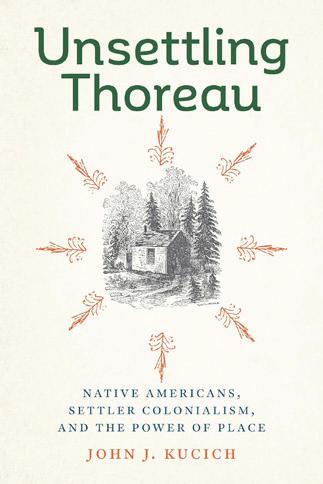
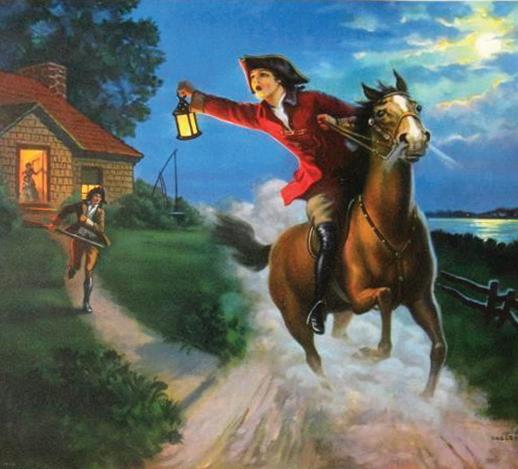
4Author Annabel AbbsStreet talks with Catherine Staples about her new book, Windswept: Walking the Paths of Trailblazing Women. Annabel connects with the outdoors by walking in the footsteps of women

who boldly reclaimed wild landscapes for themselves. February 23 at 2:00 pm. ThoreauFarm.org/ windswept
5The Man, the Myth and the Legacy: Will the Real Paul Revere Please Stand Up? Paul Revere’s legacy has been both elevated and obscured by his now
famous ride, 250 years ago on April 19, 1775. Henry Wadsworth Longfellow’s dramatic poem replaced what actually happened with a much beloved romantic version. Nina Zannieri, Executive Director of the Paul Revere Memorial Association, and Robert Martello, Professor of the History of Science and Technology at Olin College of Engineering, shed light on the legendary ride, the poem, and the man behind it, revealing the fascinating life of a fabled national hero who witnessed and helped to shape the birth of a nation. Feb 25 from 7:00 – 8:00 pm. ConcordMuseum.org
6
If you’ve ever dreamed of becoming a tour guide in Concord or simply want to delve deeper into the story of our remarkable town, the Concord Town History & Guide Training is perfect for you. Discover not just what happened here in 1775, but why it happened. Explore the lives of the men and women who made Concord the cradle of American independence, the 19th century authors who shaped its cultural legacy, the town’s antislavery champions, the Indigenous people who have called this land home for millennia, and so many more fascinating figures. Ccace.asapconnected. com/#CourseID=126540
7
What Does It Mean to Love a Forest? Join forester Ethan Tapper as he talks with award-winning historian and conservationist Brian Donahue about his bestselling book, How to Love a Forest: The Bittersweet Work of Tending a Changing World. March 6 at 7:00 pm. ThoreauFarm. org/love-a-forest
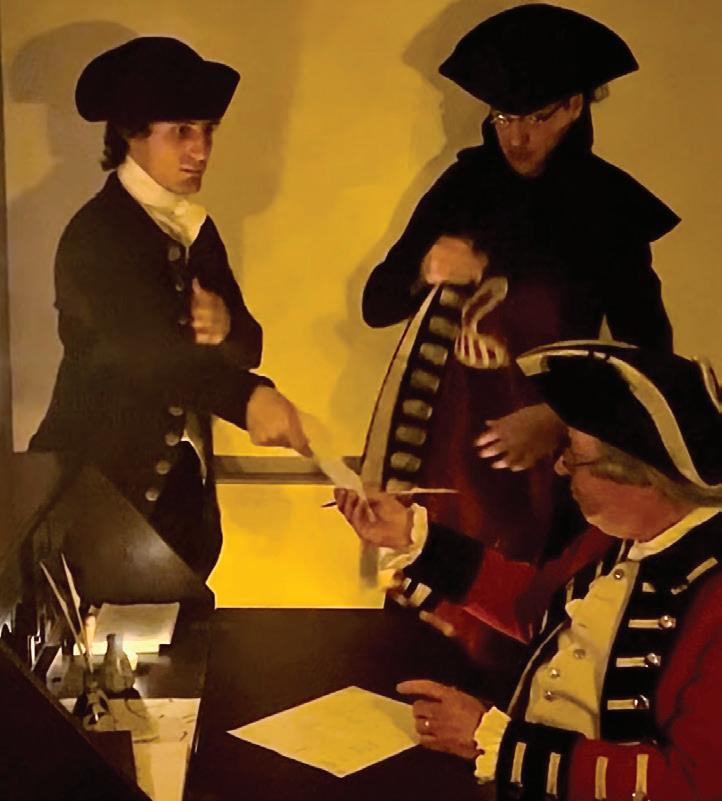
8
”Spies Among Us:” Intelligence Gathering by the British Army and Provincial Congress. In early 1775, as tensions rose, the Provincial Congress built an intelligence network to monitor British forces and supplies. Meanwhile, the British conducted their own intelligence missions into the countryside. These efforts would create moments of intrigue, strife, and unexpected voices; all of which would play a vital role in what was to come. Don’t miss this very special living history event. March 22 from 10:00 am – 4:00 pm at Wright Tavern in Concord Center. Nps.gov/mima/ planyourvisit/patriots-day.htm
9
Quilting was an integral part of life in colonial America. Quilted fabrics were both functional and decorative, and their use extended far beyond bed coverings. Quilts 250: Stitching in the Spirit of Democracy will showcase the extraordinary work of modern-day quilters near and far, with hundreds of quilts on display that visually express themes related to America’s founding and evolution. Special events within this two-day show include quilt entries in five distinct categories, invited speakers, activities for children, and more. March 22-23. QuiltersConnection.org/Quilts250.html
10
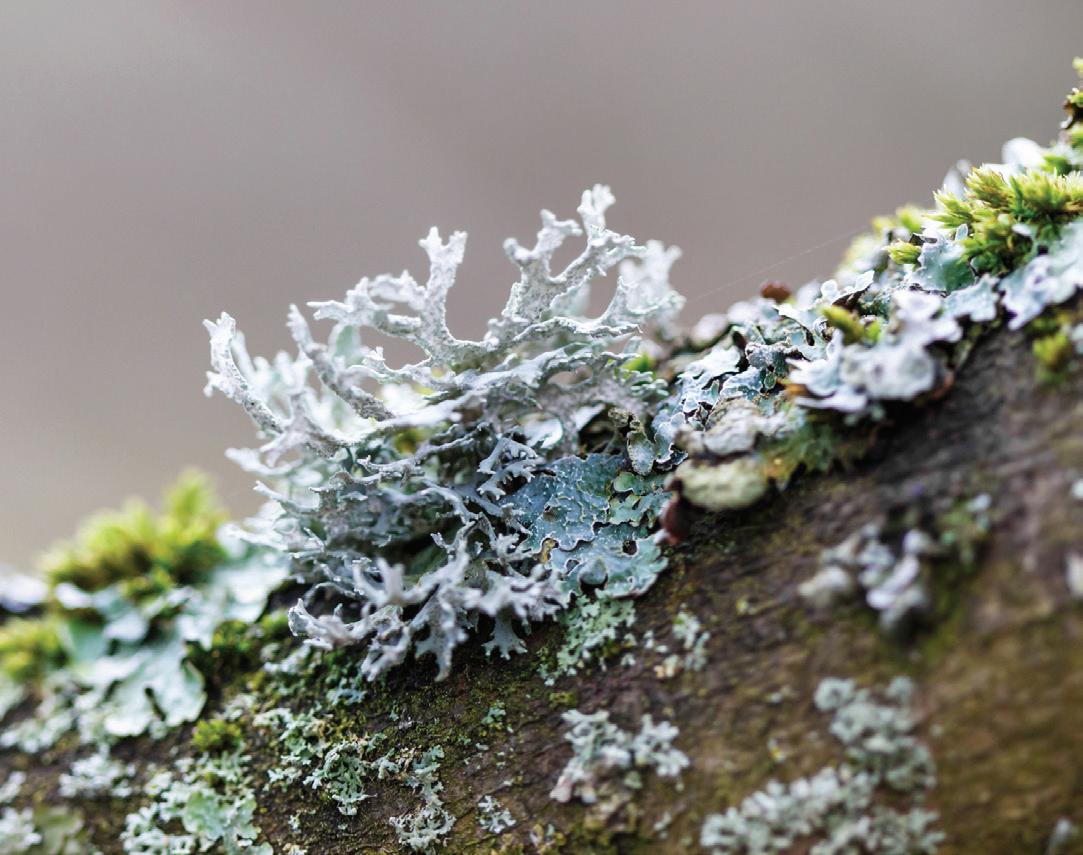
Join author Brian Donahue in conversation with Amity Wilczek as they discuss how we can heal the relationship between humans and forests and Brian’s new book: Slow Wood: Greener Building from Local Forests. March 23 at 2:00 pm. ThoreauFarm.org/slow-wood
11
Join renowned author and historian Robert A. Gross for an engaging presentation, “The Minutemen and Their World Revisited.” Nearly 50 years after the publication of his groundbreaking work, Prof. Gross revisits his original interpretation. Does it still hold true? What new discoveries and perspectives have emerged in the past half-century to reshape our understanding? This compelling talk will unveil fresh stories, intriguing details, and a thoroughly updated account of Concord’s road to revolution. March 26 at 7:00 pm at TriCon Church. Massachusetts250.org/events
12
The first of three special exhibitions at the Concord Museum, Whose Revolution will explore the competing meanings of revolution before the war and will examine the experiences of Loyalists, enslaved people, and Indigenous communities. Through objects and media, it will examine shifting ideas of liberty, sovereignty, and protest, revealing how support for independence from England developed gradually and was far from inevitable. Opening day: March 28. ConcordMuseum.org
13
Michael D. Hattem, historian and author of The Memory of
’76: The Revolution in American History and Past and Prologue: Politics and Memory in the American Revolution, will speak about the importance of the memory of the American Revolution, specifically on how events in Concord have been perceived nationally. Don’t miss Concord and the Memory of the American Revolution. April 5 from 2:00 – 4:00 pm. Massachusetts250.org/events
14Lichens are remarkable organisms that live in symbiosis with trees, rocks, and other solid surfaces. They play a crucial role in ecosystems and have a myriad of uses. Join author Kay Hurley and illustrator Susan Edwards, creators of Lichenpedia: A Brief Compendium, for A Day of Lichens at Thoreau Farm and explore lichens in Thoreau’s backyard. April 6. ThoreauFarm.org/lichens
15
The Concord Museum, the David Center for the American Revolution at the American Philosophical Society, and the Massachusetts Historical Society will host the 1775 Conference on the theme “1775: A Society on the Brink of War and Revolution.” Held at the Concord Museum, the conference marks the 250th anniversary of the battles of Lexington and Concord, with opportunities for attendees to visit historic sites and view objects and collections significant to the Revolution. April 10 – 11. Massachusetts250.org/events
16 Join Tough Ruck 2025 and walk for a cause! The Tough Ruck Marathon, honoring fallen service members and first responders, will cover 26.2 miles through Concord, Bedford, and Lexington. This year, the event proudly joins Concord’s celebration of the 250th anniversary of the first battles of the American Revolution. April 20. toughruck.org.
BY JENNIFER C. SCHÜNEMANN
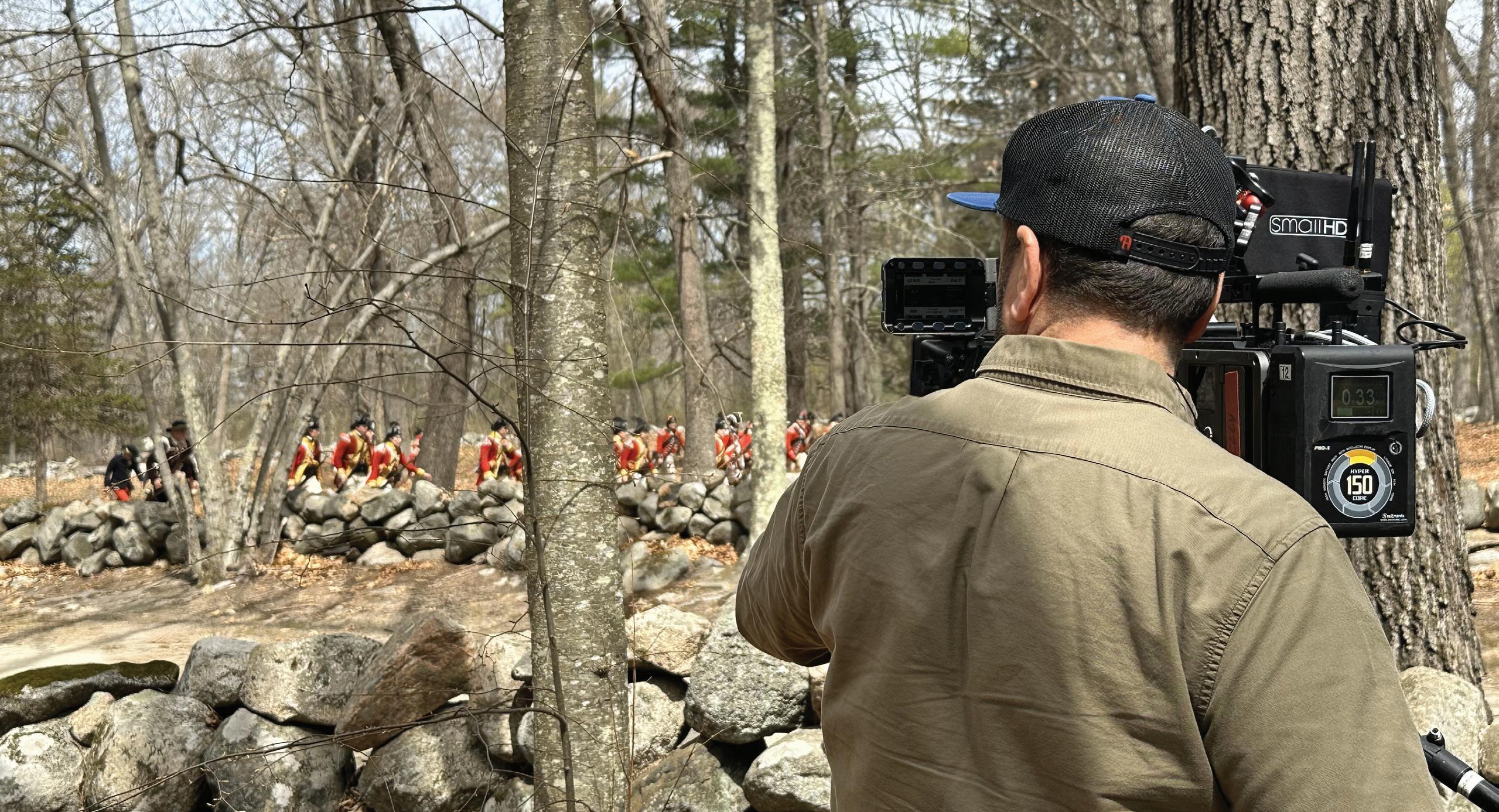
TThe American Revolution, a new six-part, 12-hour series directed by Ken Burns, Sarah Botstein, and David Schmidt and written by Geoffrey Ward will premiere on PBS on November 16, 2025. The series examines how America’s creation turned the world upside-down. Thirteen British colonies on the Atlantic Coast rose in rebellion, won their independence, and established a new form of government that radically reshaped the continent and inspired centuries of democratic movements around the globe. An expansive look at the virtues and contradictions of the war and the birth of the United States of America, the film
follows dozens of figures from a wide variety of backgrounds. Viewers will experience the war through the memories of the men and women who experienced it: the rankand-file Continental soldiers and American militiamen, Patriot political and military leaders, British Army officers, American Loyalists, Indigenous soldiers and civilians, enslaved and free African Americans, German soldiers in the British service, French and Spanish allies, and various civilians living in North America,
“I won’t work on a more important film in my life.”
Loyalist as well as Patriot, including many made refugees by the war. The American Revolution was a war for independence, a civil war, and a world war. It impacted millions – from Canada to the Caribbean and beyond. Few escaped its violence. At one time or another, the British Army occupied all the major population centers in the United States – including New York City for more than seven years.
- Filmmaker Ken Burns
Discover Concord magazine had the privilege of speaking with the filmmakers about

their experience here in the Concord and Lexington area and what it meant to them to film such an important documentary about the war that would launch the United States of America into being.
“The American Revolution has always been surrounded by myth that keeps us from seeing the real picture,” said Ken Burns. “The story of the birth of this country is at once devastating and inspiring. It was a bloody civil war that divided families and communities, displaced native nations, both challenged and protected the institution of slavery, while also proclaiming the noblest aspirations of humankind.”
“Our film tells the remarkable history of the people who lived through the American Revolution, their everyday concerns, and their hopes, fears, and failings,” said Sarah Botstein co-director of the series. “It’s a surprising and deeply relevant story, one that is hugely
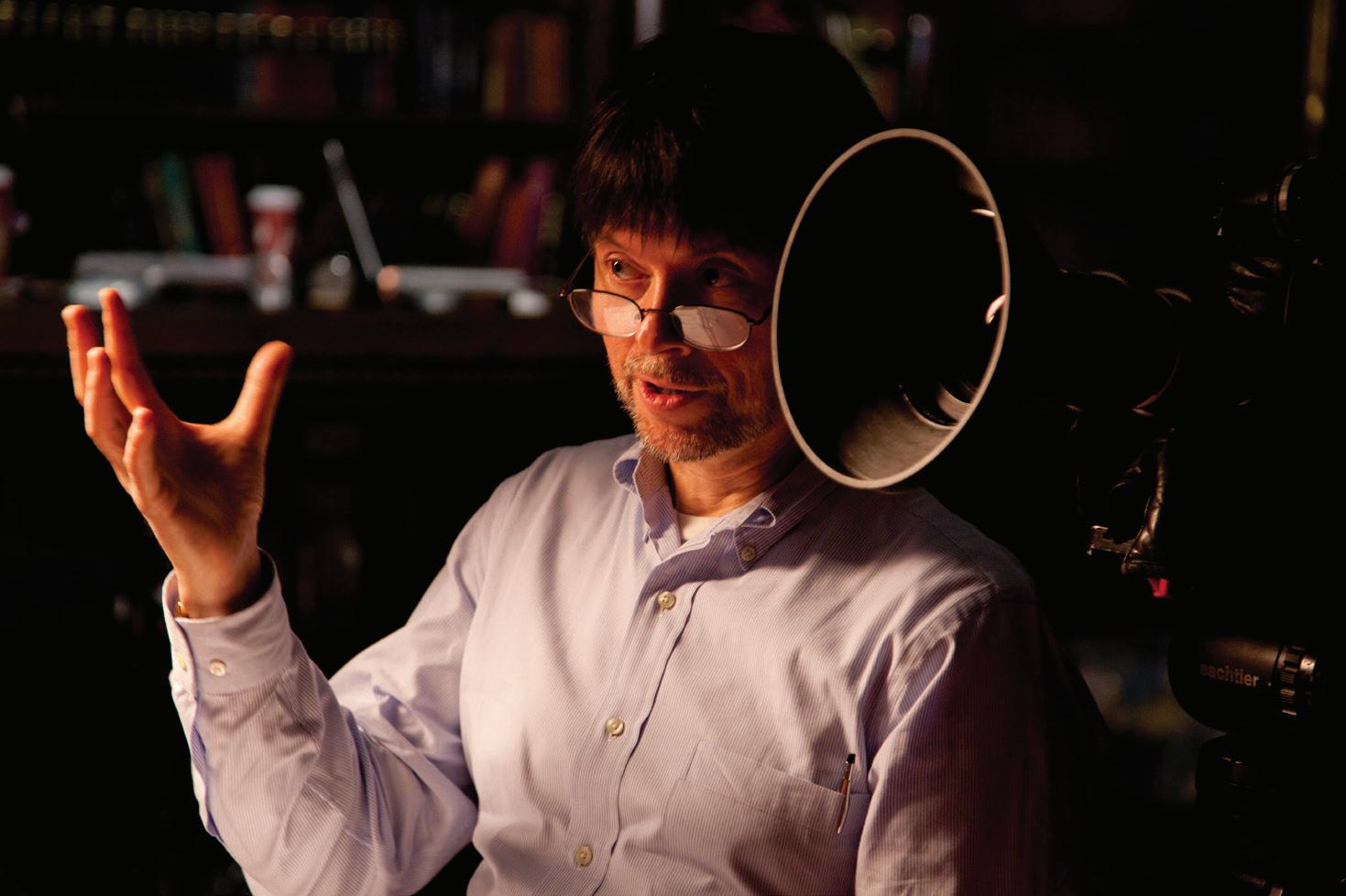
important to understanding who we are as a country and a people. The Revolution changed how we think about government – creating new ideas about liberty, freedom, and democracy.”
“The Revolution was eight years of uncertainty, hope, and terror, a brutal war that engaged millions of people in North America and beyond and left tremendous loss in its wake,” said David Schmidt, co-director and co-producer of the documentary. “At the same time, the Revolution also changed how Americans thought about themselves, their government, and what they could achieve. The United States that emerged from the war was a nation few could have imagined before the shooting began in April 1775.”
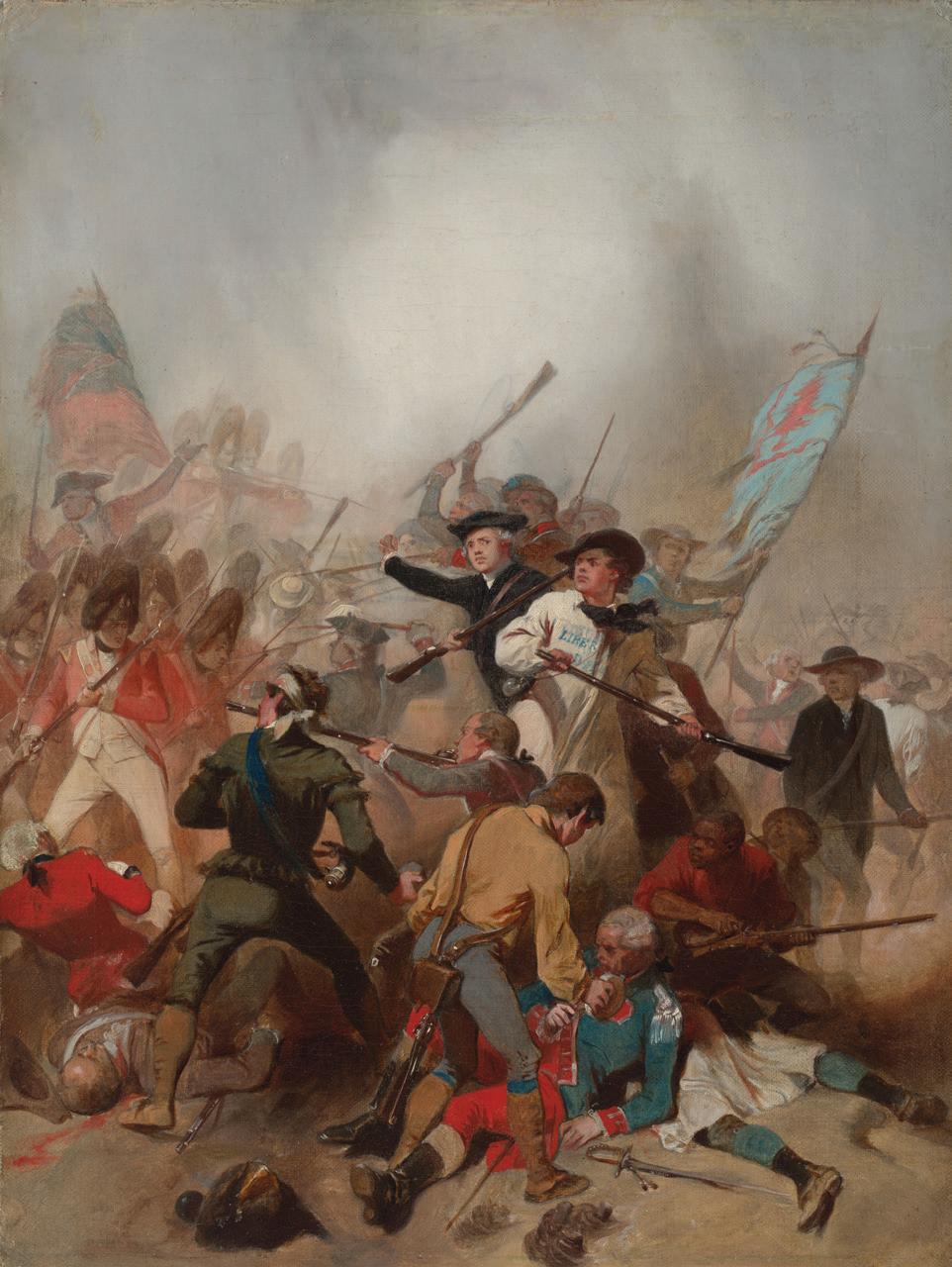
According to the filmmakers, the American Revolution is often pristine in our collective memories. But that’s not the reality of the conflict. We want it to be just great men thinking great thoughts in Philadelphia, and it is largely about that. But this is a film called The American Revolution. So it meant they wanted to tell the stories of what happened at the Boston Massacre, on Lexington Green, at the North
beyond.
They describe the American Revolution as a symphony in three movements. From New England it moves to the Mid-Atlantic states. And then it moves to the southern states and ends in an incredibly bloody and dramatic conclusion. “As filmmakers, we had to be faithful to that and make sure that people who are unfamiliar with the stories beyond the journey from Lexington and Concord to the surrender at Yorktown, have a chance to understand the many other battles and the full narrative through the stories of the people who lived those moments.”
Burns and his team also emphasized that the American Revolution was essentially a World War that involved more than two dozen nations - European as well as Native American. The Native American story is almost never told. There were those who fought with the British, those who tried desperately to remain neutral, and those who fought on the side of the Patriots. In fact, there is a Native American woman in Massachusetts who lost five sons fighting for the Patriot cause – can you imagine? These are the kinds of stories they spent nine years collecting to show what an intimate and complicated story this American Revolution truly is.
The Concord and Lexington Experience
I asked Ken Burns and his team about their experiences here in Concord and Lexington while filming for the documentary.
“My first wife, who passed away, and her family were from Lexington, so I’ve spent a lot of time there,” said Burns. “I taught at Concord Academy in the summer of ‘72. This place holds stories. And now we are trying to bring back the ghosts who are there through paintings, through following reenactors, through drawings, and through going to the now quiet places like the North Bridge.”
“Filming that bridge, just as it is today, is so powerful. Just filming there in the early hours with no tourists, no residents, just alone and you have to imagine and pour into it what happens to Isaac Davis when somebody on the British side says “fire,” and someone shoots and kills him.”
“Over many years, I walked through Lexington and Concord, and along the Battle Road in Minute Man National Historical Park so many times. It’s so spectacular to get out and walk and see how carefully the area and the witness houses along the route have been preserved and protected over the years. Often, I would think about the British marching there and then high-tailing it back - and what it would be like for them to understand that they were in a guerrilla war. I mean, their casualties were horrific and then even worse at Bunker and Breed’s Hill.”
“How do you capture the horror of an angry and harrowed British Army racing back
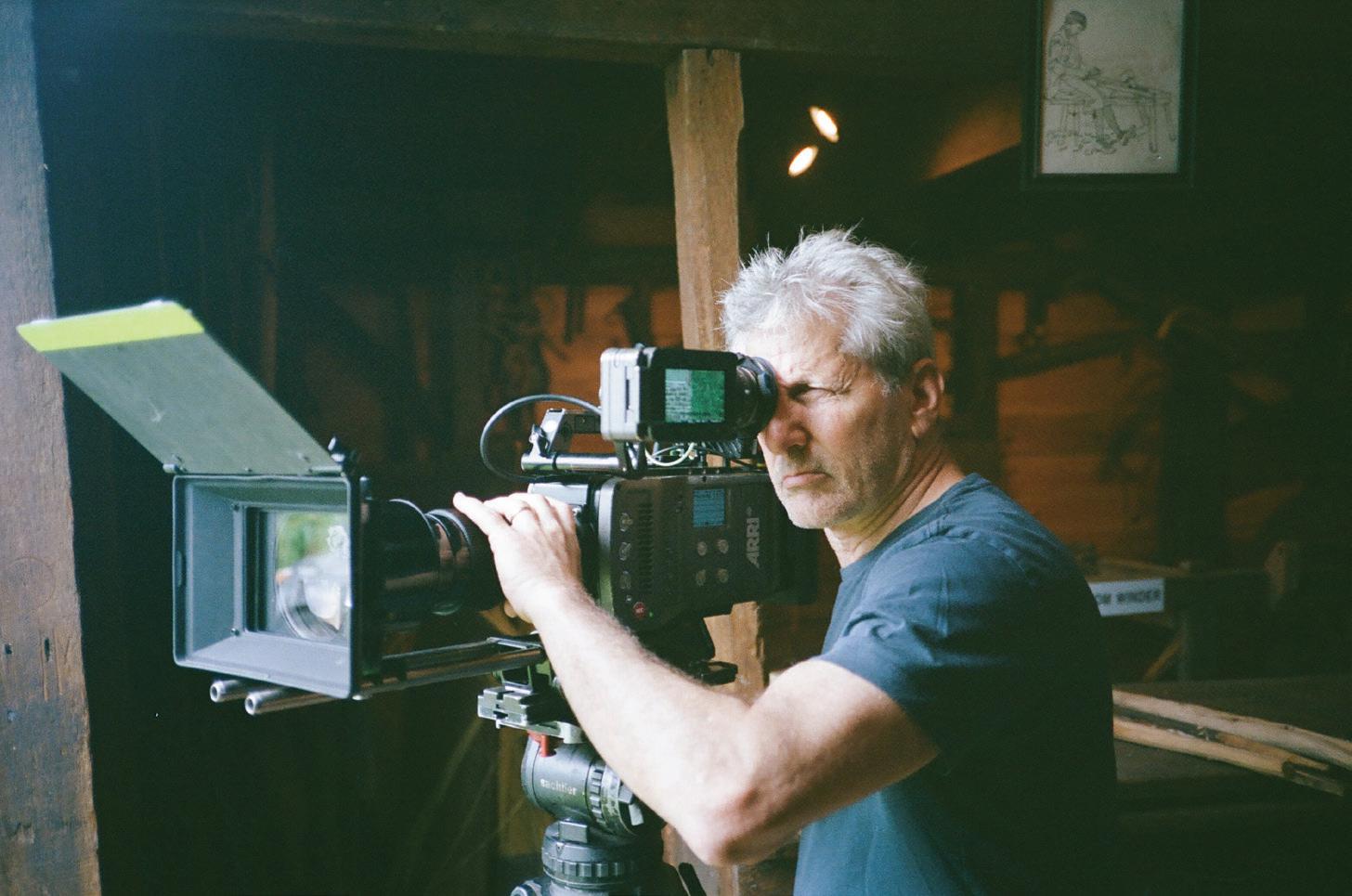
to Boston and stopping to break through the doors of houses in nearby Menotomy (now called Arlington) and killing everyone inside – with such violence that blood spilled over the doorway? We don’t always think of the American Revolution as the military and vicious war that it was.”
“You can strip away some of this mythology of the great legends we have all learned in school and then start to backfill with these complex and nuanced characters that bring the story to life. At the end of the day, we are storytellers and we’re trying to figure out how to carry as many of those
stories as possible out of this big, larger story, which is our national creation myth.”
“This revolution is the first time in human history that people said we want to start a revolution for the purpose of starting a country based on the idea that throughout human history, people have been subjects and we want them to be citizens. It’s a big deal. It’s one hell of a story. And it makes you proud. And it makes you angry. And makes you disappointed. And it makes you exultant that the story and the characters are complicated and nuanced.”
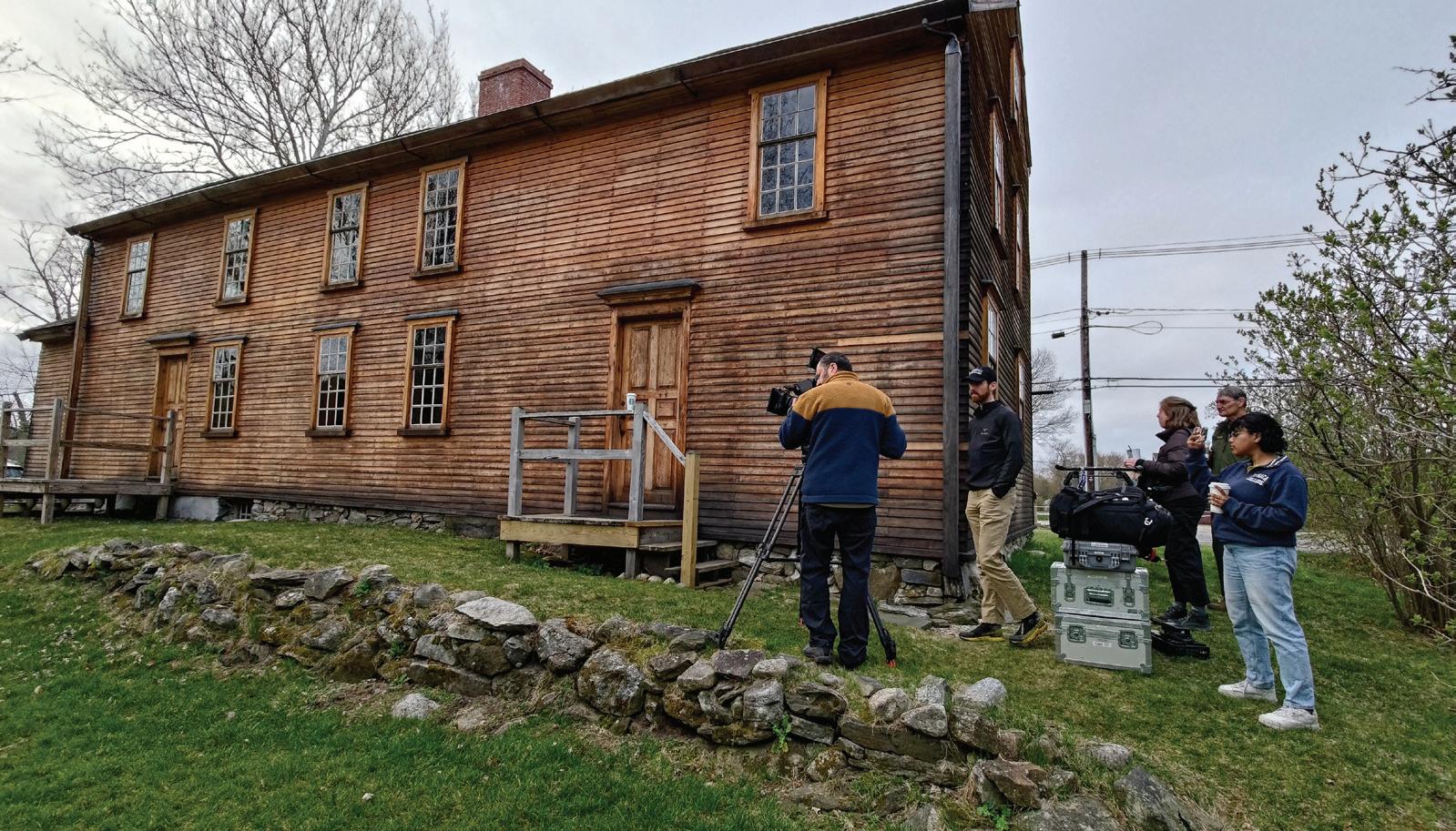
“There are so many complicated and very subtle dynamics to the story of the American Revolution, and you can’t either wish them away or simplify them if you’re going to dive into it. That’s why I say, I won’t work on a more important film in my life,” said Burns. “I’ve worked on films that I think are important. I hope to work on films, God willing, that are also important. But, for me, nothing will be more important than getting this story right.”
The American Revolution will make its debut November 16 – 21 at 8:00 – 10:00 pm EST (check local listings) on PBS. The full series will be available to stream beginning Sunday, November 16 at PBS.org and on the PBS App.
W“When creating such an important documentary, we stand on the shoulders of 250 years of other people’s work on this subject,” said David Schmidt, co-director of the film series. “So many historians, curators, park rangers, and people passionate about historic preservation helped make the film possible.”
“Staying right in the center, at the Colonial Inn, made it so easy to absorb what Concord really is,” he continued. “We were able to walk everywhere. We would shoot at sunrise and sunset – experiencing this beautiful place while encountering a lot of folks walking their dogs or just curious about what we were doing. It was a fun experience – and very beautiful to see the sunrise at the North Bridge.”
Megan Ruffe, co-producer on this series, oversaw the team here in Concord and Lexington. “We have to credit all the local historical societies and the rangers and stewards of history at the local level who’ve really helped maintain protected views and areas to make it feel it like you’re here in the 18th century. It made it so much easier to film,” she said.
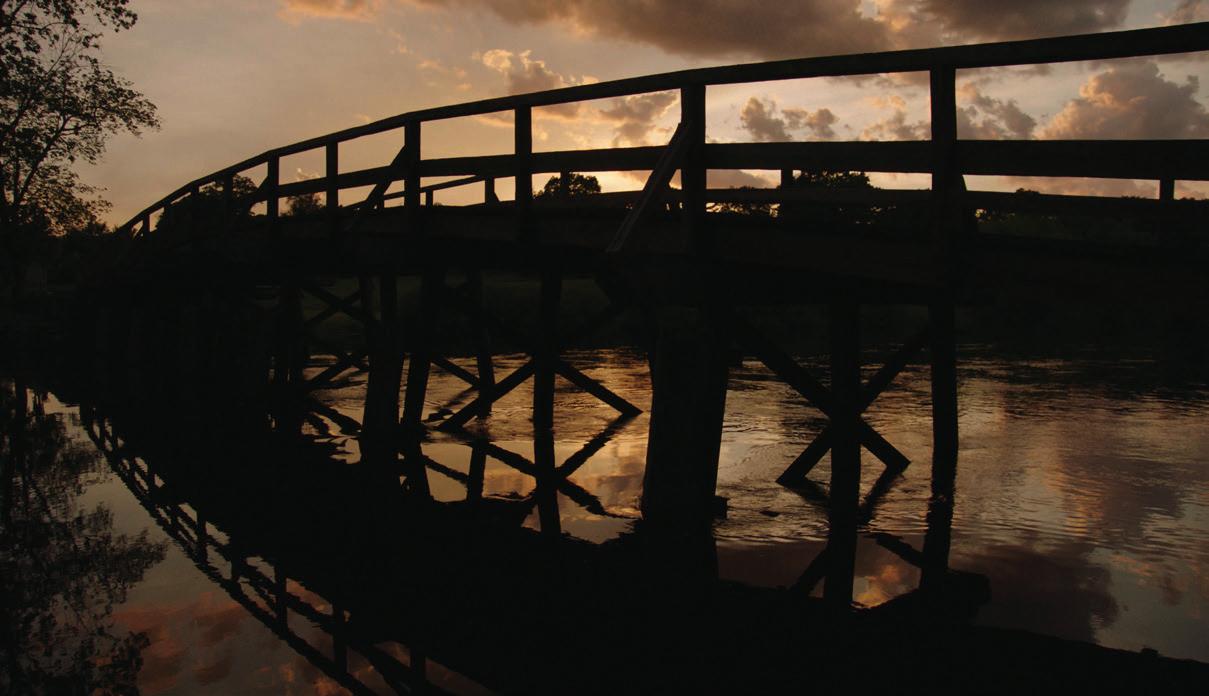
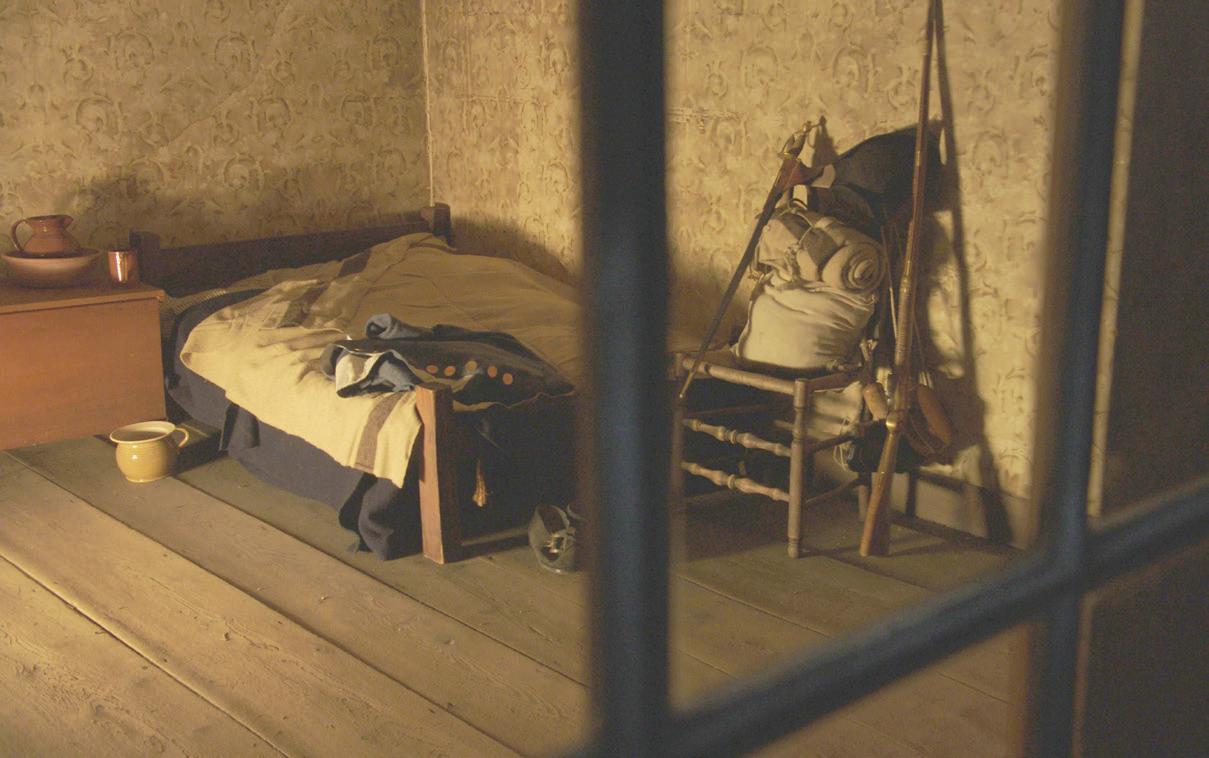
“One aspect that was really challenging is that the time period was pre-photograph, so we had to look out for clues of what life was like in the 18th century and then figure out how to take that and translate that into footage,” Megan said. “Collaborating with local historians and stewards of preservation was vital to the success of the project. We had to rely on paintings, documents, preserved buildings, and material cultural items to help tell the story visually. The Amos Doolittle drawings were instrumental in helping us visualize what happened that day.”
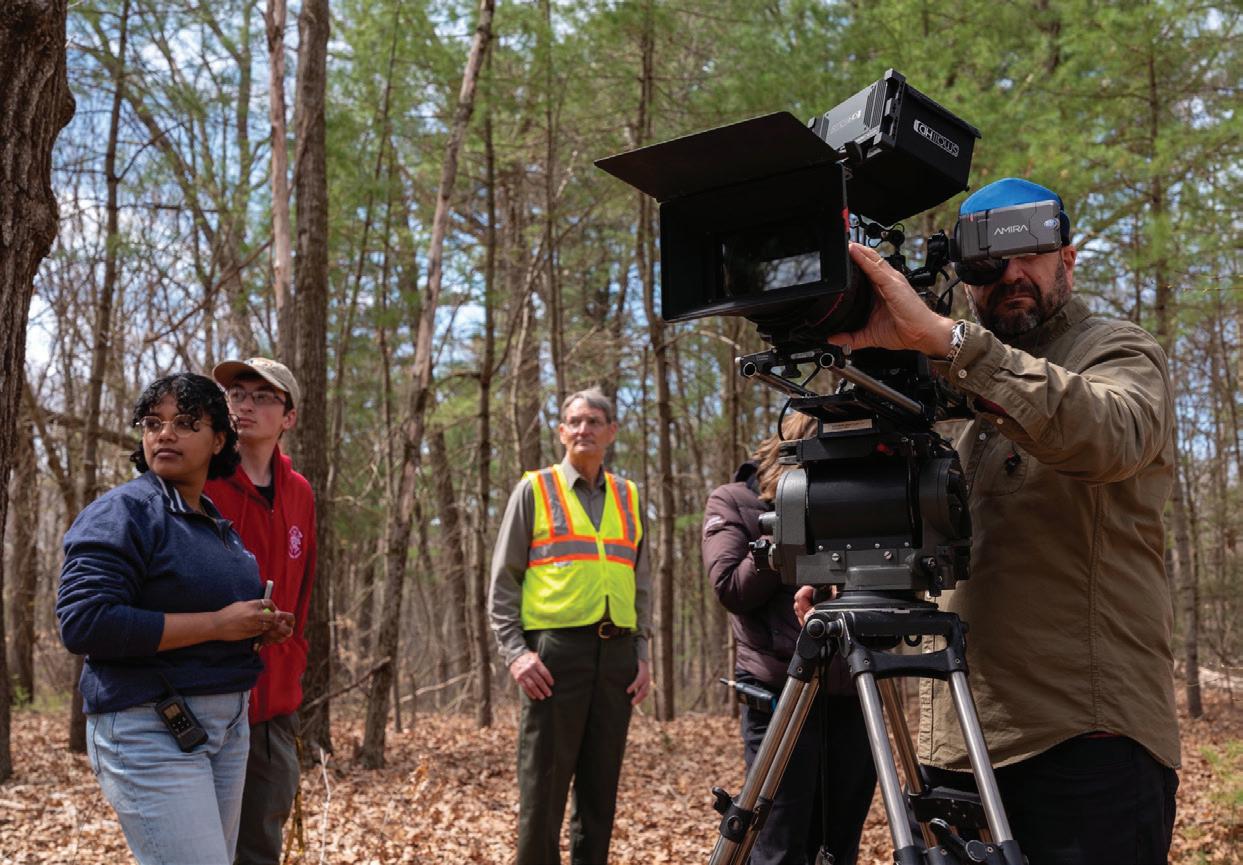
“At Minute Man National Historical Park, we worked with a ranger there who helped us get the appropriate material culture in the space when we were filming at the Hartwell Tavern. That was amazing, because the park is so visually protected from modern sight lines. When you walk from the parking area to the path leading to the tavern, the park opens up to the historically preserved Battle Road, the Hartwell Tavern, and this wooden fence that runs along the road exactly as it did back then. These things were obviously there in April 1775 and it’s kind of eerie how much the experience takes you right back in time.”
“Another place that was special was the Colonel James Barrett house, which was recently restored. The park rangers let us go inside to film it right before they brought all the furniture back in. So, we were in this empty, beautifully restored house and it was so well done and the detailing in it was so specific to the region that it took me right back to 1775. I know that for the people who worked on the restoration, it was a real labor of love. It’s very cool that we got to experience it.”
(from left to right) Associate Producer Shyala Jayasinghe, Apprentice Editor Colin Costa-Walsh, MMNHP Park Ranger Bill Fuchs, Co-Producer Megan Ruffe, and Cinematographer Antionio Rossi at the reenactment event.







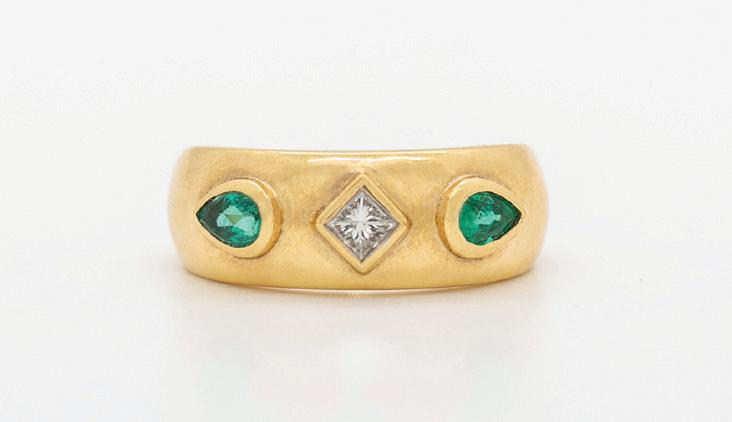

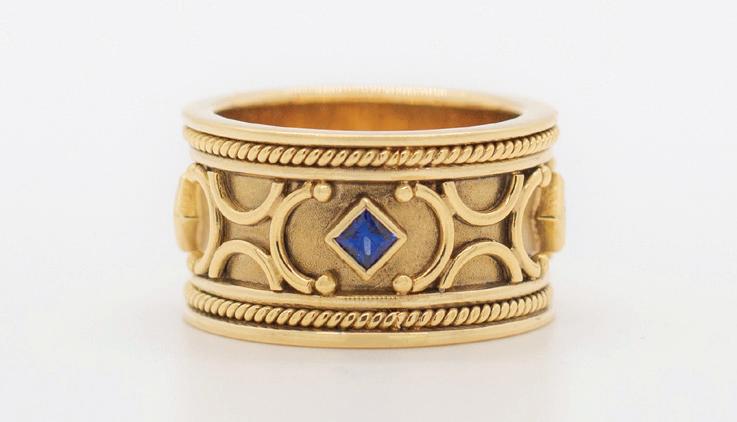






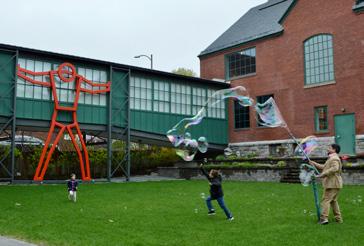
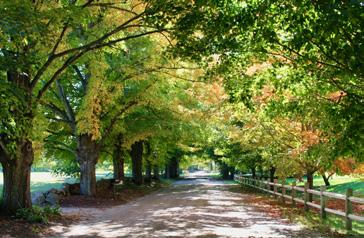
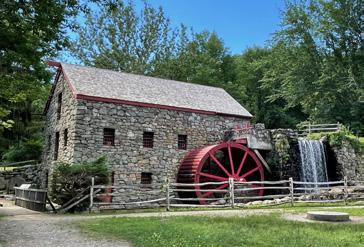
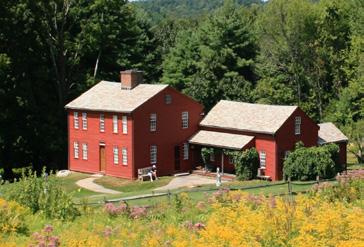
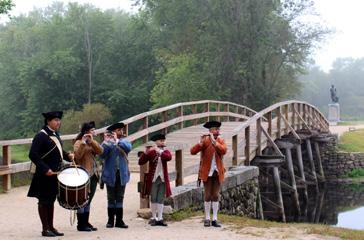
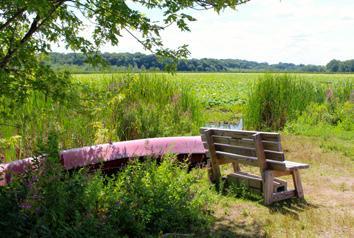
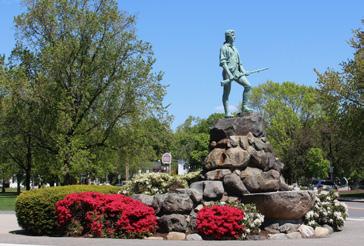
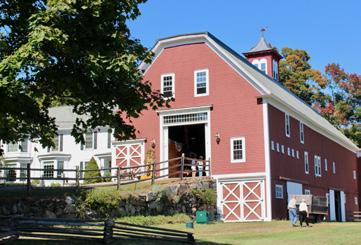


BY ALEXANDER CAIN
OOn February 26, 1775, a confrontation occurred in the port town of Salem, Massachusetts, today known as “The Salem Affair.” Although many historians gloss over this event, it nearly triggered the start of the American Revolution and accelerated Massachusetts’ wartime preparations.
The Salem Affair resulted from General Thomas Gage’s desire to locate and recover four missing pieces of brass cannon. On the eve of the American Revolution, brass cannons were considered “weapons of mass destruction.” They were light, easily maneuverable, and deadly. In September 1774, four of these weapons were stolen while under guard and smuggled out of Boston. In mid-February 1775, Gage learned that “twelve pieces of Brass Cannon” were located in Salem’s seaport community. Shortly after that, he learned that the “Field pieces [were] in an old store, or Barn, near the landing place at Salem, [and] are to be removed in a few days.”1
However, Gage’s intelligence was wrong. The cannons in Salem were old iron French pieces purchased in 1774 by Colonel David
Mason of Salem.
Afterward, he had Robert Foster, a local blacksmith, mount them to carriages.
The guns were stored in Foster’s shop along the North River and were readied for service in case war with England commenced.
The general was unaware that the pieces were old iron guns and was convinced that the four missing brass cannons were stored in the seaport community. Desperate to recover them, he ordered Lt. Colonel Alexander Leslie and 240 soldiers from His Majesty’s 64th Regiment of Foot to sail from Castle William in Boston Harbor to Marblehead. The strike force would
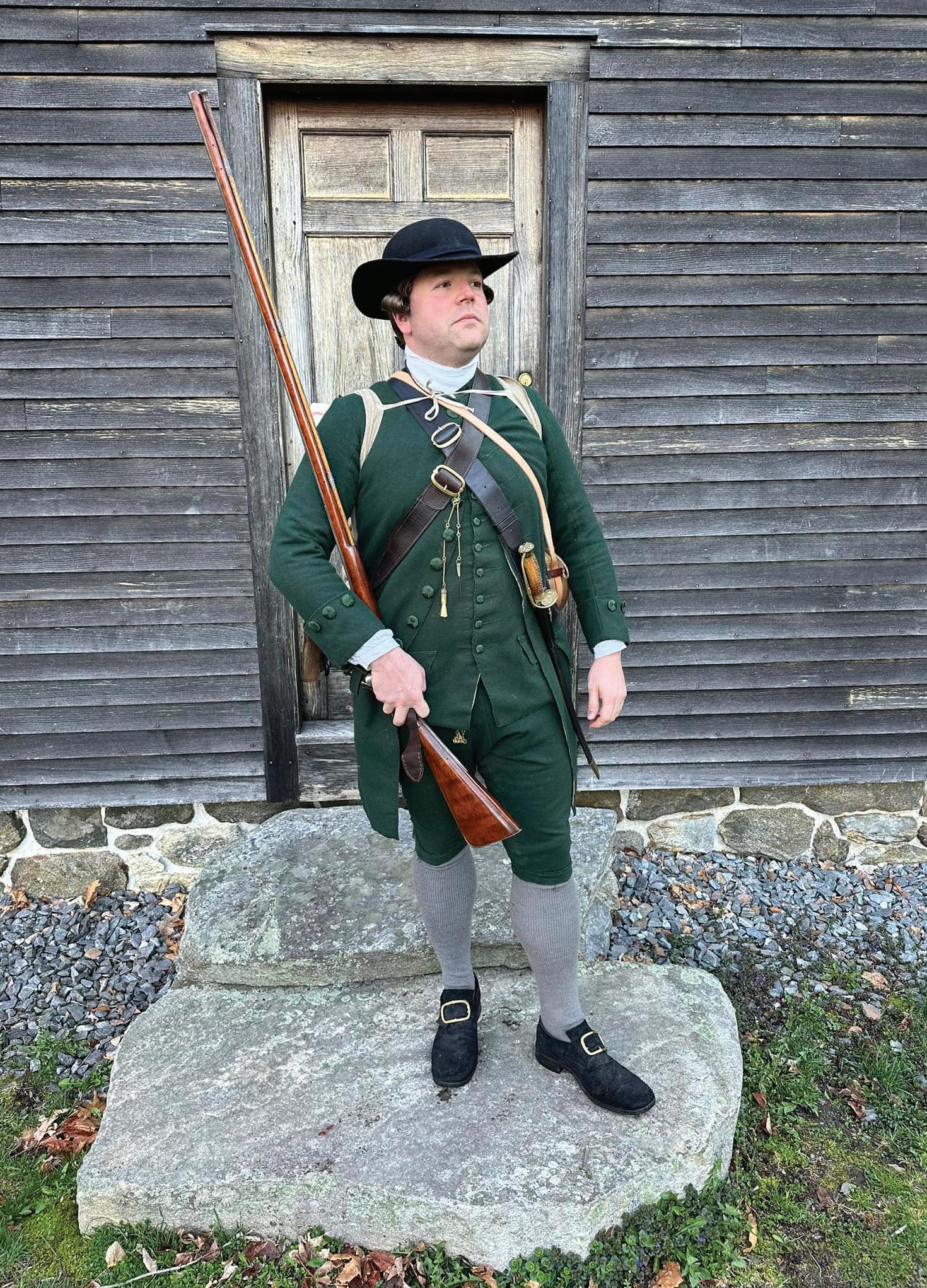
On the afternoon of February 26th, at two o’clock, a Royal Navy vessel anchored off the coast of Marblehead. Since it was a Sunday, many locals attended afternoon religious services. The troops landed and commenced a quick march towards Salem.
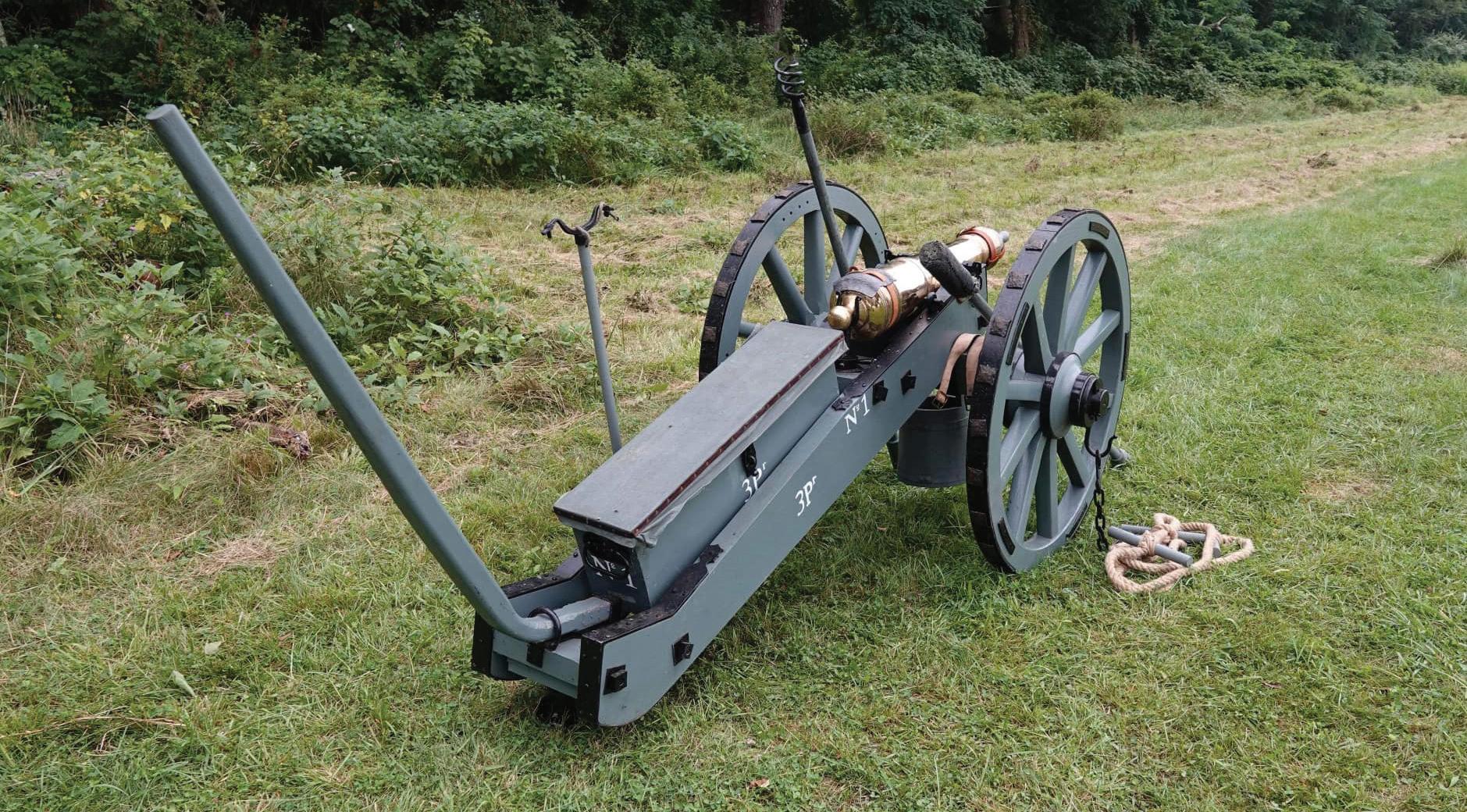
Of course, the operation was almost immediately detected, and news reached Colonel Mason that “troops were marching into the town to take possession of his guns.” In turn, Mason raced towards Foster’s blacksmith shop. En route, he stopped at Salem’s North Church to announce, “The Regulars are coming after the guns and are near Malloon’s Mills!” Many churchgoers assisted Mason and Foster in hiding or relocating the cannons. They raised a drawbridge over the North River, preventing the Regulars from accessing Foster’s blacksmith shop. 2
When Leslie’s strike force arrived, the Salem residents and the troops had a tense standoff. The colonel demanded that the drawbridge be lowered. Foster and Mason
refused. In response, Leslie contemplated aloud whether he should order his troops to fire into the civilian crowd. Some of his soldiers tried to seize a pair of gondolas moored in the North River, but the residents got to the boats first and purposely sank them. Other Regulars got into a shoving match with some of the townsmen, resulting in Joseph Whicher being slightly scratched with the tip of a bayonet.
At the height of the confrontation, Mason loudly announced that alarm riders had been dispatched and Essex militia companies would converge on the town in mere hours. Violence seemed inevitable. Suddenly, the Reverend Thomas Barnard stepped forward to defuse the situation and negotiate a compromise. Aware that the cannons were long gone, Barnard suggested that the bridge be lowered. Leslie, in turn, “pledged his honor he would march not above thirty rods beyond it, and then immediately return.”3 The colonel would not search for the cannons. All parties agreed to the proposal. The 64th marched across the bridge and then marched for Marblehead empty-handed.
As the troops passed through Marblehead, Sarah Tarrant, in one of the houses near the regiment’s landing site, called out, “Go home and tell your master he has sent you on a fool’s errand and broken the peace of our Sabbath.” One of the soldiers pointed his musket at her, and she exclaimed, “Fire if you have the courage, but I doubt it.”4
The troops sourly boarded their transport and sailed back to Boston.
One of the more humorous stories from the Salem Affair hails from Newburyport. On the eve of the American Revolution, Newburyport had no less than nine military companies in its community: four militia companies, two minuteman companies, two “private” companies composed of the town’s elite, and one private artillery company that was uniformed. In the late afternoon of February 26th, an alarm rider arrived in Newburyport with news of the Salem Affair. The nine military units all mobilized and marched for Salem. It appears the men advanced as far as Rowley when they received word that the confrontation was over. The Newburyport soldiers turned around and stopped at the first tavern they found. While there, they
raised their glasses to countless patriotic toasts and drank the tavern dry. The men then promptly left without paying their tab. The poor tavern keeper kept writing to the Newburyport selectmen for the next two years, asking the town to reimburse him. At first, the town ignored his pleas, but eventually, the selectmen reluctantly agreed to repay the bill.5
General Gage, stung by the failure of his operation, would later report, “The circumstance of the eight field pieces at Salem led us into a mistake, for supposing them to be brass guns brought from Holland, or some of the foreign isles, which report had also given reasons to suspect, a detachment of 400 men under Lieut. Col. Leslie was sent privately off by water to seize them. The places they were said to be concealed in were strictly searched, but no artillery could be found. And we have since discovered that there had been only some old ship’s guns, which had been carried away from Salem some time ago.”6
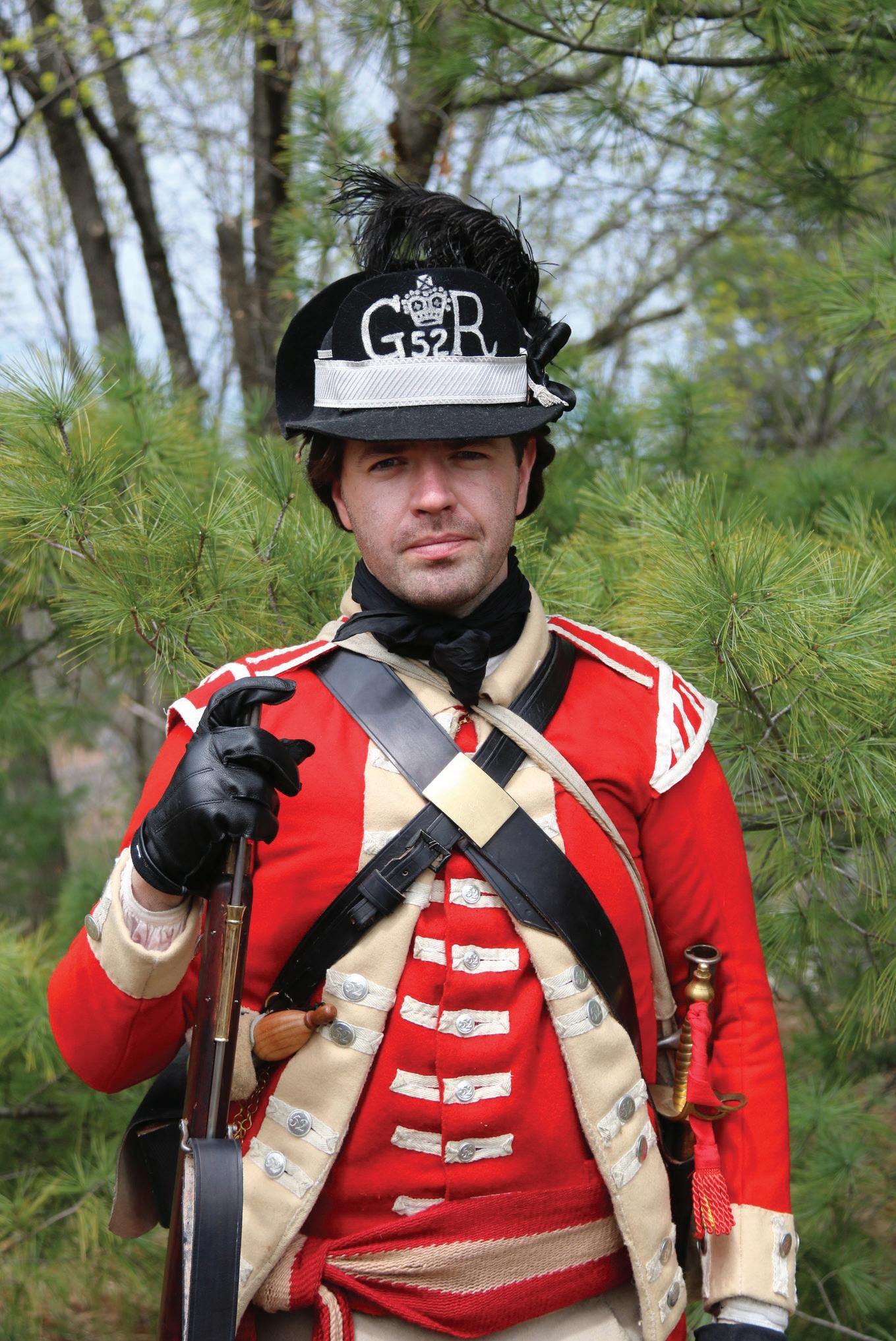
1 Thomas Gage, Intelligence from unidentified writer, February 24, 1775, in James Duncan Phillips, “Why Colonel Leslie Came to Salem,” Essex Institute Historical Collections Volume XC, October 1954 (Salem: Newcomb & Gauss Co., 1954), 314.
In the days after the encounter, Salem quickly moved to relocate the guns.
According to the March 3, 1775, edition of the Essex Gazette, residents reported, “Pieces of cannon were removed out of this Town, to be out of the way of Robbers.”7 By mid-March, the guns were relocated to Colonel James Barrett’s farm in Concord, setting in motion the fateful events of April 19, 1775.
Alexander Cain is the Director of Career and Technical Education for a Massachusetts non-profit and frequently lectures on the military and social influences of April 19, 1775. He owns the critically acclaimed blog and podcast “Historical Nerdery.”
2 William Gavett, February 26, 1775, “Account of the Affair at the North Bridge,” Proceedings of the Essex Institute, Volume I, 1859 (Salem: Essex Institute Press, 1859), 126-128.
3 Ibid.
4 Ibid.
5 The Essex Journal And Merrimack Packet, Wednesday, March 1st, 1775.
6 General Thomas Gage to Lord Dartmouth, 4 March 1775, Thomas Gage Papers, American Series 1755–1775 (William Clements Library, University of Michigan), 1:394.
7 Essex Gazette, March 3, 1775; John L. Bell, The Road to Concord: How Four Stolen Cannons Ignited the Revolutionary War (Yardley, PA: Westholme Publishing, 2016), 133.
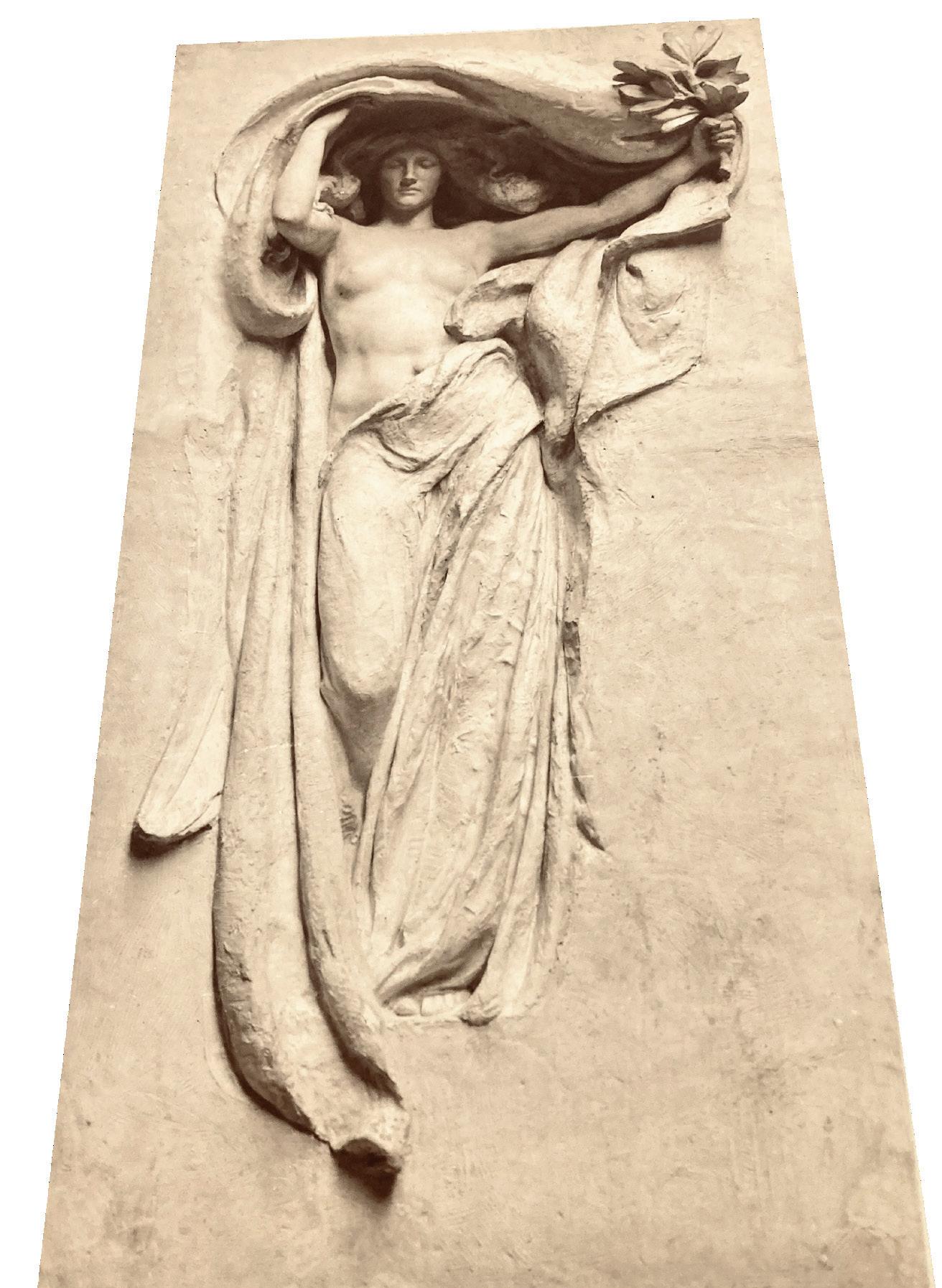
HHe was 22 years old, did not have an art portfolio, and was little known in the art world around Boston. He had received one month of art instruction from two separate teachers: May Alcott in Concord, Massachusetts, and John Q. A. Ward in 1870 in New York. In 1871, he took “art anatomy in connection with sculpture and painting,” from William Rimmer of Brookline for “two winters,” followed by brief instruction from William Morris Hunt. He was now twenty-one and about to be catapulted into an unexpected and illustrious career. Who was this young, inexperienced sculptor of the Minuteman statue?
Daniel Chester French was born on April 20, 1850, to Judge Henry Flagg French and Anne Richardson French in Exeter, New Hampshire. He spent his younger years in Cambridge and Amherst and moved to Concord in 1867.
BY ANNE D. LOVELL
Urged by his father, Daniel entered Massachusetts Institute of Technology in 1867 for a formal education at seventeen years of age. Science, however, was not his forte—he failed chemistry, algebra, and physics and went back to work on the family farm the following summer. His career began unheralded with the help of May Alcott (1840–1879), the sister of Louisa May Alcott. He remembers: I had been whittling and carving things from wood and gypsum, and even from turnips, as many boys do, and as usual, ‘the family’ thought the product remarkable. My father spoke about them to Miss Alcott, as the artist of the community, and she, with her ever-ready enthusiasm, immediately offered to give me modeling clay and tools. I lost no time… in experimenting with the seductive material, although I didn’t even know how to moisten it.1
How did Daniel Chester French progress from whittling and carving with wood and turnips to creating the emboldened Minuteman statue, that of a patriot and farmer that stands heroically on the west bank of the Concord River at the North Bridge, to the iconic nineteen-foot figure of Abraham Lincoln in the Lincoln Memorial in Washington, D.C.?
In 1872, a Monument Committee was formed at the Concord Town meeting, tasked with determining what would be the most
appropriate monument on the west bank to honor those who fought on April 19, 1775.
The Centennial was three years away. Many suggestions were given, and a statue of a minuteman was chosen. It received approval. Now, how to find someone to make such a monument? The answer was to sponsor a competition.
“Daniel was reluctant to enter into competition with contemporary artists.” He had little experience. His father, Judge French, persuaded Daniel to at least try. With his father’s support, Daniel worked on a design that would best give voice to the spirit of the minutemen. He made sketches and a clay model and in 1873 took them to Mr. Keyes and Mr. Emerson of the committee. They liked what they saw and supported Daniel’s design. His sketches and clay model were presented at the town meeting in November. After much discussion, Daniel was commissioned to make a plaster study. He was allotted $500 to make the cast. However, he was to contribute free labor, materials, and any other expenses on his own. This last part of the commission was deemed fair as his skill was unknown and could be a career opportunity for him if the statue turned out well. Daniel accepted and now began his first professional assignment. A studio? He rented a room on the 3rd floor of the Studio Building in Boston. A model? He borrowed a plaster cast of Apollo Belvidere from the Boston Athenaeum and used himself in a full-length mirror for some of the more difficult views.
With an artist’s vision and insightful wisdom for a twenty-two-year-old, Daniel stopped pursuing that path. He felt that the representation of a minuteman would best tell the story by reproducing the image of one of the minutemen, not Apollo Belvidere
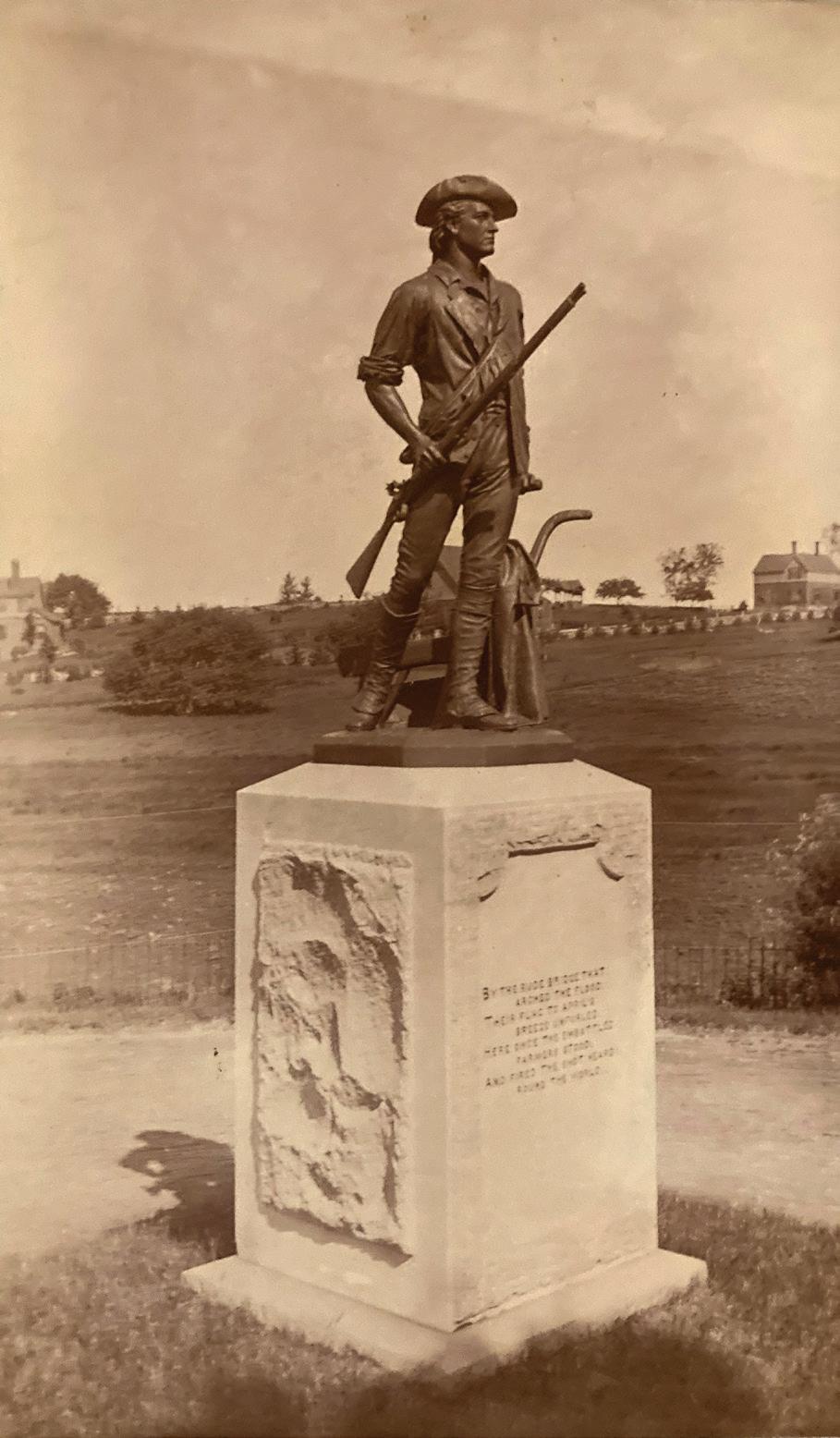
or himself. He now began a ‘search’ to find Captain Isaac Davis of Acton, thirty years old, who gave his life, on April 19, 1775. Daniel wanted Isaac’s spirit and figure to speak to the people that would come to see the statue. With the research support of his father, Daniel had success. The judge spent time in Acton trying to find as much information about Captain Davis as he could, especially trying to find a portrait of Davis. No portrait of Davis was found; however, his father did bring back pictures of relatives and family information that gave Daniel some idea of facial likeness. He went back to work and modeled the form of the minuteman.
For authenticity, he asked for a living model in minuteman dress. Young men in Concord volunteered. He needed a man with a strong physique to help with wrists, rugged arms and muscled forearms, the lingering fingers on the plow; a strong farmer who worked the soil. For this man, he looked to Patrick
Harrington, who as a young man of twenty-three worked for the judge on their farm beginning in 1871.
Daniel finished the minuteman statue in September 1874. He wanted the historical authenticity of this statue to continue with its bronze casting. Calling upon Judge Hoar of Concord, Daniel had him use his influence to bring ten pieces of condemned cannon said to have been captured by New Englanders in the battle of Louisburg. These were shipped to the Ames Foundry in Chicopee, Massachusetts, melted down, and poured in the final casting. The statue was placed on the spot where Davis fell.
Daniel left for Europe to study in Italy before the centennial celebration in April 1875 took place and wasn’t at the dedication ceremony. He studied in Europe for several years after
which he returned and opened a studio in Washington, DC, as well as working in New York City.
In 1909, Daniel sculpted Mourning Victory, which is in Sleepy Hollow Cemetery in Concord, MA, a memorial to three brothers who perished in the Civil War. His most well-known sculpture is of Abraham Lincoln, nineteen feet high, in the Lincoln Memorial in Washington, DC., finished in 1920.
Daniel Chester French died on October 7, 1931, at Chesterwood, after a brilliant career. His estate was bequeathed by his daughter to the National Trust for Historic Preservation in 1969 and is open to the public for tours.
Anne Lovell was born on a 225+ year old farm, and history has been a part of her life from a young age. She is a retired educator, most recently tutoring in reading and writing for fourth through eighth grades. Taking a History of Concord course set Anne on a volunteer path with the National Park Service, with a concentration on the Wayside.
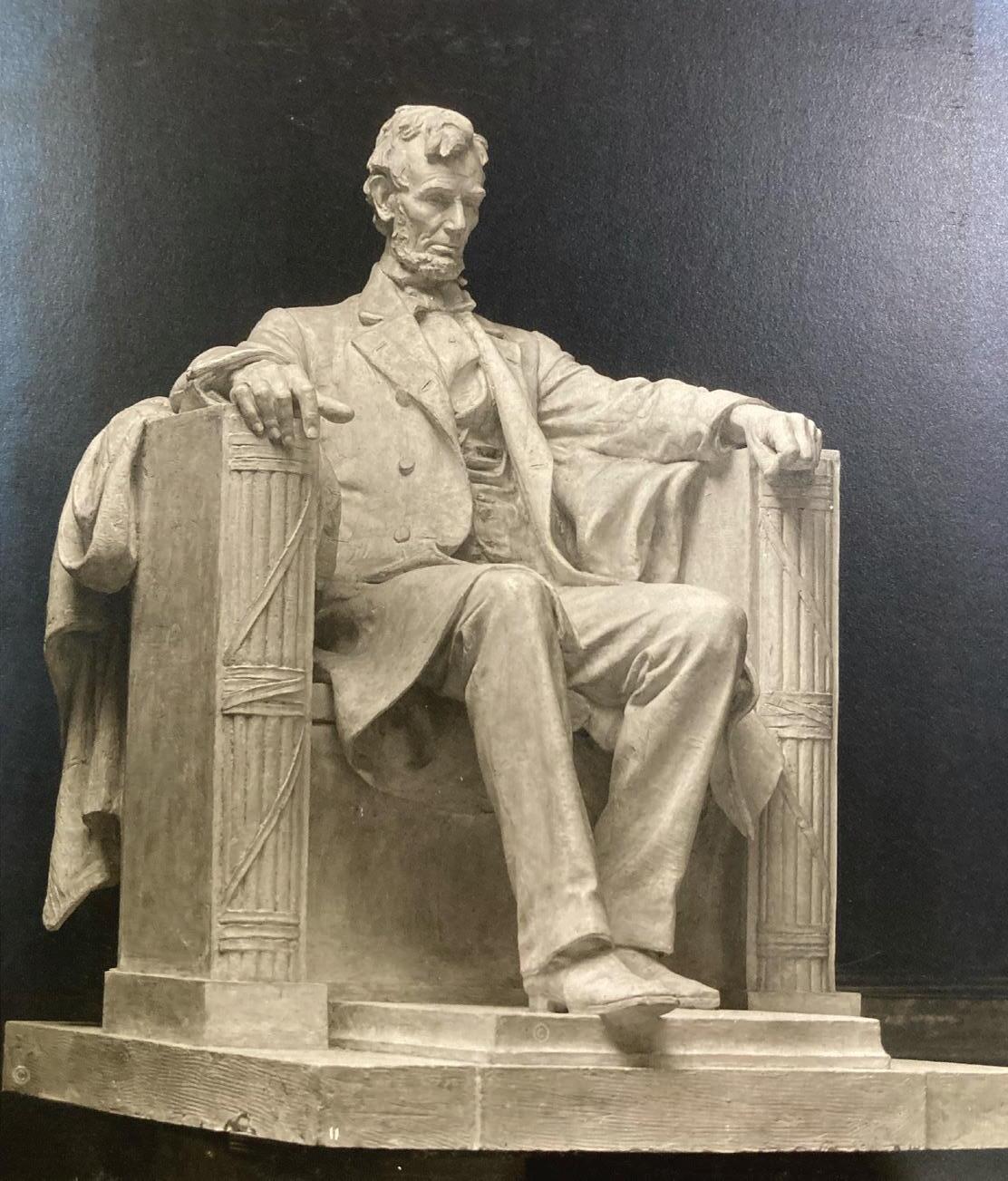
1 DCF, (June 14, 1926), Prelude to May Alcott: A Memoir by Caroline Ticknor (Boston: Little, Brown and Co., 1928), p. xx.
Harold Holzer, author of biography Monument Man
The Life and Art of Daniel Chester French, Hudson, NY: Princeton Architectural Press, 2019.
Library of Congress; April 2
‘Today in History’ Robbins, Roland Wells, author of The Story of the Minuteman, The Country Press, Inc.
https://historicaldigression. com/2012/05/14/melvinmemorial-to-threebrothers-lost- in-civil-war/
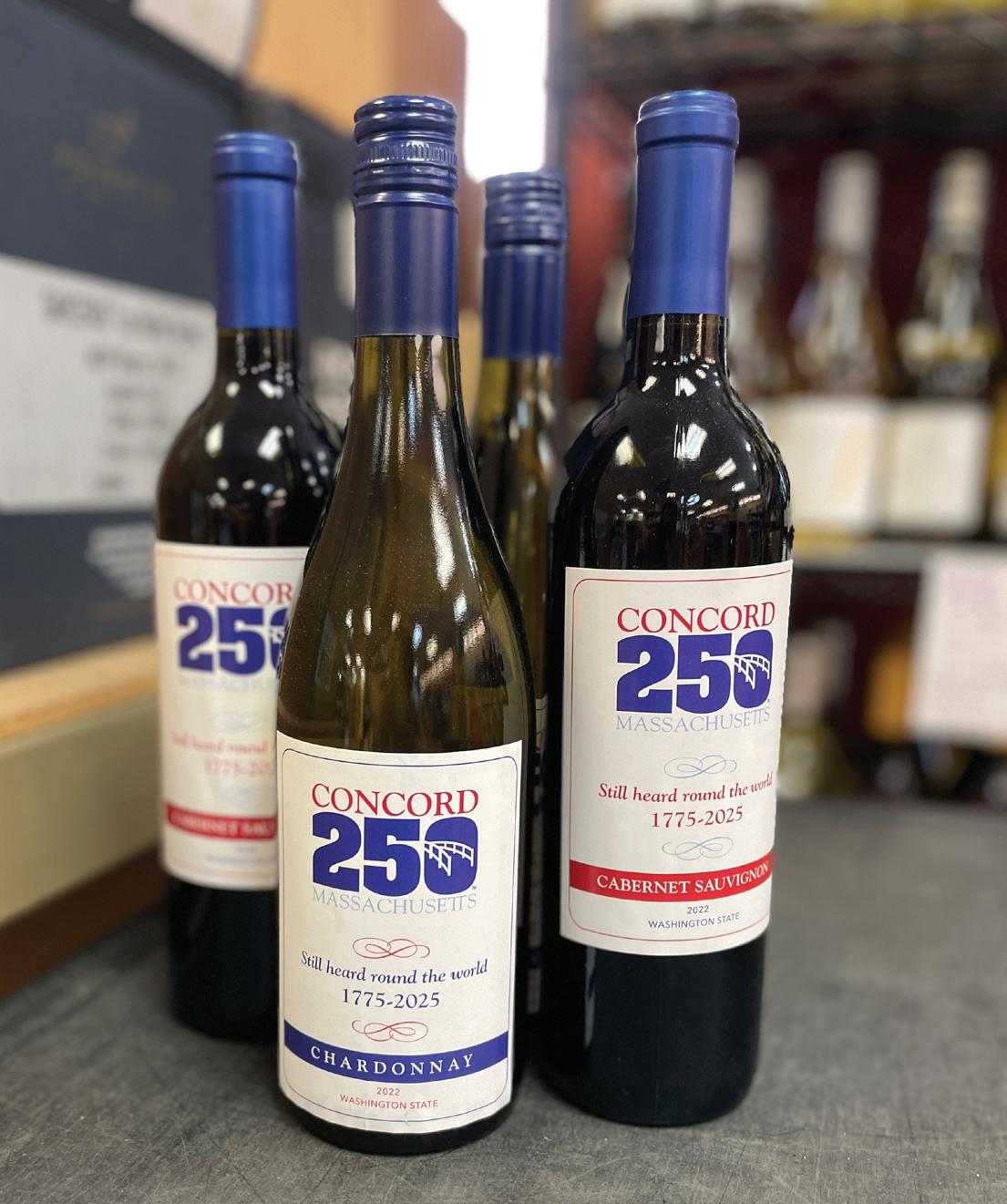


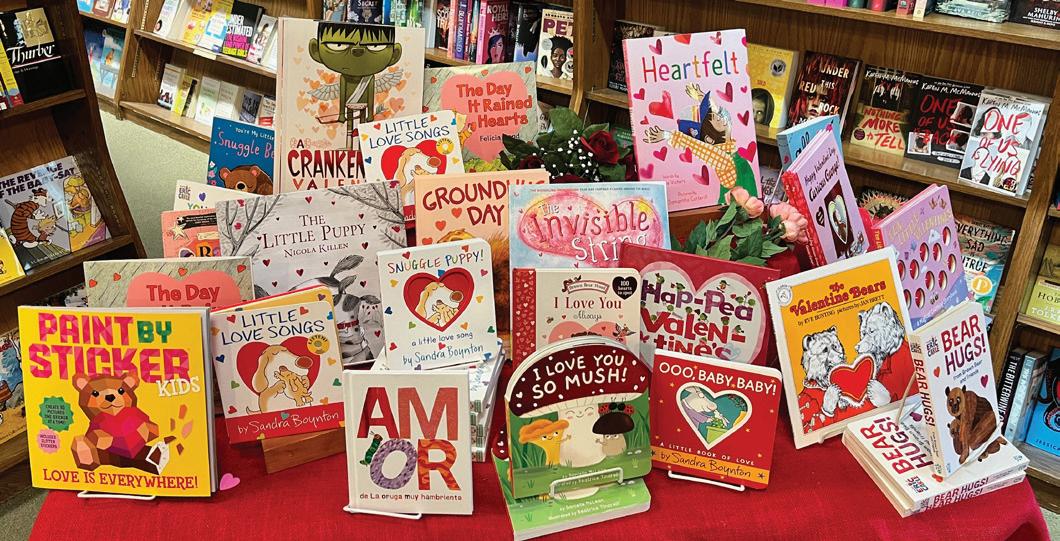
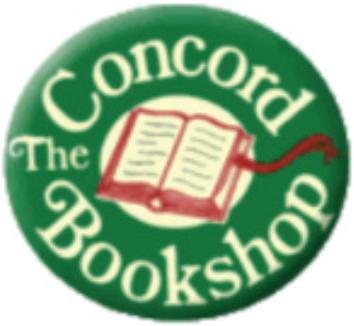
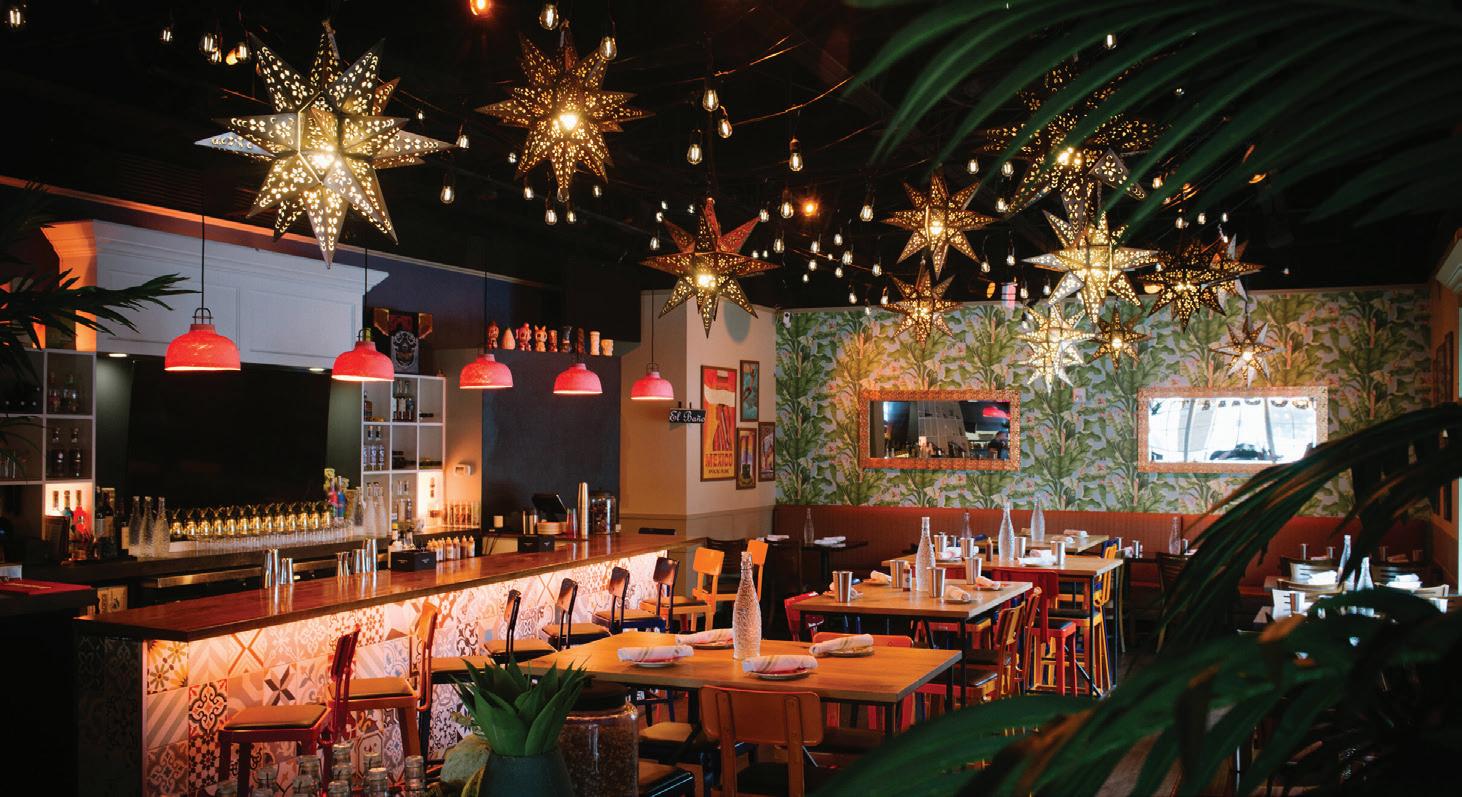





BY JAIMEE LEIGH JOROFF
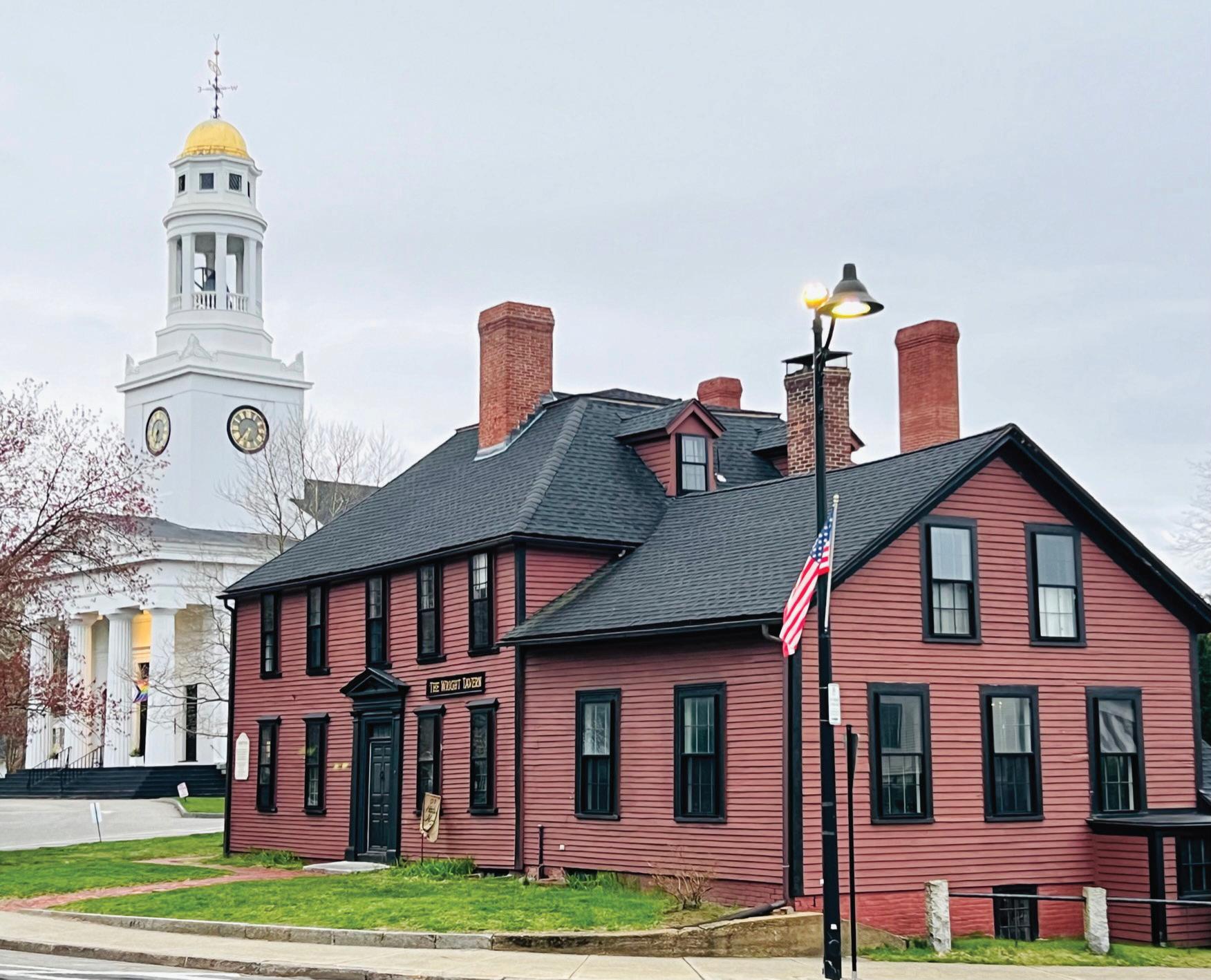
AAs the 250th Anniversary of the Battles of Lexington and Concord approaches, a witness house sits at the top of Concord’s Main Street, full of stories of rebels and traitors whose actions shaped the America we know today. It is the Wright Tavern, a red wood building with black shutters; one of the last standing colonial-era taverns from that fateful day of April 19, 1775.
The tale of this tavern begins with a dangerous hole in the ground. On Concord’s founding in 1635, Reverend Peter Bulkeley, a Puritan minister who fled England to avoid religious persecution, owned property in Concord center including a grist mill in the area of today’s Concord Main Street Market. The mill was powered by the brook that runs through Concord center. As described in Concord historian George Tolman’s 1901 pamphlet “Wright’s Tavern,” millers required gravel to shore up the dam
controlling the brook’s flow of water. The gravel was sourced from a pit dug on the edge of Bulkeley’s property next to the town meeting house. The gaping pit was a danger and an eyesore. Following Bulkeley’s death, the land was eventually gifted to the town with the grassy field in today’s Monument Square designated as a training ground for the local militia. The gravel pit was abandoned but the open hole remained until the town sold it in 1747 to Militia Captain and Town Selectman Ephraim Jones. Turning the pre-dug hole into a foundation, Jones quickly built a house on the site, opening it as an inn/tavern in competition with a nearby establishment owned by Thomas Munroe. Town selectmen who had once gathered over drinks at Munroe’s, moved their business to their fellow selectman Jones’ tavern and settled into decades of meetings in this building.
In 1751, Jones sold his establishment to Thomas Munroe and built another house just up the road (by Keyes Road and the Old South Burying Ground). After Jones’ death in 1756, his son, Ephraim Jones Jr., opened this building as another inn/tavern.
When Munroe died in 1766, his tavern was sold to Daniel Taylor. As Taylor continued the business, and Ephraim Jones Jr. did the same in his tavern a block away, the 1770s saw growing discontent with oppressive laws and taxes imposed by distant English Parliament.
By the spring of 1774, Parliament dismissed Massachusetts Governor Hutchinson and appointed Military Governor Thomas Gage in his place. A series of “Intolerable Acts” were imposed upon the colonies and further dissent boiled. In September 1774, Governor Gage ordered that, due to “recent tumultuous behavior,” he would not meet with the

General Court of Massachusetts and their meeting should be postponed.
The colonists ignored Gage and decided to form their own government, free of English control. In October 1774, the first Massachusetts Provincial Congress met in Concord, assembling at the meeting house and spending time in Taylor’s tavern next door. The delegates held elections appointing colonists to positions in their new government, including James Warren, Esquire, as a Delegate to Rhode Island, and Doctor Benjamin Church as a member of the Committee of Safety. One of the committees formed was tasked to “consider what is necessary to be done now for the defence and safety of the province.” That committee’s decisions would result in military stores being stockpiled in Concord to supply a Continental Army.
A month later, King George III met with Parliament to address what His Majesty described as a “daring spirit of resistance unhappily prevail[ing] in the Province of the Massachusetts Bay.” Parliament responded that they would “use every means in their power” to maintain His “Majesty’s supreme authority.”
Concord’s Patriot Minister William Emerson observed the result of Parliament’s resolution, writing that, on April 19, 1775, “between 1 & 2 [a.m.], we were alarmed by the ringing of the bell” in the meeting house next to Taylor’s tavern. Reverend Emerson, minutemen, and militia rushed to the town green outside of Taylor’s tavern which, for that year, was being run by Amos Wright, a hired barkeep. Here, Emerson and the townspeople learned that King’s “troops to the number of 800” were on the march from Boston to Concord.
Under command of Lieutenant Colonel Francis Smith and Major John Pitcairn, the column arrived in Concord and spread out to search the town for the rumored hidden
Centennial Map of Concord 1775-1875 showing Wright and Jones’ Taverns Blaisdell, H. W. “Centennial map of Concord, 1775-1875.”
Map. Boston: J.H. Bufford’s Sons Lith., [1875].
military supplies while the Concord men took up a vantage point on a hill above the North Bridge. What happened next in Taylor’s and Jones’ taverns falls into the category of legends of Concord’s frantic efforts that morning to protect town valuables and secrets critical to the Patriot cause. It is commonly believed that Lieutenant Colonel Francis Smith set up a command post in Taylor’s tavern, while Major Pitcairn proceeded down Main Street to Jones’ establishment where a confrontation occurred and two cannons were discovered hidden in the nearby jail yard managed by Jones.
Perhaps looked out of by barkeep Amos Wright, the windows of Taylor’s tavern would have reflected flames as the British soldiers searching the town piled confiscated military supplies into a heap on the town green and burned them, the rising embers accidentally setting the town house roof ablaze and causing the militia on the hill above the bridge to believe the King’s troops were burning down Concord. The battle at the North Bridge occurred and British troops retreated in disarray to Concord Center, chaotically reforming their column near Taylor’s tavern before retreating to Boston.
and shared details of the colonists’ military preparations. Wrote Warren, “The Doctor having formed an infamous connection, with an infamous hussey” gave the letter to her to deliver for him. The lanterns that hung in the North Church on the night of April 18, 1775, were brighter than this idea, for “the hussey” gave the letter to an ex-admirer to deliver for her, but he opened it instead and turned it over to General George Washington. Church had dug himself a hole that could not be transformed into any foundation to save himself. He was arrested by the Patriots but spared from execution, banished instead and put on a ship to the Caribbean. The ship, and all souls aboard, disappeared, likely lost at sea.
Like the disappearance of Dr. Benjamin Church, over time, taverns and inns that once stood in Concord disappeared. But the tavern built over the gravel pit at the top of Main Street survived. Perhaps for its association with barkeep Amos Wright on the infamous April 19, 1775, the tavern that Ephraim Jones built became known as the “Wright Tavern.”
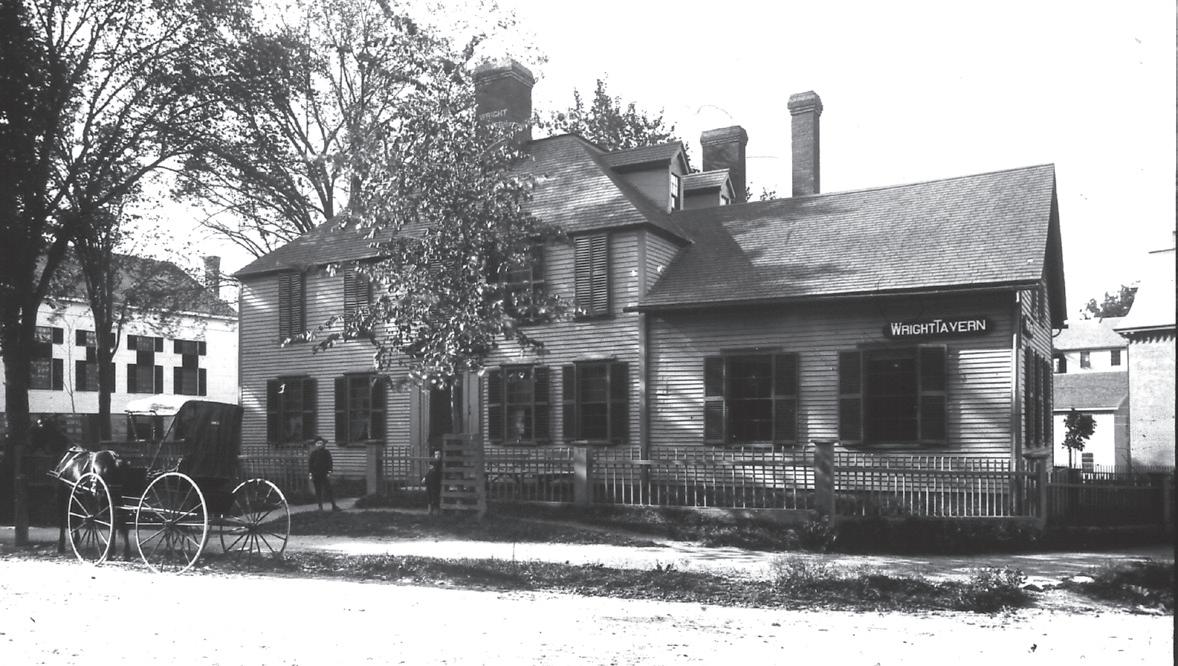
As war began with England, tavern owner Daniel Taylor’s name appears in military records among other Concord men loyal to the Patriots’ cause, but not all once associated with Taylor’s tavern were as loyal as they seemed
In October of 1775, James Warren wrote a concerning letter to John Adams, describing the interception of a letter from Doctor Benjamin Church. Written in code, Church’s letter was to Major Cane, a British Army officer and relative of General Thomas Gage,
Today, the tavern is operated by the Wright Tavern Legacy Trust, which is working to preserve its history and open it to the public. Perhaps best described by James Warren’s words in his letter to John Adams, the Wright Tavern remains a witness to a “poison[ing] from New England [that] had got in use the Damned Absurd Word Liberty.”
The author extends thanks to Concord Library Special Collections and Beth van Duzer for research assistance.
A Concord native, Jaimee Joroff is manager of the Barrow Bookstore in Concord Center, which specializes in Concord history, Transcendentalism, and literary figures. She has been an interpreter at most of Concord’s historic sites and is a licensed town guide.
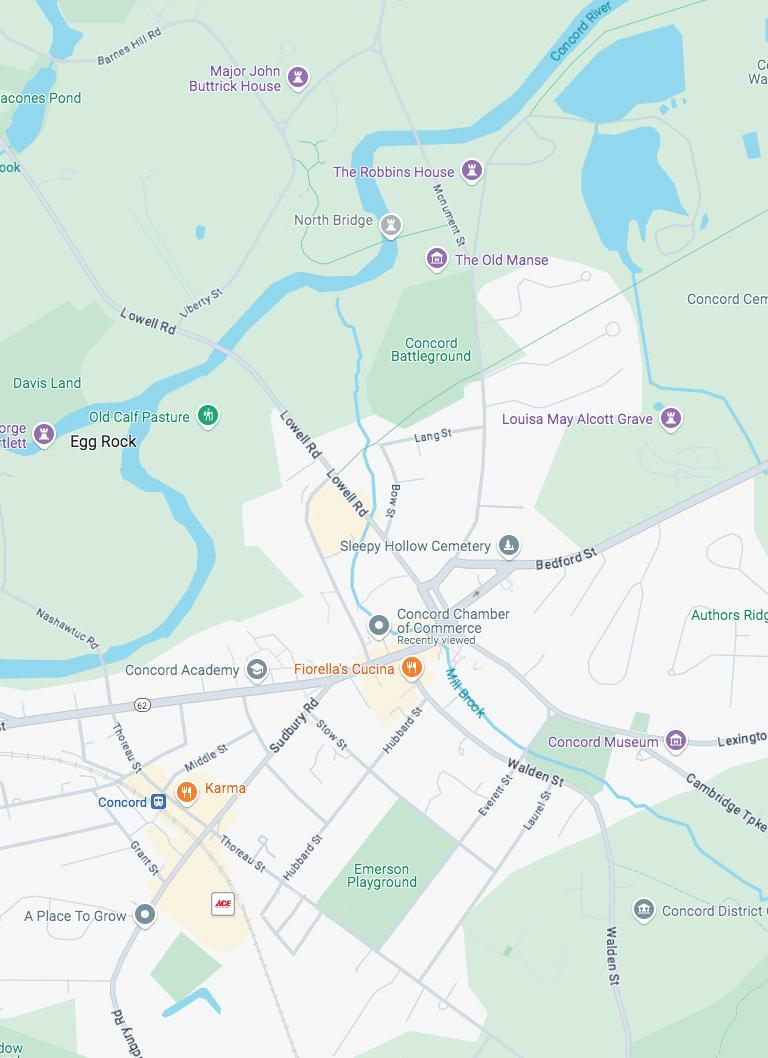
6:00 am: Dawn Salute (on the hill above the Old North Bridge)
8:30 am: Parade Begins
9:30 am (approx): Old North Bridge Ceremony (go to concord250.org for details)
1:00 pm (approx): Parade Ends
Watch for information coming soon about events around town after the parade.
Information of note:
Road closures will begin Friday April 18th, 6 pm and remain through Saturday April 19th, 11 pm. Reminder, it is Easter weekend.







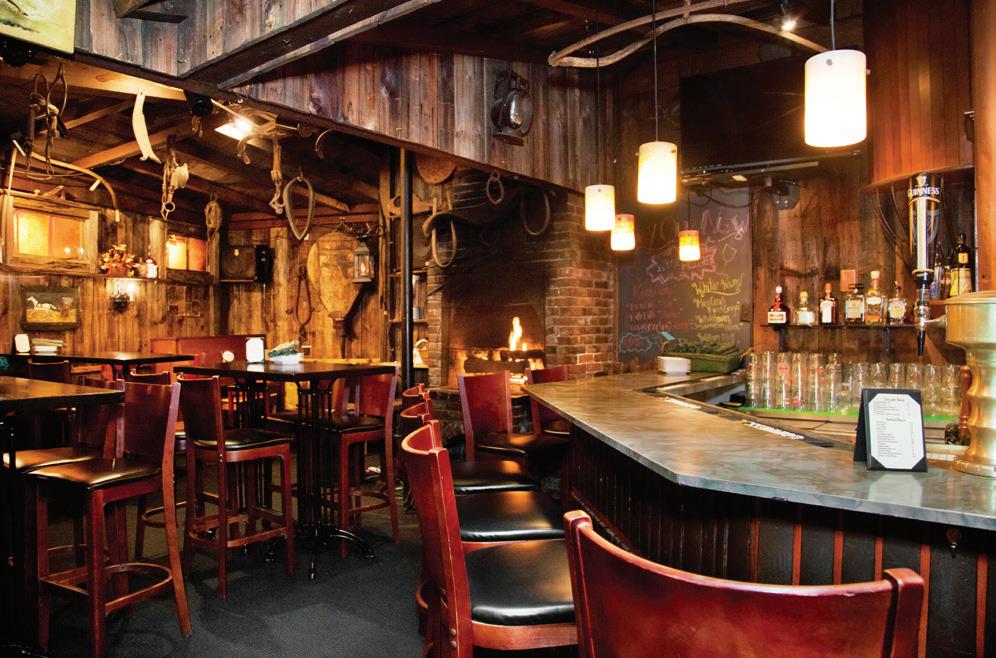
BY ALEXANDER CAIN
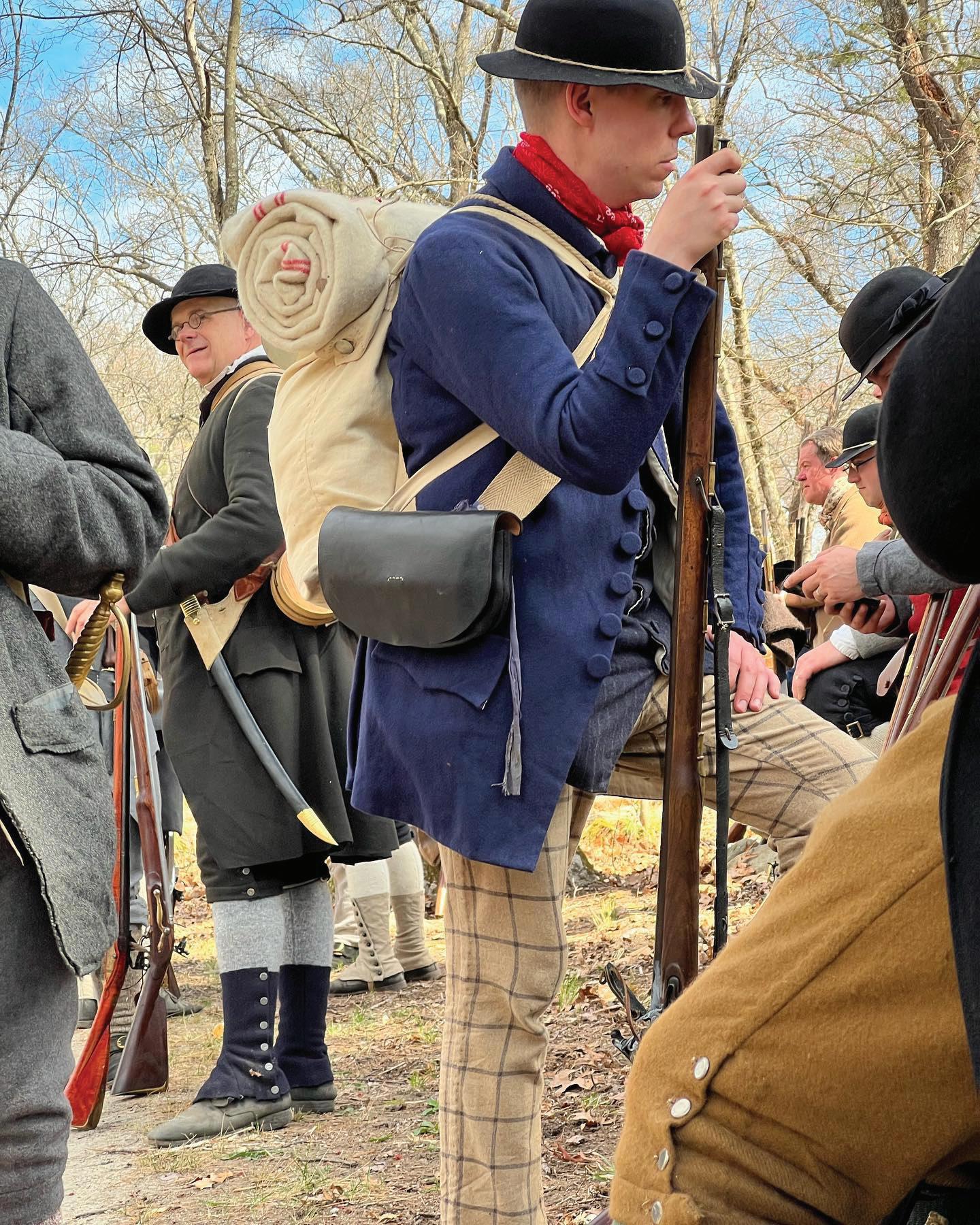
SSince 2000, many reenactors have asserted that haversacks were commonly worn by Massachusetts militia and minute companies when they fielded against British forces on April 19, 1775. The two most common arguments advanced have been that militia and minutemen were in possession of haversacks because they were previously issued to Massachusetts troops during the French and Indian War, or that the item was acquired on the eve of the American Revolution from a third-party source. Unfortunately, neither argument is valid. To begin with, what was a haversack?
According to Bennet Cuthbertson, author of Cuthbertson’s System for the Complete Interior Management and Economy of a Battalion of Infantry, a haversack was made
of “strong, coarſe, grey linen” and carried a soldier’s “bread and provisions on a March.”
During King George’s War and the French and Indian War, Massachusetts troops received a variety of military supplies from both His Majesty as well as the colony itself. While British supply records are silent on the issue, a search of the Acts and Resolves, Public and Private, of the Massachusetts Bay, between 1741 and 1764 reveals a single instance in which the Massachusetts legislature authorized the colony to issue haversacks to provincial troops. Specifically, in 1761, the colony ordered “the commissary general to provide for each of said soldiers one haversack and one wooden bottle containing about three pints, also a large hatchet to every ten men, and a tin kettle
containing about two gallons to every six men in each of said regiments.”
Cuthbertson noted that this item was “always issued as part of the Campequipage” and was considered regimental and not individual property. Thus, at the end of a campaign season, it would have been returned to the regimental or government stores. While in storage it was likely the bags would have rotted, been eaten by rats or other vermin, or been disposed of at the end of the campaign season.
I asked noted historian and expert tailor Henry Cooke about his thoughts on the issue. As Mr. Cooke noted, haversacks were typically issued on an as-needed basis. He also pointed out that haversacks were only issued to troops who were on the move. If a soldier was located at a fixed position, for example as part of a garrison, there would be no need for a haversack to be issued.
Interestingly enough, in 1761 the theater of war had shifted from North America to the Caribbean. As a result, most, if not all Massachusetts provincial troops were stationed at fortifications in Nova Scotia and New York and did not participate in military campaigns. As a result, it is unlikely haversacks ever made their way into soldiers’ hands and instead remained in storage.
their rated or fair market value. Interestingly, estate inventories from 18th century Middlesex, Essex, and Norfolk counties reveal extensive information about male clothing and their worldly possessions but yield no information about haversacks. For example, the inventory of the estate of Samuel Jones describes in detail a wide array of personal items, including one hat, three coats, five breeches, over eight shirts, and seven pairs of stockings. However, a haversack was noticeably absent from the inventory list. Similarly, a review of the William Wilson estate details a wide array of personal items
being offered by commercial merchants. Furthermore, Massachusetts runaway descriptions that appeared in colonial newspapers between 1760 and 1776 make no reference to males wearing or carrying haversacks.

However, for argument’s sake, assuming haversacks were brought home by provincial soldiers at the conclusion of military service, why does the item not appear in Massachusetts estate inventories between 1761 and 1783?
Probate records comprise all materials related to a deceased’s estate. Documents often found in probate records include wills, administration accounts, and estate inventories. Of these documents, estate inventories are often the most significant as they list a person’s possessions at death and
and belongings, including “one staffe .one gun,” but fails to reference a haversack. The inventory list of Job Brooks went to great lengths to identify his worldly belongings and included references to insignificant items such as a hat case and garters. Unfortunately, a haversack was never identified amongst his personal clothing. Finally, the estate inventory of Captain John Parker of Lexington describes several military items, including a knapsack and powder horns, but makes no reference to haversacks.
A second common argument advanced is that haversacks could have been acquired from a commercial vendor or a third party. Unfortunately, this argument is not supported by existing documentation. A review of Boston, Salem, and Newburyport newspaper advertisements on the eve of the American Revolution yields no examples of haversacks
Is it possible that local towns or the Committee of Supplies provided its militia and minute companies with haversacks? Between October 1774 and April 1775, Massachusetts was in full wartime preparation mode. Towns and villages, as well as the Massachusetts Provincial Congress, scrambled to supply its minute and militia companies with muskets, cartridge boxes, bayonets, belting, blankets, and canteens. Conspicuously absent from this list of supplies were haversacks. The strongest evidence demonstrating that haversacks were not utilized by Massachusetts minute and militia companies in 1775 are the claims for lost property following the Battles of Lexington and Concord and the Battle of Bunker Hill. Militiamen submitted a wide array of compensation claims for items lost during both of these engagements. The list of discarded property included knapsacks, guns, shirts, coats, canteens, neckerchiefs, and even shoe buckles. To date, I have not encountered a single claim for a lost haversack.
Given the above, it is fair to conclude that haversacks never made their way into the ranks of Massachusetts militia and minute companies on the eve of the Battles of Lexington and Concord.
Alexander Cain is the Director of Career and Technical Education for a Massachusetts non-profit and frequently lectures on the military and social influences of April 19, 1775. He owns the critically acclaimed blog and podcast “Historical Nerdery.”
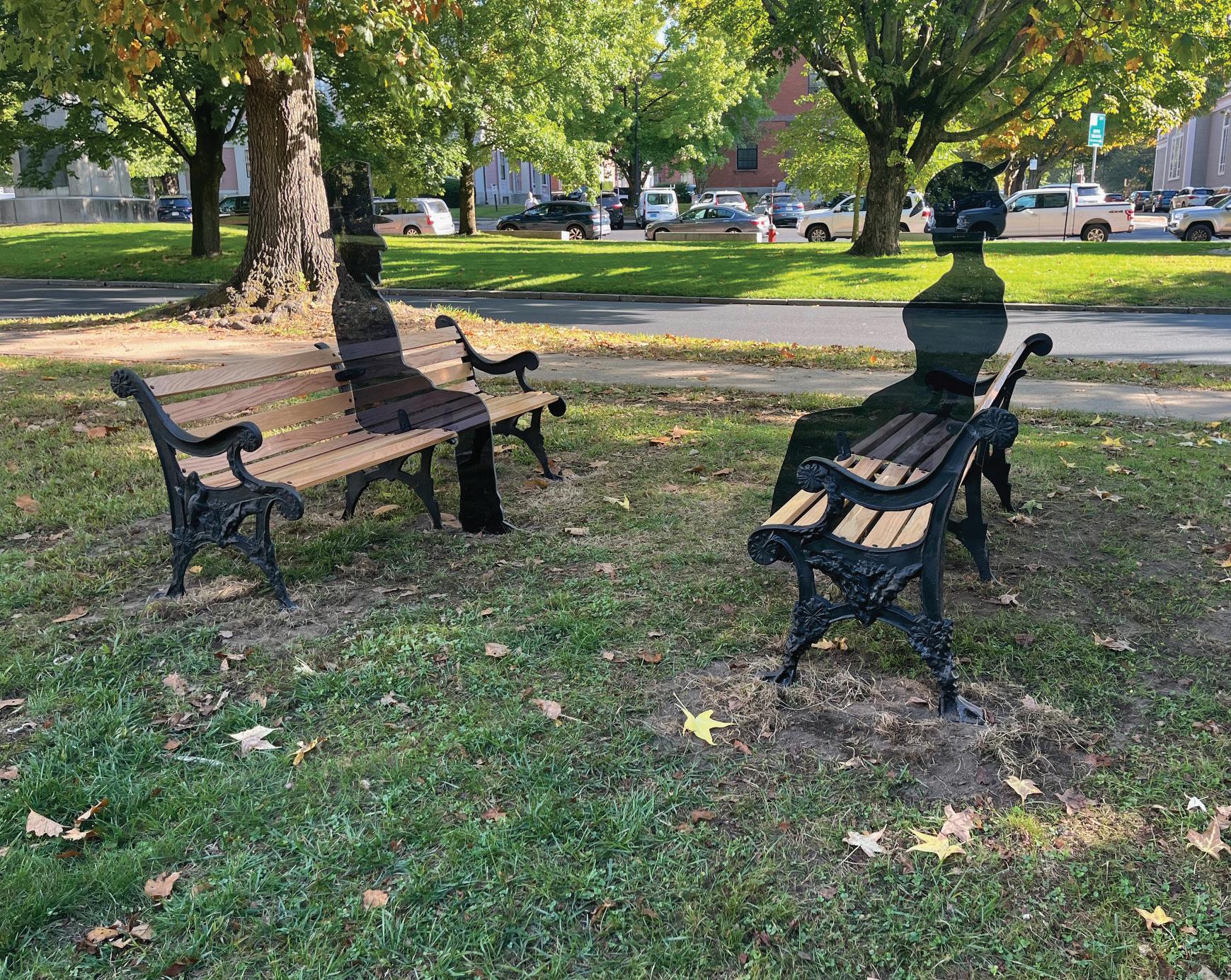
BY STEWART IKEDA
TThe semiquincentennial of the American Revolution is an exciting opportunity for the nation to reflect on and commemorate key historical milestones and figures of our founding – perhaps nowhere more so than in Concord and along the Battle Road. Fifty years ago, Concord marked the bicentennial with grand parades, balls, battle reenactments and dignitary visits celebrating revolutionary leaders, legendary midnight rides, and “the shot heard round the world.”
In 2025, the lively Concord250 Arts, Literature, and Music Subcommittee is looking to the arts to bring fresh and expanded perspectives to local history, elevate lessertold stories, and look ahead to the “next 250.” From Liz Helfer’s Freedom’s Silhouette interactive sculpture recently installed in Monument Square to newly commissioned musical compositions and more, local artists and cultural organizations are creatively reexamining history and bringing it into the now.
The Concord Museum will mark the semiquincentennial with a comprehensive series of 250th special exhibitions beginning with Whose Revolution, highlighting the competing and contradictory meanings of revolution during the period leading up to the war. It will examine the underrepresented
experiences of Loyalists, as well as enslaved people and Indigenous communities, to examine questions of liberty, sovereignty, and protest during the period – “revealing how the idea of declaring independence from England was far from inevitable.”
Several projects by The Umbrella Arts Center also seek to reexamine and broaden our understanding of colonial and revolutionary life through art. The New England premiere of Where We Belong (2/283/23) by Indigenous theater-maker Madeline Sayet follows her journey to pursue a PhD in Shakespeare in England, in the footsteps of Mohegan ancestors who traveled as ambassadors in the 1700s to help her people. Planned community engagement activities will also highlight art and experiences of Concord’s native Nipmuc and Massachusett tribes, including a concurrent exhibition of work by Nipmuc photographer Scott Strong Hawk Foster.
Another collaboration of The Umbrella with Walden Woods Project and The Robbins House is Weaving an Address, an
ambitious indoor/outdoor art installation featuring site-specific work based on lives of former Black inhabitants of Walden Woods. Curated by artist Marla McLeod, a host of prominent Black artists including Ifé Franklin, Ekua Holmes, Stephen Hamilton, and others will install work in both The Umbrella’s Allie Kussin Gallery and outdoors on historic Brister’s Hill, named for formerly enslaved Revolutionary War veteran Brister Freeman.
Also at The Umbrella, Concord250 and Concord DEI will present an arts-oriented event Honoring Patriots of Color on March 15 with the Town of Concord, Minute Man National Historical Park, and MA250, and premiere the documentary film, Concord’s Secret History, with talkbacks on April 12 and April 14.
And on May 17, The Umbrella will screen a trilogy of films by the Tufts University Half the History Film Project focused on local historical women. These include Margaret Lothrop and the Wayside (premiere screening with new score), a return engagement of Ellen Garrison: Scenes from an Activist’s Life, and the world premiere of Women of the Old Manse. These and other programs attempt to artistically recognize and honor the contributions of all the individuals who built this country, and imagine, as U.S. Semiquincentennial Commission Chair Rosie Rios urges, “what the next 250 years might look like for our children and the generations to come.”
One of sixty-two National Heritage Areas in the United States, Freedom’s Way works in partnership with the National Park Service to preserve and promote a unique regional identity revealed in the natural, cultural, and historical sites and stories of forty-five communities in Massachusetts and New Hampshire. Discover all the Freedom’s Way National Heritage Area has to offer at FreedomsWay.org.
Stewart Ikeda heads the Marketing & Strategic Communications team at The Umbrella Arts Center.
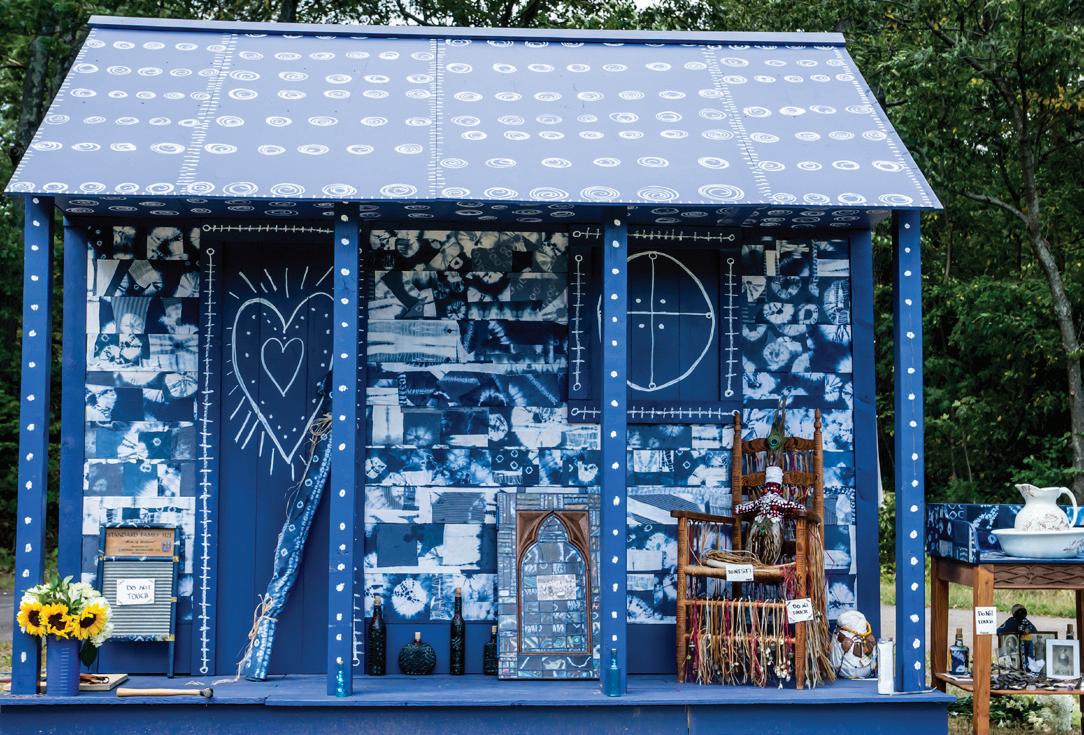


Discovering the Past Through Revolutionary War Monuments, Memorials, and Markers



TThe forty-five communities within the Freedom’s Way National Heritage Area were at the epicenter of the earliest debates regarding independence and the first battles of the American Revolution. Those events live on in the region’s rich tapestry of monuments, memorials, and markers commemorating those events.
Our top favorites are presented here as a great ‘road trip’ that you can take to dive into the exciting history of our area. Want to discover more? Visit Freedom’s Way National Heritage Area’s collection of more than 150 monuments, memorials, and markers at HowWeRemember.org - or scan the QR Code at the end of the article to download the complimentary app and start exploring!
Arlington Revolutionary War Monument
The nineteen-foot-tall granite obelisk commemorates those killed in Arlington, then known as Menotomy, during the bloodiest engagement of April 19, 1775. After the Battle of Menotomy, Jason Russell and eleven other colonists were interred in a mass grave. In 1848, their remains were reburied in a stone vault beneath the Revolutionary War Monument.
The inscription reads: Erected by the Inhabitants of West Cambridge, A.D. 1848, over the common grave of Jason Russell, Jason Winship, Jabez Wyman, and nine others, who were slain in this town by the British Troops on their retreat from the Battles of Lexington and Concord, April 19th, 1775. Being among the first to lay down their lives in the struggle for American Independence.
Also Visit: The Monument to Fallen Crown Soliders, Old Men of Menotomy Marker, Samuel Whittemore Marker, Women of Menotomy Memorial, and the Jason Russell House.
The Minute Man
Standing near the historic North Bridge and the site where the first colonial militiamen fell in Concord on April 19, 1775, The Minute Man embodies the spirit of the American Revolution. This iconic statue captures a farmer setting aside his plow to take up arms, symbolizing the courage and duty required to defend liberty and freedom.
Sculpted by Concord native Daniel Chester French, The Minute Man marked his first major commission. French later achieved
BY CYNTHIA L. BAUDENDISTEL
Arlington Revolutionary War Monument
national acclaim for works like the seated Lincoln statue at the Lincoln Memorial in Washington, D.C.
Also visit: 1836 Battle Monument, Grave of British Soldiers, Concord Fight Plaque, Minute Man National Historical Park Visitor Center, and The Robbins House.
Lexington Revolutionary War Monument
Situated on Lexington’s historic Battle Green, the Revolutionary War Monument, dedicated on July 4, 1799, holds the distinction of being the oldest war memorial in the United States. The granite obelisk marks the approximate area where the Lexington militia bravely drew their line to face British Regulars on April 19, 1775.
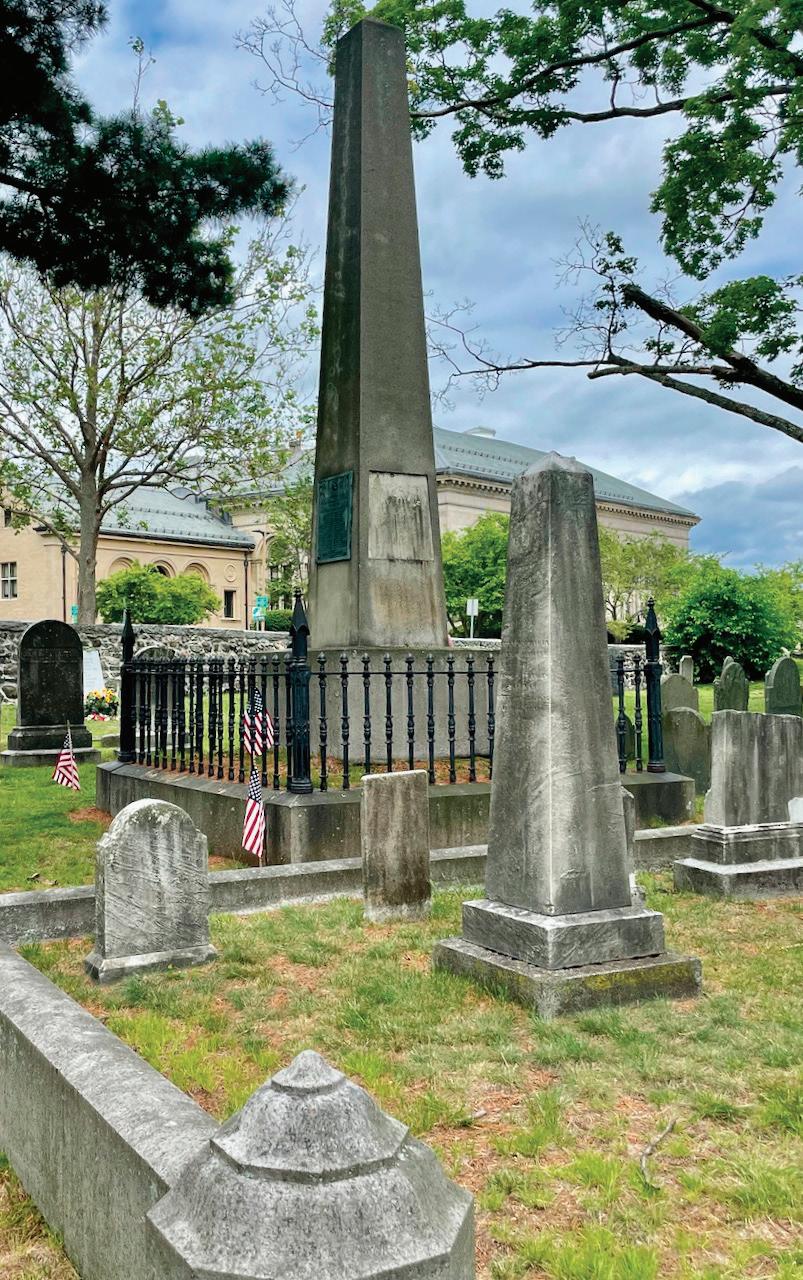
Paul Revere Capture Monument
Decades later, on April 20, 1835, seven of the eight men who died on Lexington Green were exhumed from Lexington’s Old Burying Ground and reinterred beneath the monument. The solemn ceremony, complete with full military honors, forever enshrined their sacrifice in the heart of American history.
Also visit: Battle Line Boulder, The Lexington Minuteman statue, Site of the Old Belfry, Lexington Minuteman Marker, Prince Estabrook Memorial, Meetinghouses Marker, Buckman Tavern, and the Hancock-Clarke House.
In the early hours of April 19, 1775, Paul Revere, William Dawes, and Dr. Samuel Prescott rode through the night to warn the people of the approaching British soldiers. They were part of a network established by the Provincial Congress to alert the citizenry and rally the minutemen and militias.
This monument marks the dramatic endpoint of Paul Revere’s famous midnight ride. It was here that Revere, Dawes, and Prescott encountered a British patrol set on halting any riders from Boston. Revere was captured, but Dawes and Prescott managed to escape. It was Prescott who ultimately carried the warning to Concord.
Isaac Davis Monument
Standing on Acton’s town common, a seventy-five-foot granite obelisk commemorates Revolutionary War hero Captain Isaac Davis, commanding officer of the Acton minuteman company and the first officer killed at the North Bridge. It also honors two of Davis’ fellow militia men: Abner Hosmer, also killed at the North Bridge, and James Hayward, mortally wounded in Lexington during the British retreat.
The cornerstone was laid on August 20, 1851, followed by a formal dedication ceremony on October 29, 1851. Davis, Hosmer, and Hayward were re-interred there in 1851 from their original resting places in Acton’s Woodlawn Cemetery.
Also visit: Acton Town Hall (historic Isaac Davis Plow) and Acton Public Library (Revolutionary War Artifact Exhibit including James Hayward Powderhorn).
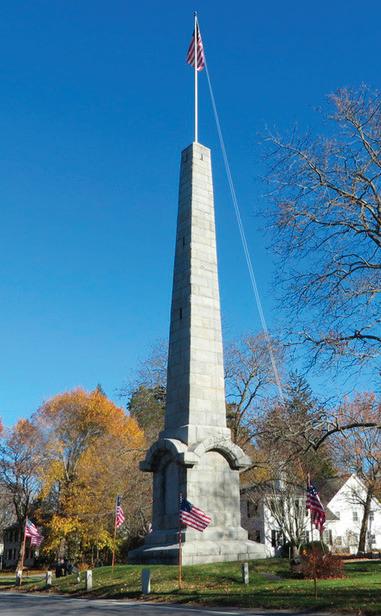
African Reservation Monument
Located in Bedford’s historic Old Burying Ground lies the African Reservation Monument, a tribute to three enslaved men—Cambridge Moore, Caesar Prescott, and Caesar Jones—who courageously fought for America’s independence during the Revolutionary War. Erected in 1896, this remarkable monument stands as one of the nation’s earliest memorials to recognize
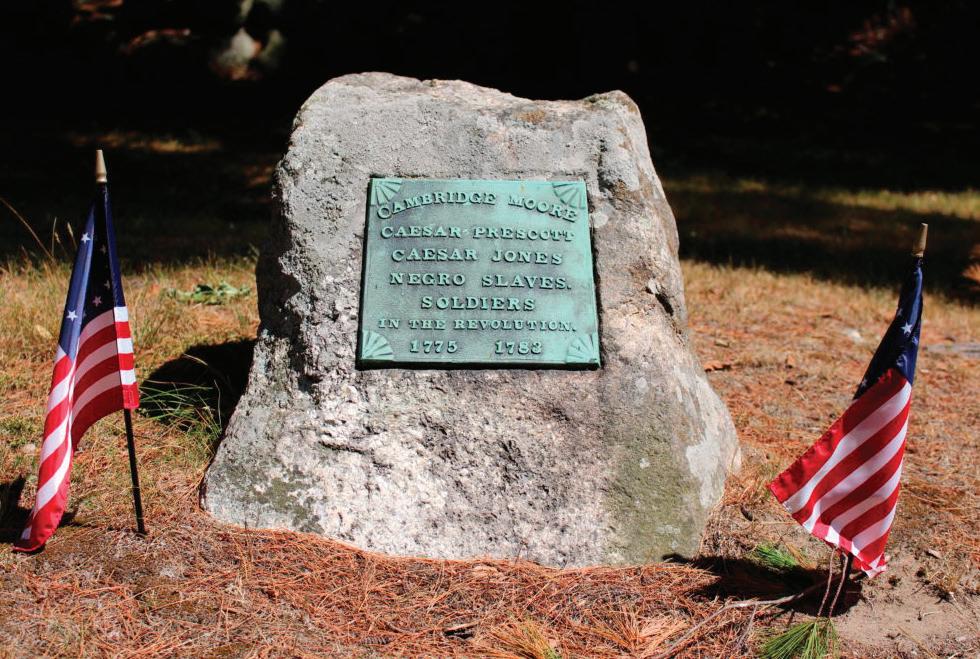
African Americans by name for their service in the American Revolution.
Also Visit: Job Lane Memorial Marker, American Revolution Soldiers Marker, and Bedford Town Common.
The Nevens Stone
On April 19, 1775, three brothers were hard at work digging stone for a wall on their farm in Hollis, NH—42 miles from Concord and Lexington. When the alarm sounded that British troops were advancing on Concord, the brothers dropped their tools, leaving the stone where it lay, and joined their fellow minutemen on the Hollis common to march to the aid of their neighbors.
For seventy years, the stone remained where the brothers had abandoned it, a silent symbol of their readiness and sacrifice. Eventually relocated to the town common, it became a historic landmark, believed to be the first monument to commemorate by name all those who responded to the call on that fateful day, April 19, 1775.
Also visit: The Powers Stone and the Soldiers’ Monument.
Sarah Bradlee Fulton Memorial
Sarah Bradlee Fulton, known as the “mother” of the Boston Tea Party, is credited with the idea of disguising the men who participated in the tea party in Native American-style clothing and disposing of their disguises afterward. Her bravery extended to the Battle of Bunker Hill, where she organized women in nursing wounded soldiers. In 1776, she reportedly crossed enemy lines alone to deliver a message to General George Washington, who later visited her home. Fulton was buried in Medford’s Salem Street Burying Ground, and in 1900, a chapter of the Daughters of the American Revolution was founded in her name. The
chapter later erected a memorial in her memory.
Also Visit: New Hampshire Soldiers Bunker Hill Memorial.
PEPPERELL, MA
Prudence Wright Memorial Stone
The Prudence Wright Memorial Stone marks the site where Wright and her ‘guard’ of fellow women captured a Tory spy. According to legend, Prudence Wright was visiting her mother in Hollis, NH, when she overheard Benjamin Whiting and Samuel Cummings planning to send Leonard Whiting with a message to the British in Boston, revealing the location of gunpowder kept by colonial forces.
Wright gathered thirty to forty local women to foil the loyalists’ plan. Wearing their husbands’ clothing and, according to Butler’s History of the Town of Groton, “armed with muskets, pitchforks and other such weapons as they could find,” the women captured
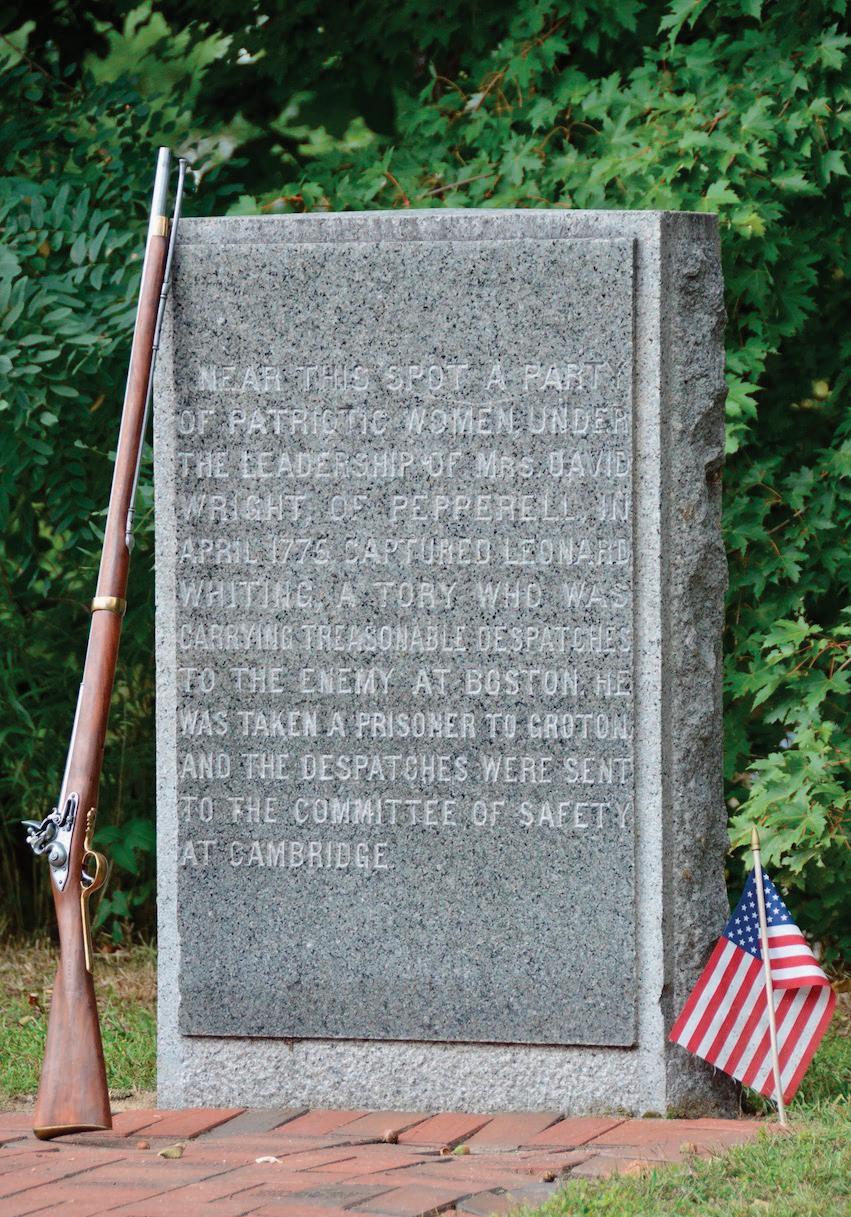
Whiting, confiscated the documents he was carrying, and surrendered him to Groton’s Committee of Observation.
Also Visit: Pepperell Covered Bridge.
Bunker Hill Memorial Bench
This striking granite bench, also known as the Walcott Memorial, was a gift from Edith Prescott Walcott, the great-greatgranddaughter of Colonel William Prescott. A Pepperell native, Prescott famously commanded American forces at the Battle of Bunker Hill.
An inscription on the back of the bench reads: “To the men of Pepperell who fought at Bunker Hill, 17 June 1775. They took part in an action with British Regulars which proved the fighting qualities of the provincial militia and foretold that England could not hold Her American colonies by force.” The bench was dedicated on November 1, 1899.
Also Visit: Walton Cemetery (William Prescott’s Burial Site).
American Revolution Memorial and April 19th Muster Plaque
Dedicated on April 19, 1900, Shirley’s American Revolution Memorial and April 19th Muster Plaque pay tribute to the remarkable patriotism of 80 local men who answered the call during the American Revolution. According to History of the Town of Shirley, the town’s response was so fervent that only seven men—too old or ill to serve— remained behind.
Set at the entrance to the Shirley Center
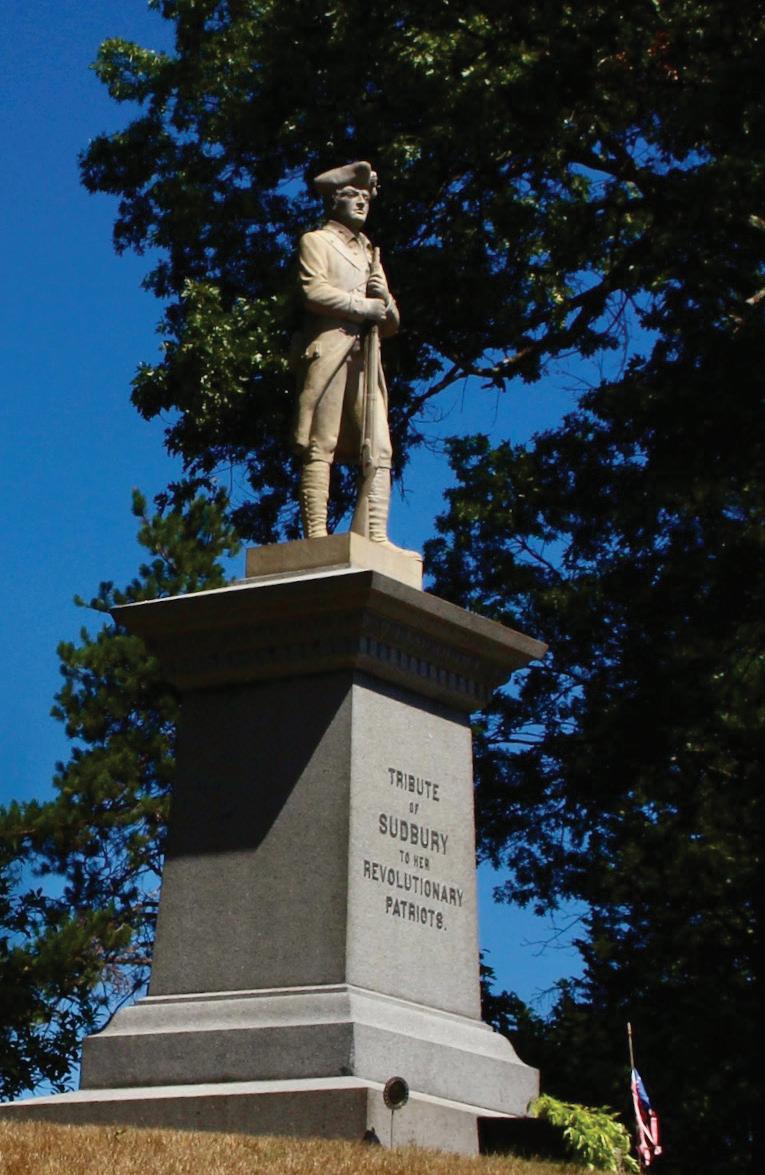
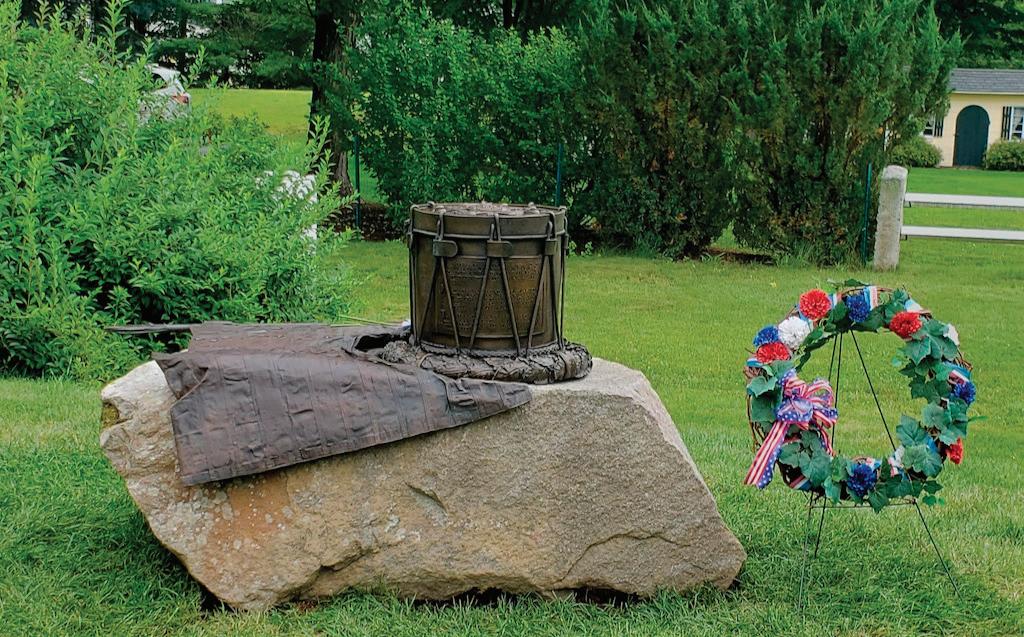
Cemetery and on the portico of the historic Shirley Meeting House, these memorials stand as timeless sentinels, framing the iconic Town Common and preserving the spirit of a community united in the fight for freedom.
Sudbury Revolutionary War Monument
Located in the heart of the Sudbury Center Historic District, this striking twentyfoot monument featuring a musket bearing soldier was created through the largesse of local resident Joanne Gleason whose grandfather, Captain Timothy Adams, served in the defense of Bunker Hill. The monument, designed by well-known architect A.F. Haynes, was dedicated in 1896, and overlooks the Revolutionary Cemetery.
Also Visit: Common Marker and Sudbury History Center.
Revolutionary War Memorial Drum
Local artist and Westford firefighter David P. Christiana crafted this striking bronze Revolutionary War battle drum to honor the 280 men from Westford, MA, who served in the Revolutionary War. Among them is Colonel John Robinson, a key figure at the North Bridge on April 19, 1775, and a trusted officer under George Washington during the Siege of Boston.
Also Visit: Colonel John Robinson Memorial, Westford War Memorial, and Westford Museum & Historical Society.
Colonel Loammi Baldwin Monument
Created by Herbert Adams in 1917 and dedicated on April 19, 1920, the statue commemorates Baldwin’s many achievements, including commanding the

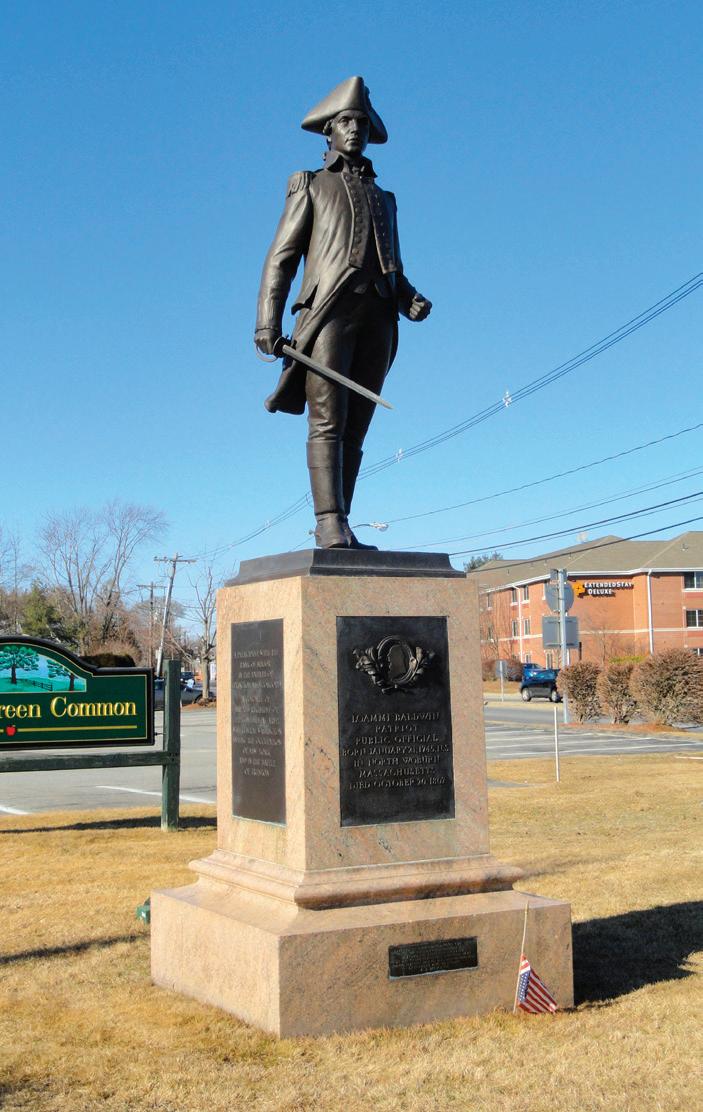
Woburn Militia in Concord on April 19, 1775, where he fought at Elm Brook Hill (formerly called the Bloody Angle). Baldwin also served in the 26th Continental Regiment, where he rose to the rank of colonel. Bronze plaques on the base provide a biography of Colonel Baldwin.
An engineer and inventor, Baldwin oversaw development of the Middlesex Canal and propagated the Baldwin apple, at one time the most popular apple in the world.
Also Visit: Baldwin Landing Plaque and Centurial Time Capsule (both in Kiwanis Park), Liberty Tree Memorial, commemorative plaque honoring Asahel Porter and Daniel Thompson, and the Benjamin Thompson Birthplace.
This project was made possible with support from the Massachusetts Society of the Cincinnati and the National Park Service and is funded, in part, by the Massachusetts Office of Travel & Tourism.


1 American Revolution Memorial and April 19th Muster Plaque
2 Bunker Hill Memorial Bench
3 Prudence Wright Memorial Stone
4 The Nevens Stone
5 Revolutionary War Memorial Drum
6 Isaac Davis Monument
7 Sudbury Revolutionary War Monument
8 The Minute Man in Concord, MA
9 African Reservation Monument 10 Paul Revere Capture Monument 11 Lexington Revolutionary War Monument 12 Colonel Loammi Baldwin Monument 13 Arlington Revolutionary War Monument 14 Sarah Bradlee Fulton Memorial

Dive deeper into Concord’s storied past and vibrant present with Discover Concord magazine! Stay informed, whether you’re planning your first visit or have called Concord home for years. Subscribe today at DiscoverConcordMA.com, or give the gift of Concord to someone special.
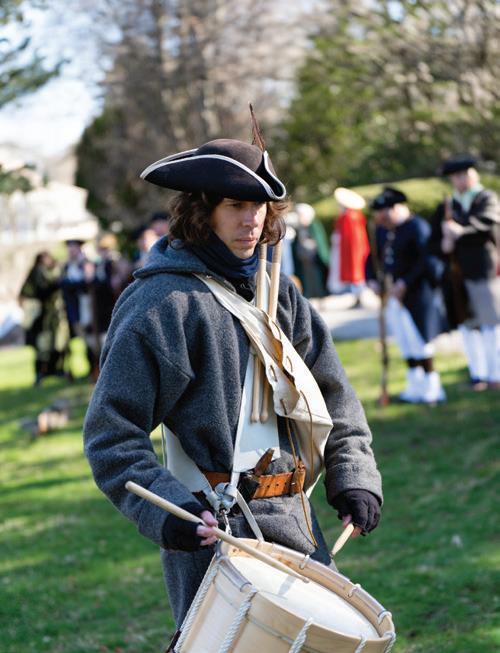
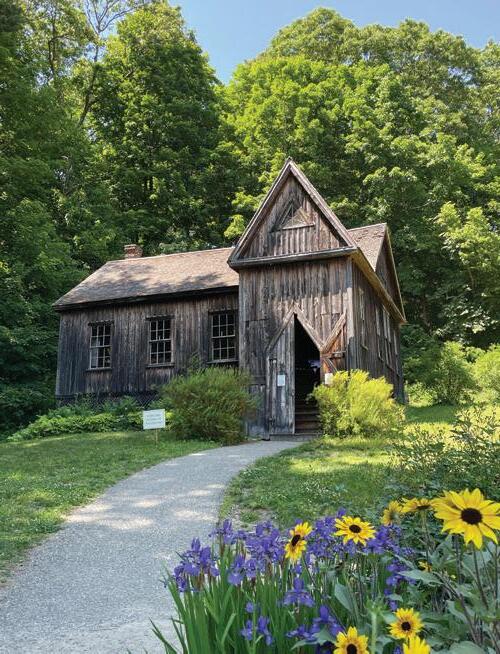
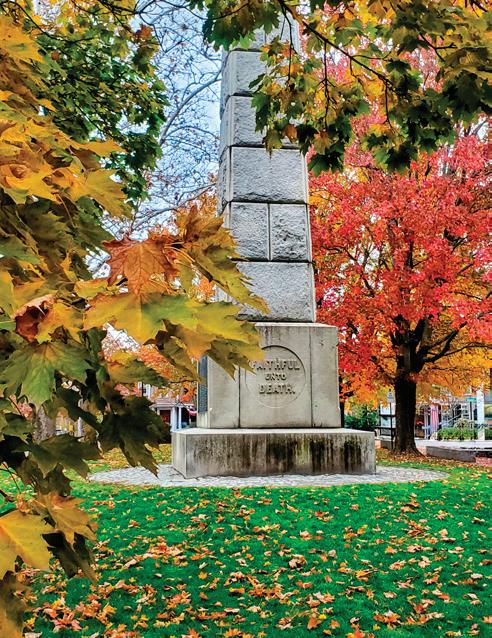

One of sixty-two National Heritage Areas in the United States, Freedom’s Way works in partnership with the National Park Service to preserve and promote a unique regional identity revealed in the natural, cultural, and historical sites and stories of forty-five communities in Massachusetts and New Hampshire. Discover all the Freedom’s Way National Heritage Area has to offer at FreedomsWay.org.





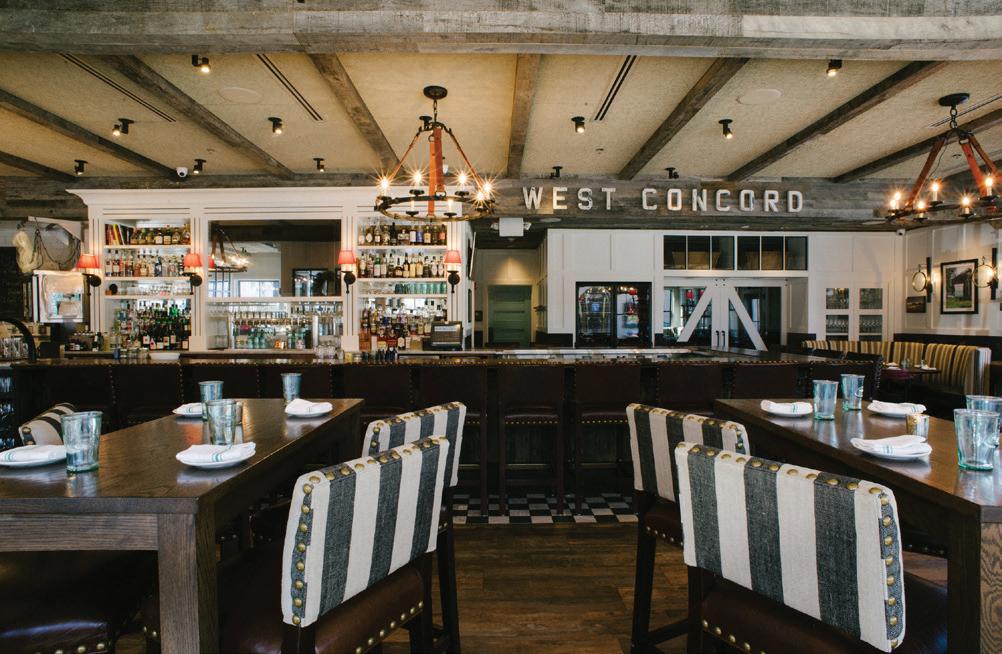
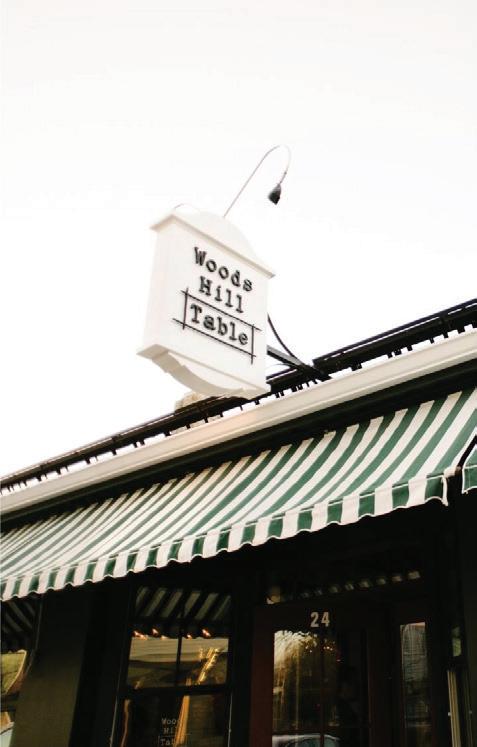






Celebrate the 250th anniversary of the first battles of the American Revolution with this 196-page collector’s edition
From the Boston Massacre to the Declaration of Independence: The colonists’ journey to rebellion
April 19, 1775, Timeline – The Shot Heard Round the World
Historic sites & museums you can’t miss
Walking maps of Lexington, Concord, and the Battle Road
1775 Witness Houses that still stand today
Personal stories of revolution— from national heroes to everyday people
“A Monumental Road Trip” – a driver’s guide to historic monuments beyond the Battle Road
April 19, 2025 – Official 250th celebration events & parade routes
This limited-edition heirloom is a keepsake for generations.
Pre-order now for just $25 before they’re gone!
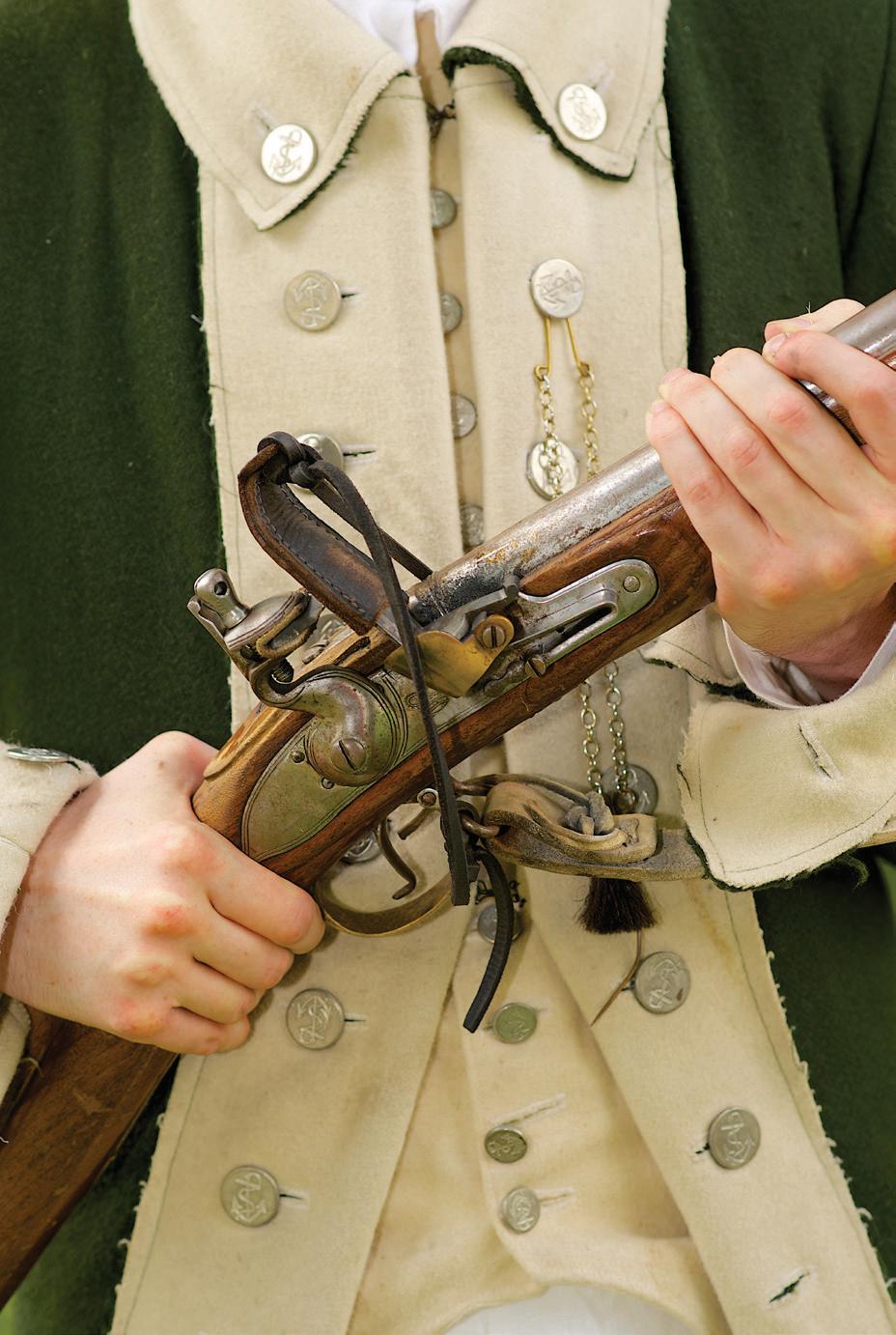
In partnership with:

You, your family, or your organization can be included in Discover the Battle Road, the official Concord250 commemorative book!
All sponsors will be honored in the front of the publication—both in print and online—cementing your place in this milestone celebration.
Don’t miss this rare opportunity to support history and our community.
Email us today to secure your spot and be a proud part of the Concord250 legacy.
Thank you for making history with us!
Email jennifer@voyager-publishing.com or call 978-435-2266 to secure your placeapplications close February 14, 2025.



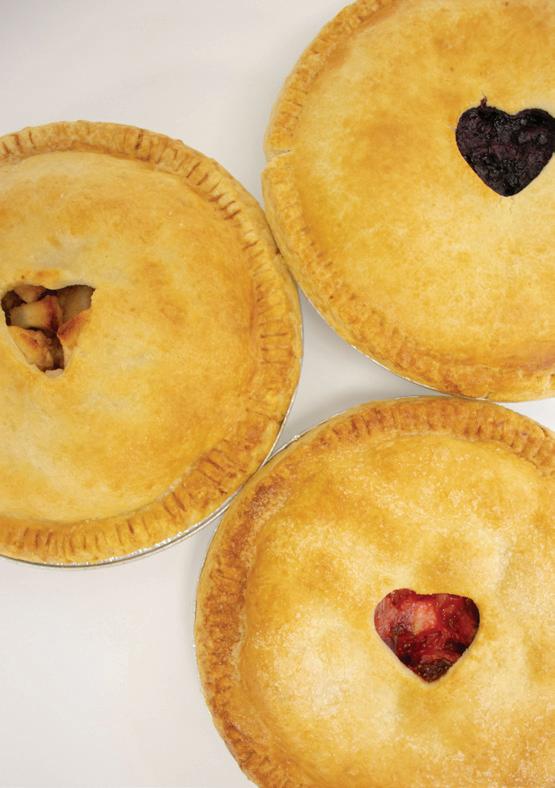


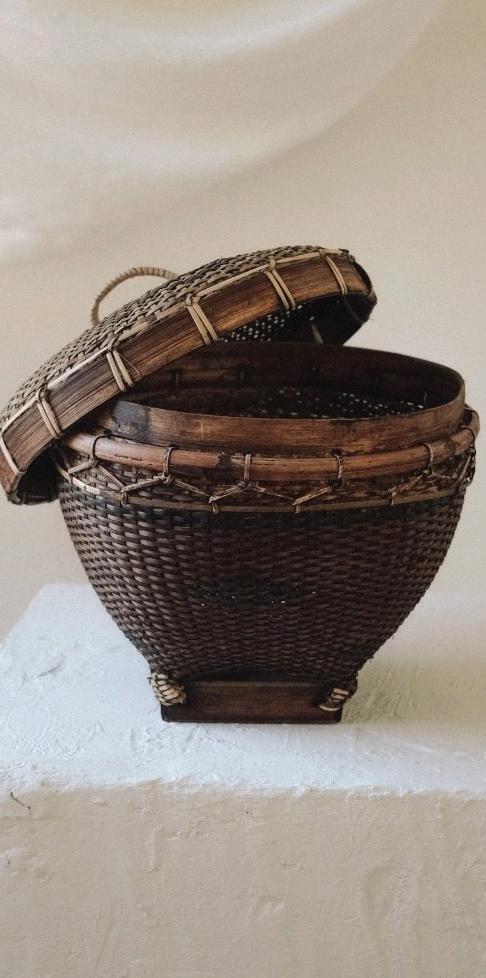






BY CYNTHIA L. BAUDENDISTEL
It was summer, and now again it is winter. Nature loves this rhyme so well that she never tires of repeating it.
Henry David Thoreau Journal, December 7, 1856
Just because winter has arrived doesn’t mean the adventure has to end! Bundle up in your favorite coat, throw on a cozy hat, and step outside to embrace the season’s magic. Whether you’re craving a scenic walk, eager to glide on the ice, ready to hit the ski trails, or excited to uncover Concord’s rich history with one of our enthusiastic tour guides, there’s a fresh adventure waiting just for you. Don’t let winter pass you by—make it unforgettable!
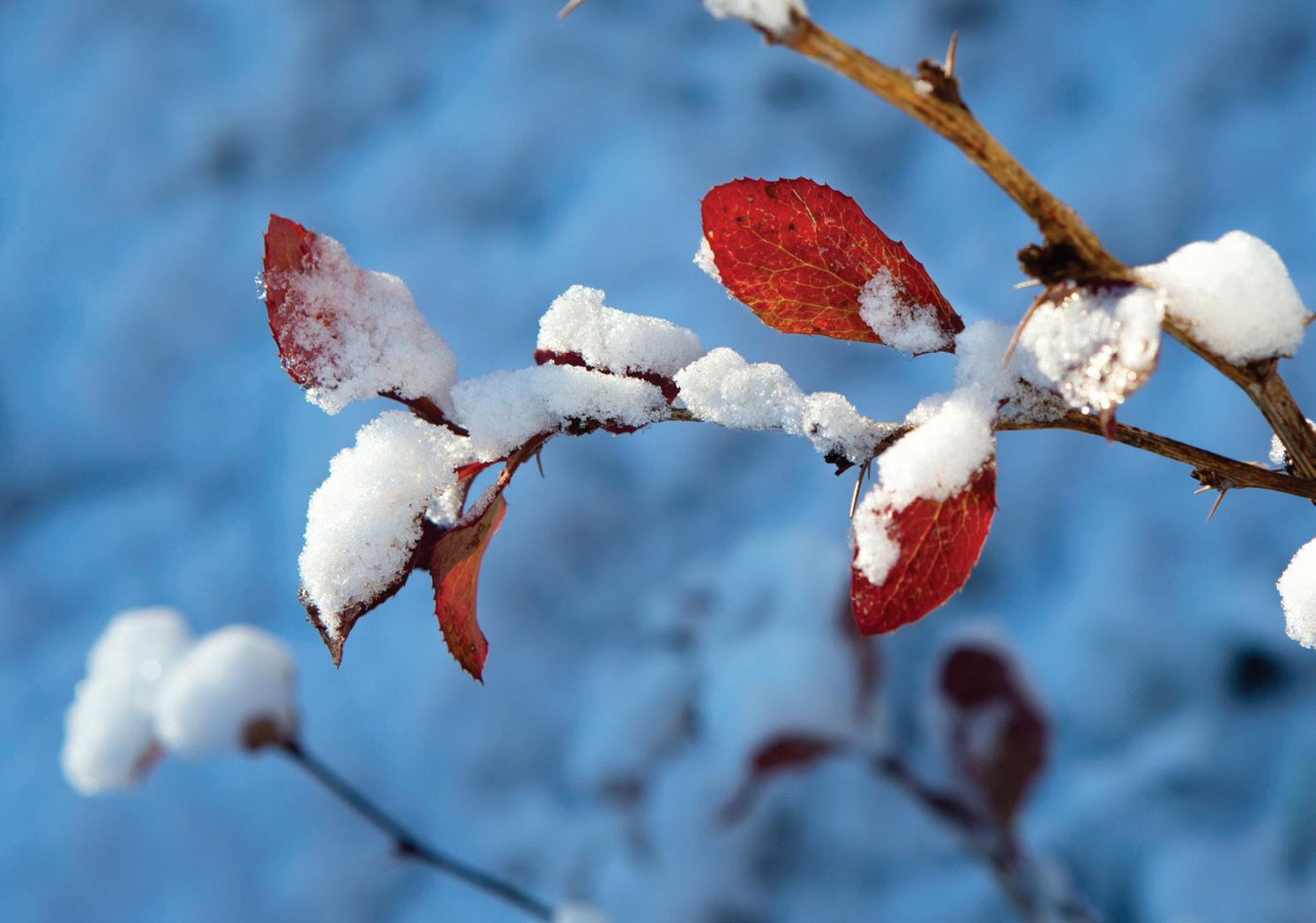

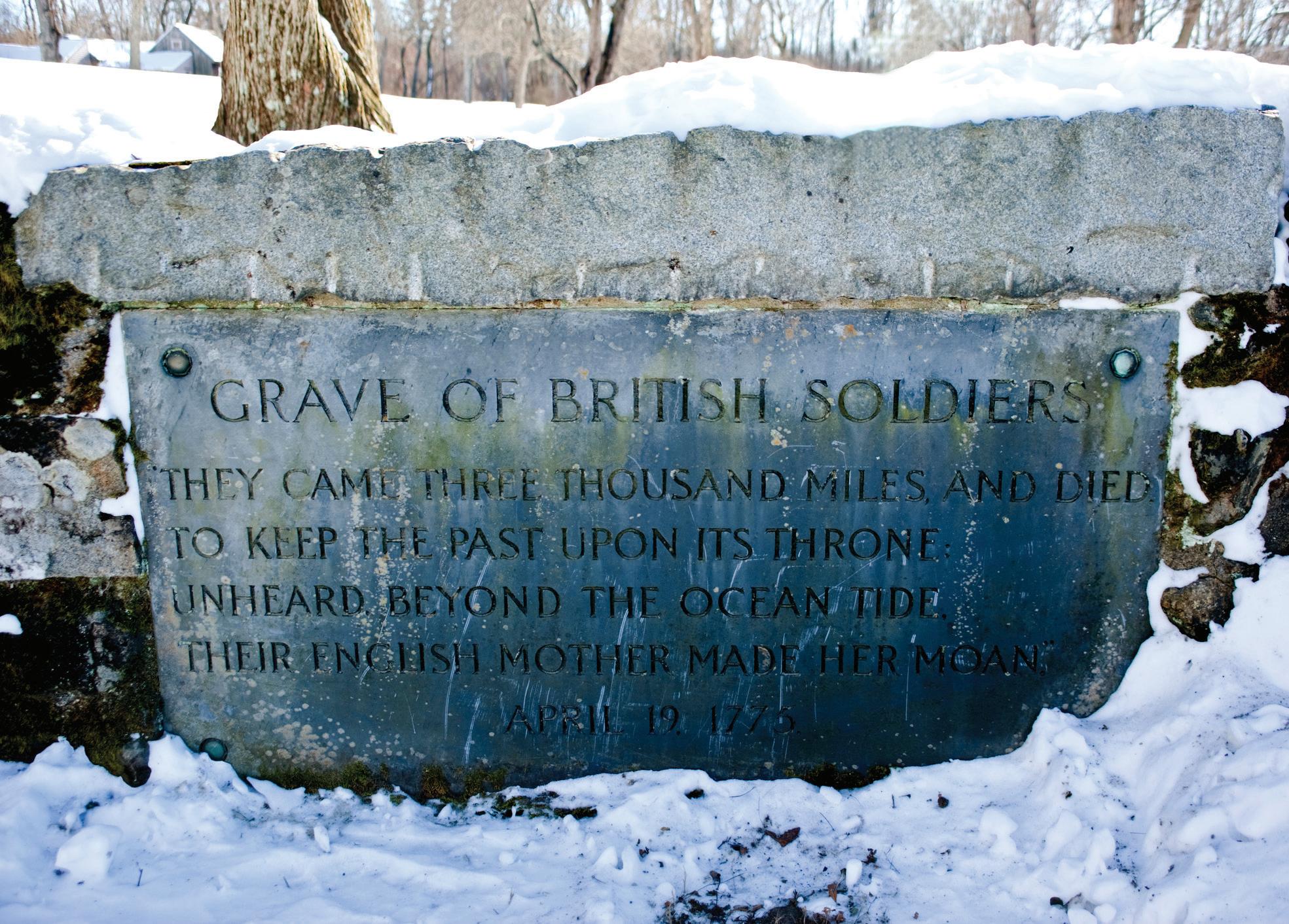
early chapters of Concord. All are open until sunset and are lovely on a winter’s day.
From snowshoeing to cross country skiing, ice skating, and, of course, the classic sledding, families have fun all winter long in the many outdoor spaces in and around Concord.
The trail list at the QR code to the left provides great spots for snowshoeing and cross-country skiing. Ice skating favorites include Walden Pond, Macones Pond (Lowell Road, near Barnes Hill Road), and Kennedys Pond (off Old Mill Road in the

Concord is surrounded by nature, and winter is a beautiful time to explore. Your senses are in for a treat with a walk (or snowshoe excursion) in the woods, along the Battle Road, or following the Bruce Freeman Rail Trail. Stop and listen to the orchestra of winter birds. Look carefully at the fallen snow, and you may see deer tracks or other signs of local wildlife in the area. Freshly fallen snow reflects the light and can cheer a winter day. A moonlight stroll is magical with sparkling snow under moonlight. And the haunting call of owls stirs a sense of magic and mystery. On a clear night, the stars are crisp and bright – you might even see a shooting star! Looking for a great place to get started? Scan the QR Code to access our trail guide from the Discover Concord Guide to the Great Outdoors. With eight trails to choose from, the call of the wild is promising adventure!
Concord’s early colonial history, revolutionary history, and literary legacy are all around us. A walking tour of Concord is a great way to explore. Tours are available through the Concord Visitor Center at VisitConcord.org. If you prefer to venture out on your own, there is so much to see and explore. Stroll the grounds of Minute Man National Historical Park, Walden Pond State Reservation, Sleepy Hollow Cemetery, Old Hill Burying Ground, or South Burying Ground and learn about the
Old Rifle Range). Safety is important when skating, so please remember to never skate alone – and always be sure that the ice layer is at least 6” thick before lacing up those skates.
Sledding is good fun for all ages. The hill at Concord-Carlisle High School has easy access and good parking. Those seeking the thrill of a steep incline should head to Punkatasset Hill off Monument Street or to the big hill on Nawshawtuc Road, near Willard Common.
There’s so much to do in Concord this winter – so get out there and have fun! Don’t forget your mittens



2 oz Belvedere vodka
¼ oz Luxardo Liqueur
¼ oz Cointreau
2.5 oz white cranberry juice
From in-house parties to black-tie galas, our custom cocktails make your event truly unique
MIXOLOGY CLASSES
Learn how to shake up your own creative cocktails
Take it home: guests receive a mixology-themed souvenir and recipe
Our award-winning mixologists are masters of hospitality, making your party or special event a hit without all the hassle
• Full range of bar services
• Custom made mixes and infusions
• Beautiful bar décor to match your theme
• Professional and TIPS certified
1 oz lime juice
4 drops rhubarb bitters
Crystal sugar for rim
Whole cranberries for garnish
In a shaker filled with ice add all the ingredients, shake for 15 seconds and strain into a sugar rim coupe glass.
Our 2025 calendar is booking up quickly. Call or email today!
idealmixology@gmail.com
978.618.4243 | @idealmixology


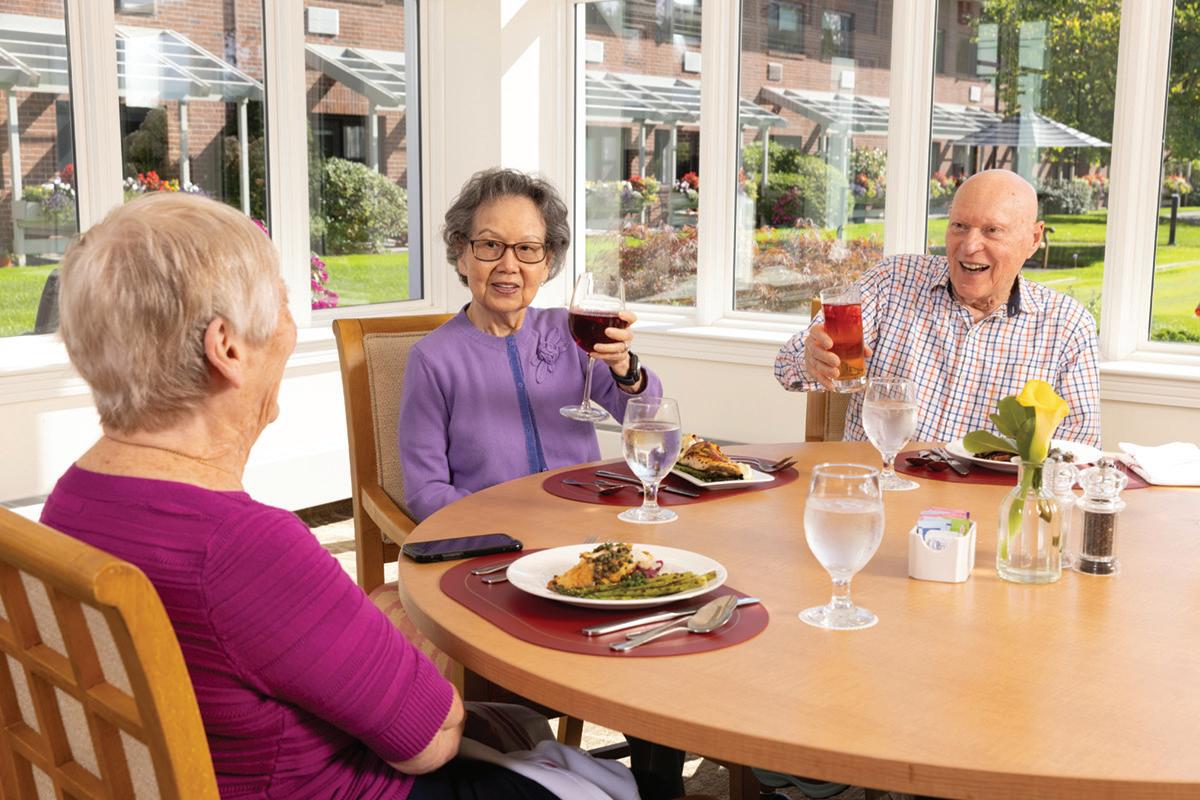
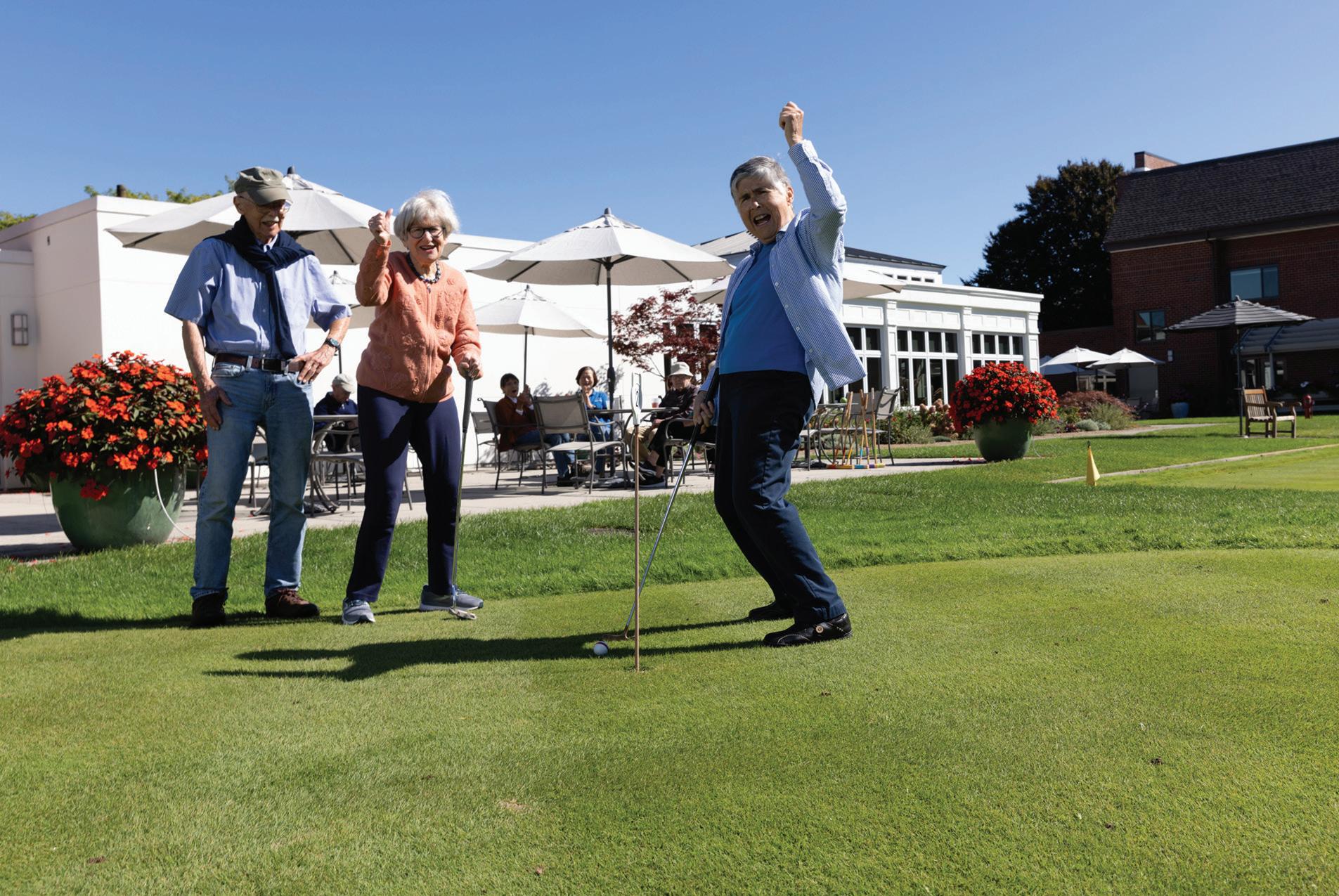



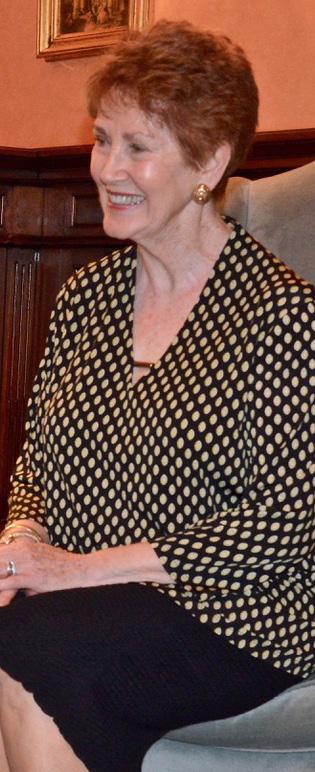

BY RICHARD PICCARRETO
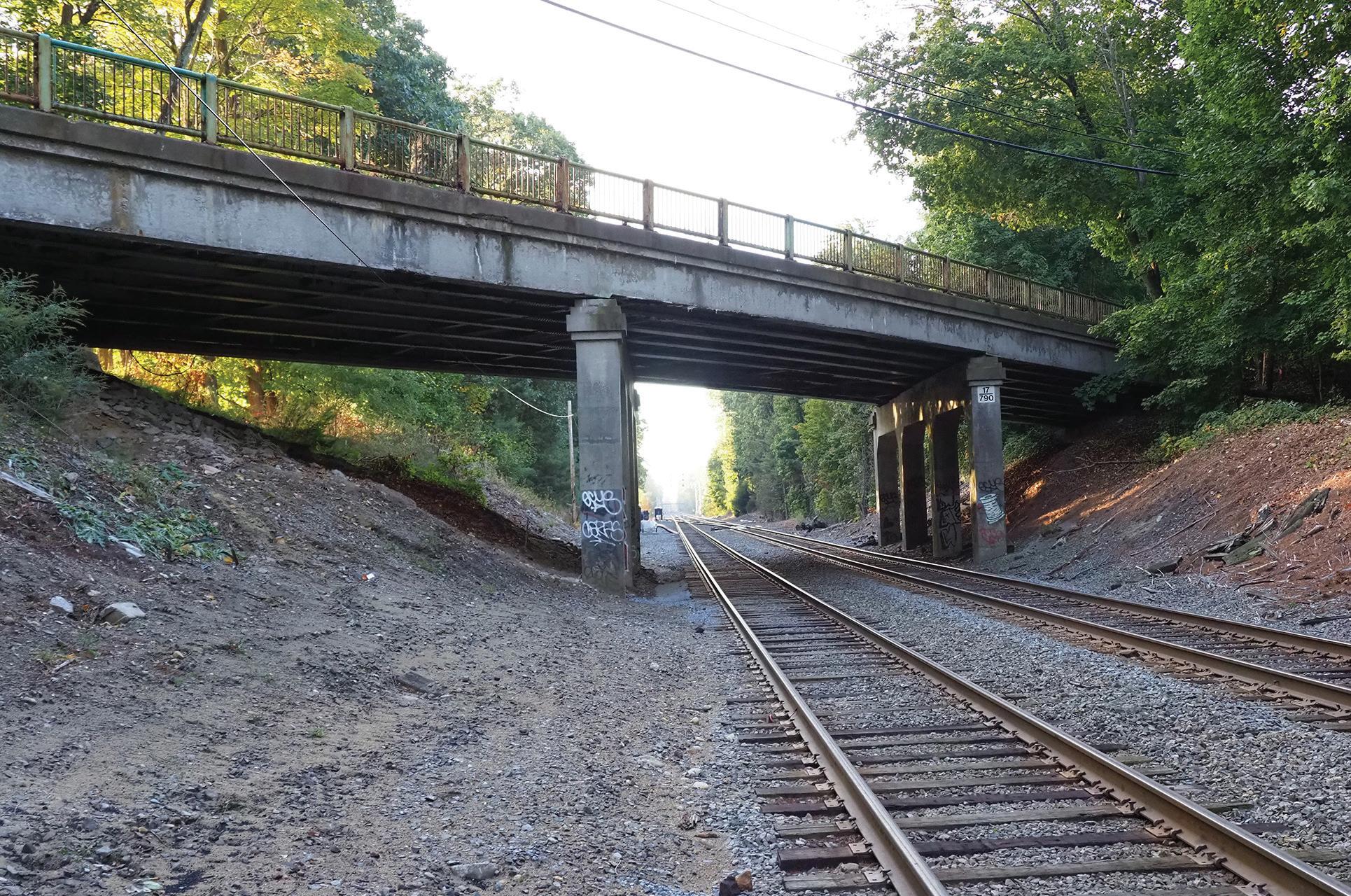
The blood-stained car of the Juggernaut
O’er millions of necks hath rolled
And the priests have cried, ‘Such a triumph as ours
The world shall never behold!’ But wo! When this harnessed Dragon Comes vomiting smoke and fire
For the priests with their car and idols, Shall perish beneath his ire!
From “The Railway Car” published in The Liberator, Boston, February 11, 1853
OOn Rt. 126, as you pass Walden Pond, cross into Lincoln, and dip through wooded drumlins, the road soon rises and straightens out by Baker Bridge Road along the expansive fields of The Food Project’s Baker Bridge Farm. The railroad bridge is straight ahead. Small and easy to miss, it was once the location of the tiny Baker Bridge railway station. It was also one of the deadliest spots in 19th century Massachusetts.
A chilling and sardonic December 10, 1856, entry in Henry Thoreau’s journal reads, “Yesterday I walked under the murderous Lincoln Bridge, where at least ten men have been swept dead from the cars within as many years. I looked to see if their heads had indented the bridge, if there were sturdy blows given as well as received, and if their brains lay about.”1
The Concord Freeman, Boston’s Liberator as well as The Annual Report of Massachusetts Railroad Corporations confirmed in print: June 22, 1847: “A brakeman was knocked off the car by standing on top of it when approaching a bridge in Lincoln; he had just been warned by the conductor not to stand up; he lived a few days and then died of the injuries he received.”
February 4, 1849: “A brakeman by the name of Whitcomb was killed by coming in contact
with a bridge in Lincoln, while carelessly standing top of the cars, contrary to the rules of the road.”
‘The road’ was the Fitchburg Railroad, which opened to Concord for the first time in June 1844. The tracks to Fitchburg took another year to complete. In Concord, the arrival of the railroad revolutionized transportation and commerce overnight. Travel time to Boston was cut by more than half. Traditional canal and flatboat commerce along with turnpike hauling quickly waned, as did business at the Middlesex Hotel in Concord’s town square. Field laborers on the outskirts of town marked the time of day by the screams of steam whistles echoing over the land. “The nation itself It lives too fast,” Thoreau journaled on August 9, 1854.
The reports continued:
April 19, 1849: ”A milkman got on top of the cars to sweep snow off between South Acton and Concord and persisted in remaining there after being told to get down. His head came into contact with a bridge, and he was instantly killed.”
In comparison, Thoreau’s 1856 journal entry references the only execution ever carried out in Concord: the hanging of Samuel Smith in 1799. “I felt a curiosity to see this famous bridge, naturally far greater than my curiosity to see the gallows on which Smith was hung, which was burned in the old courthouse, for the exploits of this bridge are ten times as memorable. Here they are killed without priest, and the bridge, unlike the gallows, is a fixture The days of the gallows are numbered. The next time this county has a Smith to dispose of, they have only to hire him out to the Fitchburg Railroad Company. Let the priest accompany him to the freight-train, pray with him, and take leave of him there.”2
In a span of just nine weeks during 1850, the Fitchburg Railroad Corporation recorded:
September 7, 1850: “A brakeman was killed by a bridge, between Concord and Lincoln, while standing on top of the cars.”
October 14, 1850: “A brakeman on the Fitchburg Railroad, named Uline, a Frenchman, was knocked from the downward freight train by a bridge near Concord on Monday afternoon and instantly killed.”
November 12, 1850: “A brakeman was killed by a bridge in Lincoln, while standing on top of the cars.”
Thoreau describes this bridge, along with another in Concord as, “ our modern Dragons of Wantley. Boucaniers of the Fitchburg Railroad, they lie in wait at the narrow passes and decimate the employees. The Company has signed a bond to give up one employee at this pass annually. The Vermont mother commits her son to their charge, and when she asks for him, again the Directors say: “I am not your son’s keeper. Go look beneath the ribs of the Lincoln Bridge.”3
The continued carnage was costly and extensive. In 1848, the Boston Traveller reported on the following abstract, presented to the Massachusetts State Legislature
dollars) for an 1848 accident in which he was severely injured. In 1849, the New Hampshire legislature limited jury verdicts to a $5,000 maximum penalty for loss of life on any of their state railroads. Also in 1849, some English railway companies began offering their riders optional one-day life insurance policies.
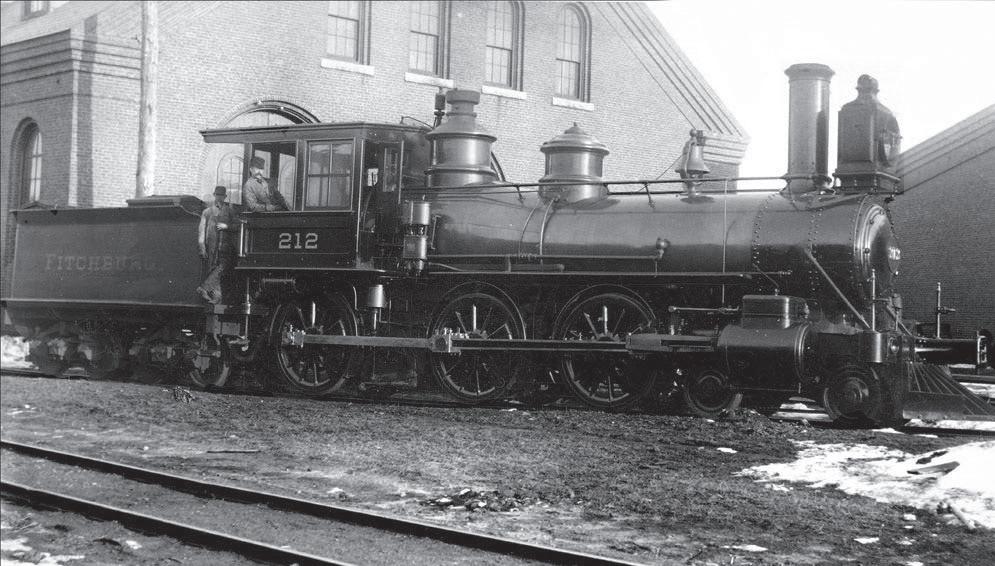
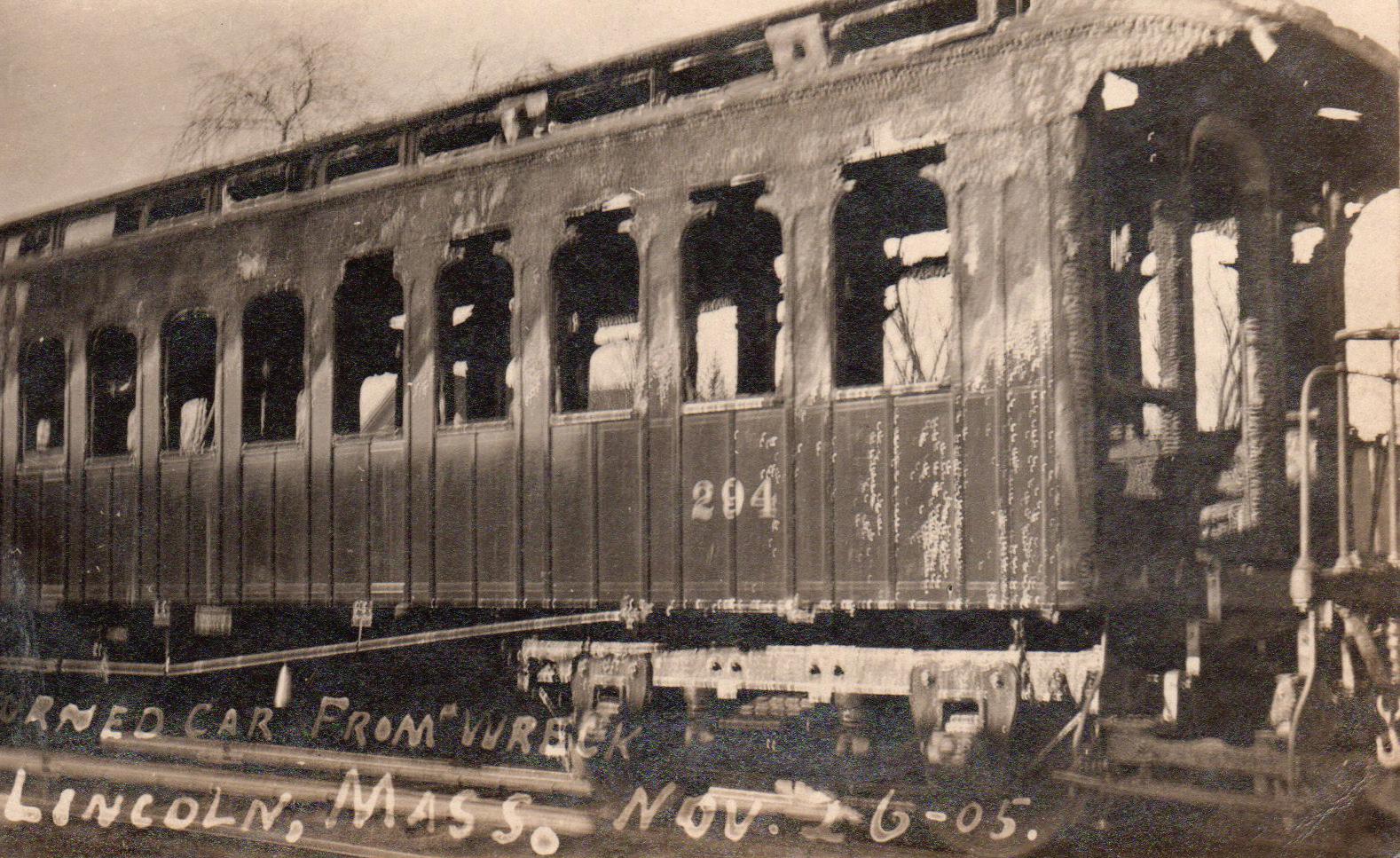
regarding injuries and fatalities on Massachusetts ‘roads’ over the prior 8 years:
• 42 passengers killed, 69 injured
• 75 employees killed, 72 injured
• 155 other persons killed, 185 injured
• Killed or injured at crossings, 20, by bridges 36
• Compensation paid by the companies: $155,467.16
A man from Chicopee, MA was awarded $10,000 in 1850 (over $400,000 in today’s
Not only were the railroad companies paying compensation to the families of those killed and injured along the tracks, but they also paid significant dividends to stockholders. The Fitchburg Railroad Corporation posted yearly dividends of between six and eight percent through the 1850s. In 1855, Ralph Waldo Emerson detailed in a letter to his attorney, Abel Adams, how he managed his income and debts seasonally, counting on lecture income in one season and, partially, on railroad dividends in another. Emerson’s railroad income from the Vermont and Canada Railroad Company diminished with the onset of winter. “Until the middle of November,” he wrote Adams, “I live mainly by grace. For the ‘Vermont and Canada’ people dry up what should be my daily spending money.”4
On February 6, 1852, Concord’s Middlesex Freeman newspaper noted in an op-ed entitled ‘Railroads’: “There is no subject that more demands the careful attention of legislators than Railroads. At present, Railroad companies are the most lawless things in the world The grievances go on multiplying in number and extent until there comes a breakdown of tremendous character. Half a score of persons are killed, twice as many more or less injured, the train is smashed
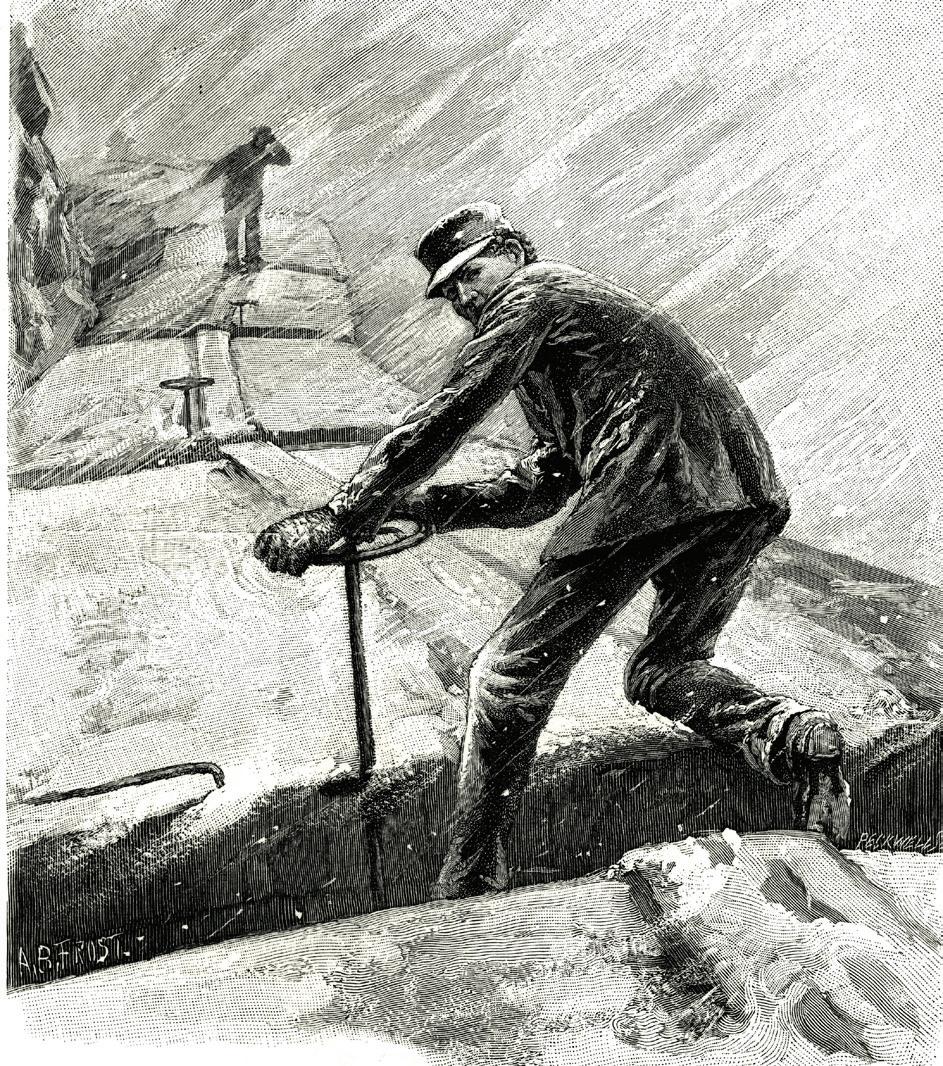
up Strange as it may appear for all this loss of life, maiming, fright and destruction of property, no one is to blame or can be made to appear blameworthy.”
September 5, 1854: “Norman Snell, a brakeman on a freight train, was knocked from the train at the bridge in Lincoln and killed.”
November 24, 1855: “A brakeman named Boynton, while on top of the cars, hit a bridge near Lincoln.”
The tragedies did not end with the safety measures eventually implemented by the Fitchburg Railroad in the latter half of the 19th century. In 1905, a crash at Baker Bridge killed 15 passengers, two employees and injured 32 others when an outbound train ran into another stopped on the tracks.
As Henry Thoreau wrote in his journal on August 9, 1854: “Did you ever think what those sleepers [railroad ties] are that underlie the railroad? Each one is a man, an Irishman or a Yankee man. The rails are laid on them, they are covered with sand, and the cars run smoothly over them. They are sound sleepers, I assure you.”
“We do not ride on the railroad; it rides upon us.”
A grateful thank you to Jaimee Joroff at Barrow Bookstore, Jessie Hopper and Anke Voss from Special Collections at the Concord Free Public Library, as well as Eric Miller for research assistance.
Richard Piccarreto is a Concord Visitor Center Tour Guide and is Membership Coordinator at The Thoreau Society. He lives in Stow, MA.
1.2.3 https://archive.org/details/thoreau-journal-1906lim-ed/page/n4391/mode/2up?q=railroad+deaths
4. R.W. Emerson to Abel Adams, Sept. 21, 1855. Ralph L. Rusk, ed. The Letters of Ralph Waldo Emerson IV, 529.
WHERE TO STAY

At Fiorella’s we put our passion for life and our love for hospitality into everything we do. Life is flavored by sweet moments, and we truly want you to cherish them all. Bring life’s best ingredients together with the ones you love, and savor every bite.

Acton
The Bee’s Knees British Imports
First Rugs
Concord Center
Albright Art Supply
Artinian Jewelry
Artisans Way
Barrow Bookstore
Best of British
Blue Dry Goods
Bobbi Benson Antiques
Brine Sporting Goods
The Cheese Shop
Comina
Concord Bookshop
Concord Lamp and Shade
Concord Market
The Concord Toy Box
Copper Penny Flowers
The Dotted i
Fairbank & Perry Goldsmiths
Footstock
Fritz & Gigi
French Lessons
George Vassel Jewelry
Gräem Nuts and Chocolate
Grasshopper Shop
Irresistibles
Nesting
Patina
Rewind Estate Watches
Sara Campbell Ltd
Tess & Carlos
Thistle Hill
Thoreauly Antiques
Three Stones Gallery
Vanderhoof Hardware
Walden Liquors
Main St
Main St
Main St
Walden St
Main St
Main St
Walden St
Walden Street Antiques 23 Walden St
Area Farms
Verrill Farm 11 Wheeler Rd
Thoreau Depot
ATA Cycles
Concord Provisions
Thoreau St
West
Concord Firefly
Concord Flower Shop
Commonwealth Ave
Concord Outfitters 113 Commonwealth Ave
Debra’s Natural Gourmet 98 Commonwealth Ave
Doe + Fawn 105 Commonwealth Ave
Joy Street Life + Home 49 Commonwealth Ave
Lawless Upholstery and Furnishings 119 Commonwealth Ave
Loveday 115 Commonwealth Ave
Potager Soap Company 152 Commonwealth Ave
Puck and Abby
Concord’s Colonial Inn
Fiorella’s Cucina 24 Walden St
Haute Coffee 12 Walden St
Helen’s Restaurant 17 Main St
Main Streets Market & Café 42 Main St
Sally Ann’s Bakery & Food Shop 73 Main St
Thoreau Depot
80 Thoreau 80 Thoreau St
Bandoleros 195 Sudbury Rd.
Bedford Farms Ice Cream 68 Thoreau St
Dunkin’ 117 Thoreau St
Dunkin’ 794 Elm St
Farfalle Italian Market Café 26 Concord Crossing
Karma Concord Asian Fusion 105 Thoreau St
New London Style Pizza 71 Thoreau St
Sorrento’s Brick Oven Pizzeria 58 Thoreau St
Starbucks 159 Sudbury Rd
West Concord
Adelita 1200 Main St
Club Car Café 20 Commonwealth Ave
Concord Teacakes 59 Commonwealth Ave
Dino’s Kouzina & Pizzeria 1135 Main St
Dunkin’ 1191 Main St
Nashoba Brook Bakery 152 Commonwealth Ave
Saltbox Kitchen 84 Commonwealth Ave
Walden Italian Kitchen 92 Commonwealth Ave
West Village Tavern 13 Commonwealth Ave
Woods Hill Table 24 Commonwealth Ave
Concord Center
Concord’s Colonial Inn 48 Monument Sq
North Bridge Inn 21 Monument Sq
West Concord
Residence Inn by Marriott 320 Baker Ave
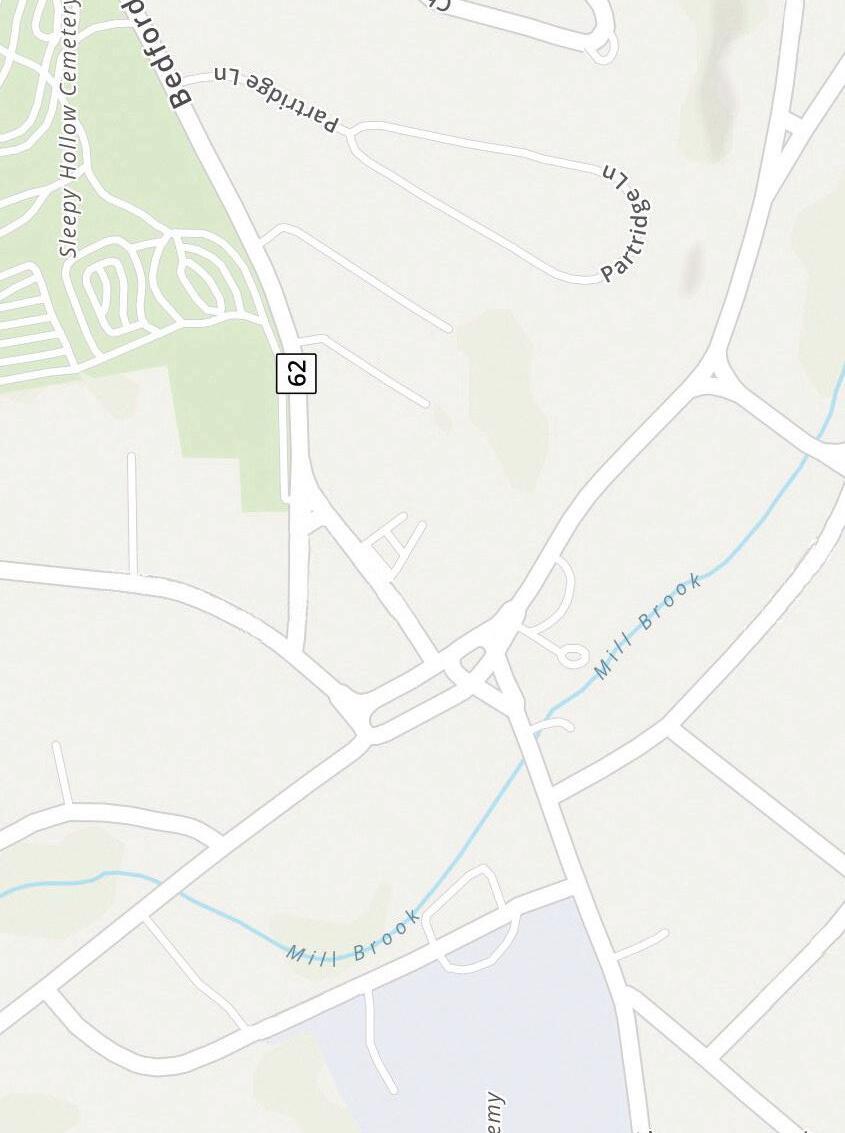
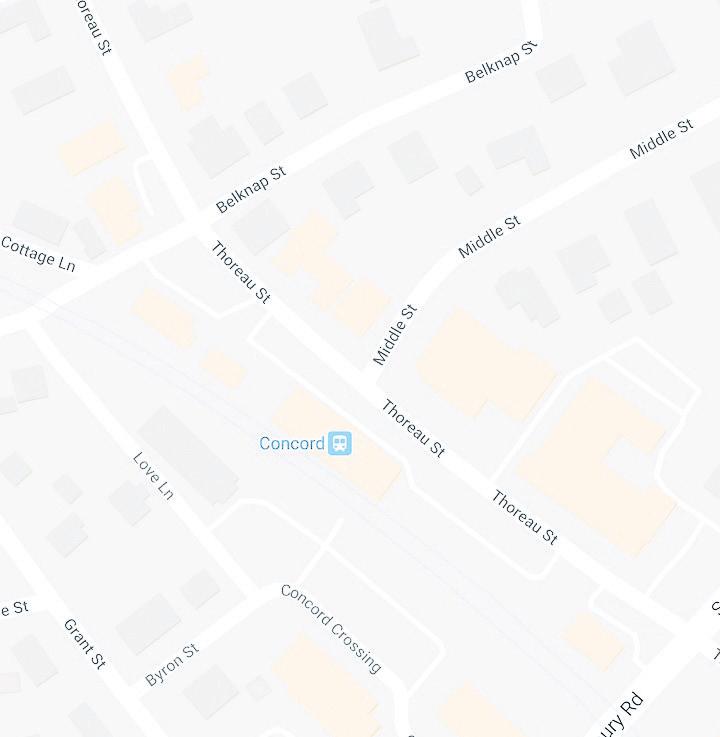
Adelita
Appleton Design Group
The Attias Group
Barefoot Books
Concord Flower Shop
Concord Teacakes
Debra’s Natural Gourmet
Dunkin’ (two locations)
Puck and Abby
Verrill Farm
West Concord Wine & Spirits
Woods Hill Table 12
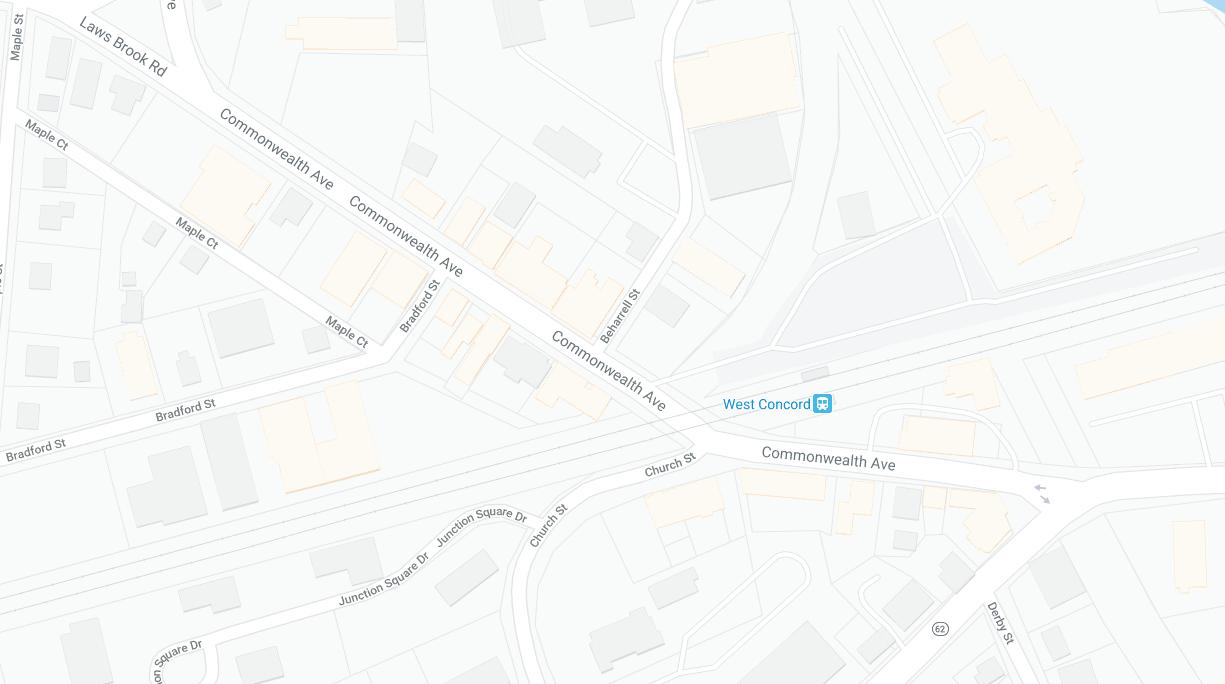





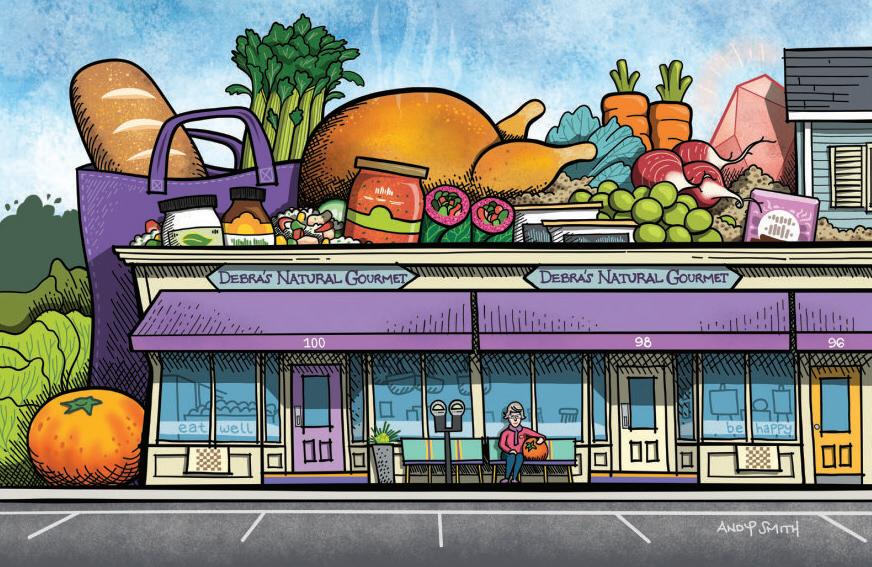
For Pierre Chiha, photography is more than a profession—it’s a lifelong pursuit of connection and storytelling. Pierre was given his first camera at the age of 13 and has devoted his career to mastering the fine art of portraiture. An instructor once told Pierre, “A picture is of somebody, but a portrait is about somebody,” and Pierre has never forgotten that important distinction.
“A portrait photographer is an observer,” says Pierre. “They must rely on observation and intuition to capture that fleeting moment when the essence of the sitter comes through.”
Pierre draws inspiration from Johannes Vermeer’s mastery of light and Yousuf Karsh’s iconic ability to uncover the soul of his subjects. “True portraiture is fine art,” Pierre reflects. “It moves beyond being just a picture and becomes something that stirs emotion, like music or dance.”
For Pierre, every portrait is a collaboration—a melding of technical mastery and personal connection. The experience is about more than just the final image; it’s about creating something timeless that reflects the unique spirit of the individual.
Like her father, Gaby Chiha discovered her love of photography at a young age when she enrolled in a darkroom class at The Fenn School summer camp when she was 12. She continued taking classes in photography throughout her teen years and minored in the subject in college. While her interest in photography is a natural offshoot of having a parent in the field, Gaby asks, “Is it nature or nurture? I discovered a natural passion and talent for photography that is part of who I am.”
Concord is home to many extraordinary artists. In this ongoing column, we highlight two of those artists and celebrate the many organizations dedicated to uplifting the arts through education, advocacy, and exhibition.
BY CYNTHIA L. BAUDENDISTEL

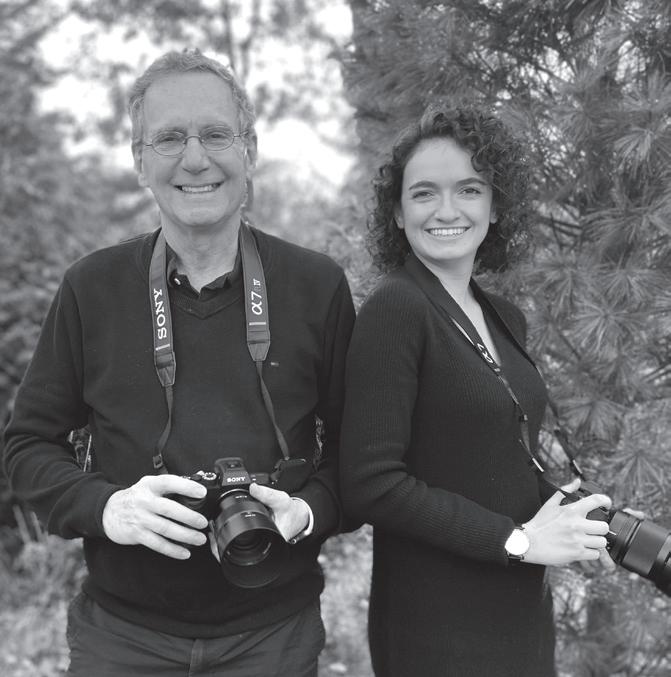
Gaby’s approach to portraiture is intentional and deeply thoughtful. She pays close attention to every detail—background, lighting, composition—all carefully orchestrated to reflect the personality of her subject. Her goal is to uncover the authenticity and emotion that make each individual unique. “A great portrait reveals something true about a person,” she says. “It’s about showing them in a way that they haven’t seen themselves, with genuine beauty and depth.”
Gaby is also drawn to street scenes and landscape photography, but even here, people are a vital part of the image, providing a human connection to an ephemeral moment.
Both artists can be found at The Umbrella Arts Center and online at Pierre.com.

~Ralph Waldo Emerson

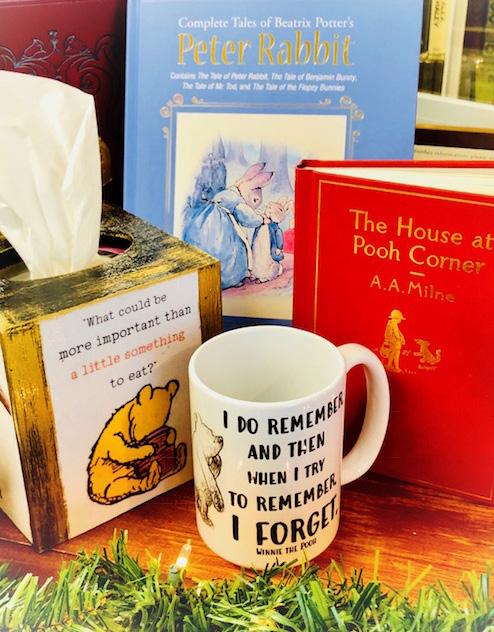
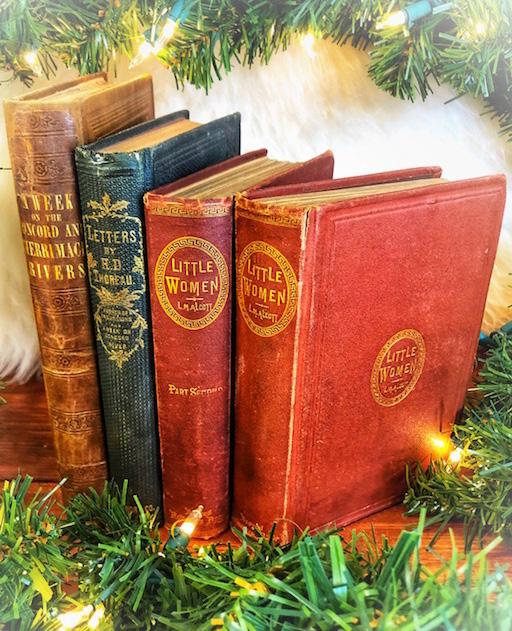

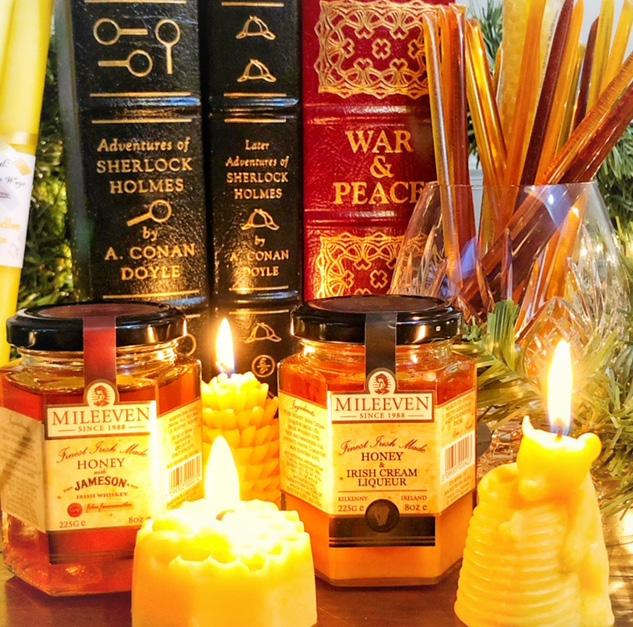
RARE AND GENTLY READ BOOKS
Specializing in Concord Authors and History; Transcendentalism; Revolutionary War, American, and Military History; Children’s Literature; and a wide selection for the eclectic reader. Literary-themed gifts, postcards, and beeswax candles.


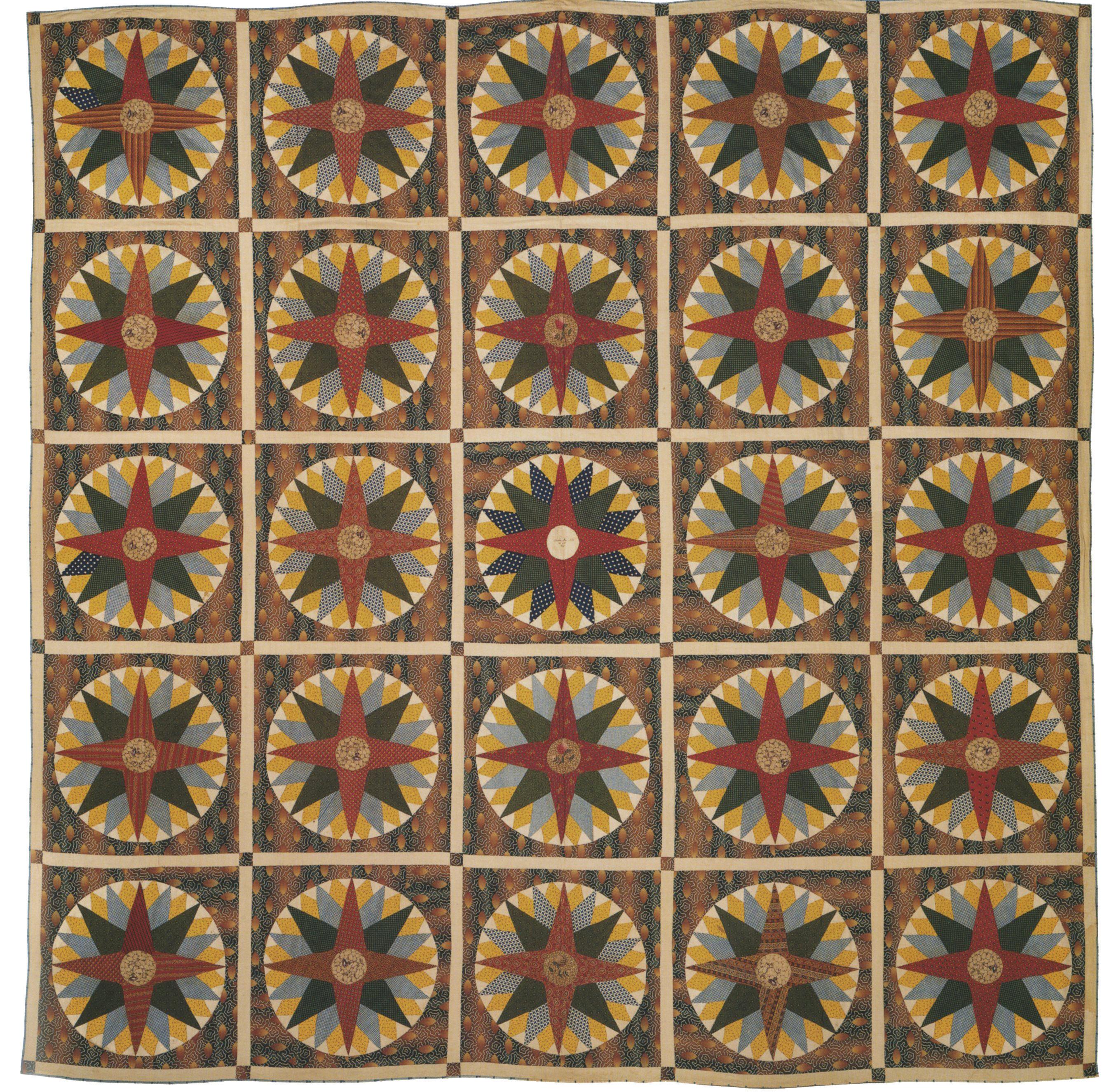
BY ANNE LEHMANN
EEarly American quilting is a form of art that has captured the attention of women for generations. To this day, it enjoys a growing and enthusiastic following, including among men, who represent about 1% of quilters in the U.S. and Canada today. To better understand the history of this beautiful art form, we interviewed several experts - keepers of an important artisanal tradewho graciously shared their knowledge for this article.
In the late 17th century, quilting became a form of showcasing women’s needlework. During this time, women in rural areas used homespun thread and fabrics - a timeconsuming and costly process. Betsey Telford-Goodwin, owner of Rocky Mountain Quilts in York, Maine, and a historical quilt lecturer and appraiser said, “Families with means could afford to purchase raw materials and threads for quilting. Affluent women could purchase exquisite fabrics
imported from France, England, and India, while rural families were mostly creating quilts from homespun fabrics. Creating a quilt in rural areas was often a two-year project - beginning with raising flax for linen and sheep for wool. Even the thread used in quilting was homespun.”
While this handwoven process was complex, an added complication was the fact that England had a hold on America’s raw materials. The American textile industry had yet to emerge, so the fabrics were made solely from raw materials, with finer fabrics smuggled in through secret tunnels in Newburyport, Massachusetts. Betsey went on to explain that, “Prior to the Revolutionary War, England had rules and regulations in place and one such rule was specifying what type of sheep were allowed to be raised on American soil. Mutton sheep were allowed, which produce a coarse wool. This led to the creation of linsey-woolsey, a blend made
from this mutton wool. Linsey-woolsey was strong but not soft. The finest, softest wool is from merino sheep, and early on these sheep were forbidden to be reared in America. Additionally, all wool sheared in America was shipped back to England, processed there,
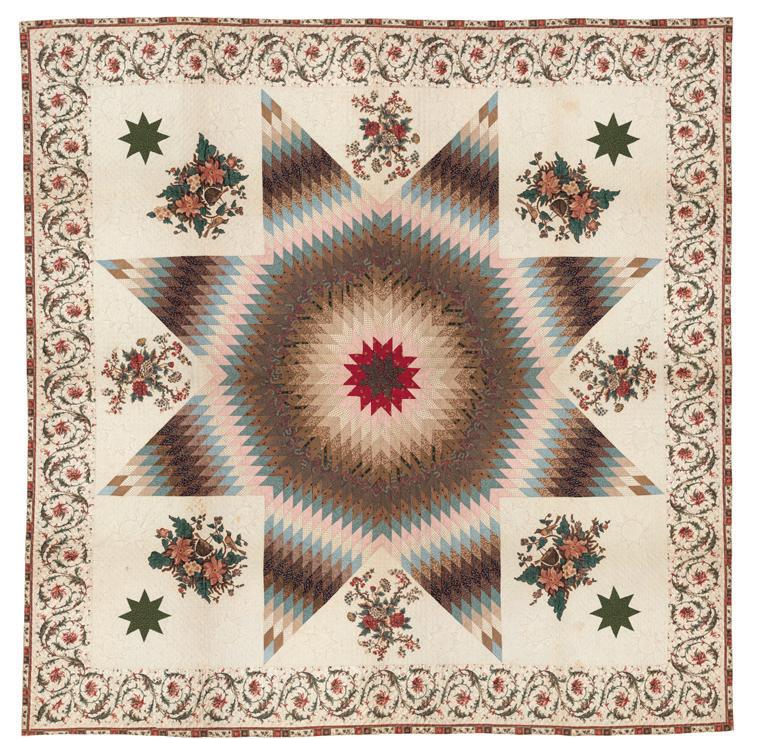
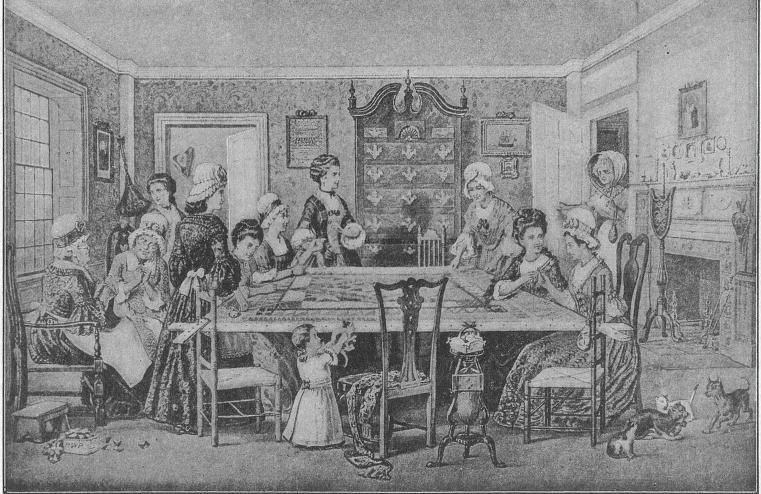
and then sold back to Americans under a system known as mercantilism.” It is plain to see why a revolution was brewing.
The advent of three inventions transformed both quilting and the textile industry. Manufacturing of textiles by power looms started in England in 1785, and the subsequent Industrial Revolution allowed Americans to buy less expensive commercially manufactured fabrics from
events and working on different sections concurrently. Quilts served practical purposes in American households as they were crafted into petticoats, bed coverings for warmth in the winters, and even added layers of protection during battle.
As more women gathered to quilt, it not only increased speed of completion but also provided a sense of comradery. In rural areas, groups of women quilted together in community gatherings, while affluent women often quilted at home with sisters, mothers, and other relatives. The creation of patterns evolved, showcasing women’s ingenuity and mathematical skills. Many times, women wanted to duplicate a pattern but change the colors, and having directions with measurements proved immensely helpful.
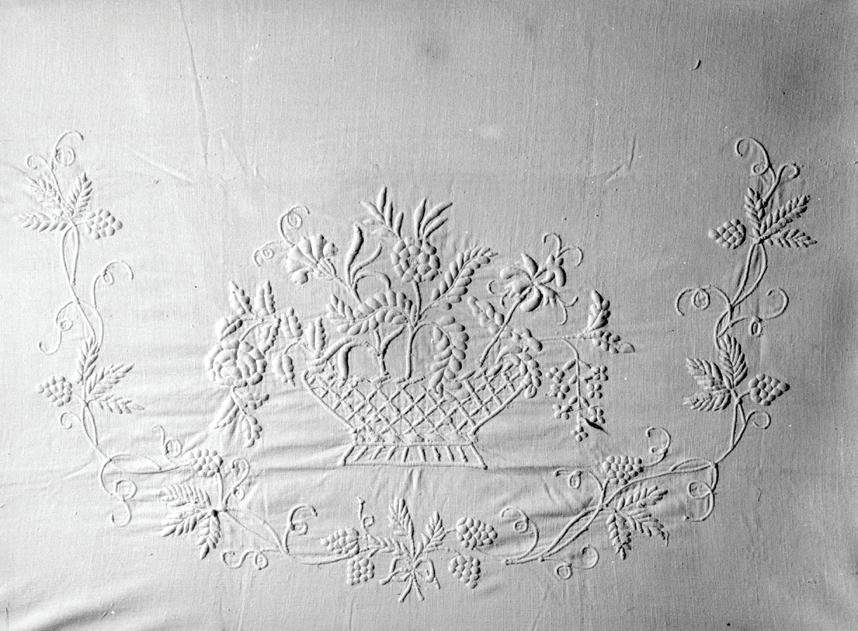
England before the textile mills were set up in New England. In 1793, the cotton gin accelerated the process of separating the cotton seeds from the cotton fibers, and in 1813 the power loom was introduced to America. These innovations reduced the cost of fabric, allowed the art of quilt-making to morph from an exclusive activity to a more common one, and significantly shortened the time needed to complete a quilt. It also moved quilting from an individual task to a group task. Many hands were able to simultaneously quilt different sections of a single whole quilt (bedcovering) stretched out on a frame.
In rural areas, friends and family members gathered around the hearth at each other’s homes to quilt, conversing over current
In early American times, proficiency with needle and thread was a basic skill, much like learning to read and write. As this ‘pattern’ proficiency became more technically advanced, stitching and appliqueing advanced as well. Over time, this skill morphed into sewing scenic patterns with the thread, such as flora, fauna, or even the illusion of movement using wave stitching. Mathematical precision is critical when quilters are working with complex designs and borders. It would be abysmal if a quilt was to be four sunbursts across and six sunbursts down, but when putting the quilt together, they were all misaligned. Over time, textile mills became abundant, and the selection of fabrics increased. This combined with advances in stitching techniques to allow quilts to tell a story through intricate needlework or using multiple fabrics.
“In the 18th century, the width of manufactured fabric was only 12 to 15 inches,
bee circa 1876
selvage to selvage,” said Betsey TelfordGoodwin. “Women’s clothing was made from the entire width, and therefore there were no scraps of fabric. Most of the quilts created during the era were called whole cloth, resulting from numerous strips of the same fabric sewn together, creating one large piece of fabric. After the Revolutionary War, when women’s clothing styles changed, there were scraps left over from cutting fabric to create these patterns. And thus quilts created from a mixture of fabrics were born. Pinwheels, mariner’s compass, Baltimore Album quilts, and Star of Bethlehem were a few patterns that created art from fabric pieces. Complicated and quite interesting questions also arose and were solved in emerging quilting groups: which pattern became a foreground vs. background, how to introduce movement in a still object, and how to tell a chronological story through images.”
Printed periodicals from the mid-19th century encouraged quilting through their ”ladies’ pages.” The first American newspapers and farmer’s journals, including

Less affluent and poor families reused fabric scraps whenever they could. This is an example of tree bark home spun woolen dyed backing and plaids. Everything is home woven and home dyed (with true indigo vegetable dye). The process to create a quilt – to raise wool or flax, spin, weave, dye, and sew – could be as much as two years. Circa 1825.
the Boston News-Letter, the New York World, and The American Farmer were such publications offering a “ladies’ section.” Sara Schechner, a historian and award-winning quilter, notes, “In these sections quilting patterns emerged with details about various styles. These individual styles of quilting were quickly shared throughout the country, which provided an opportunity to cross pollinate patterns, colors, stitching techniques, and fabrics, and to answer quilting questions. The effect on the craft was exponential.” Correspondence by mail also provided a way to share patterns and solve math equations within quilting projects.
The introduction of sewing machines in the 1850s allowed the basic stitching of quilts to be completed at a faster rate. The more decorative seam work, such as the precision required for hexagonal pieces (in popular
patterns such as Grandmother’s Flower Garden) still needed to be handsewn, though, and are still made this way today.
Proficient sewing was always a mark of excellence for affluent women, and this did not change after the invention of the sewing machine. Rural women could not afford to purchase a sewing machine, therefore almost all quilts continued to be pieced and quilted by hand. While the early American quilts merged function and beauty, the quilts of today are masterful pieces of art. This evolution was showcased in 1971, when the Whitney Museum in New York held the firstever exhibit of quilts. Sixty-one quilts were hung (an incredible number), and attendance was favorable, to say the least. The 1976 bicentennial led to a resurgence of interest in earlier times, resulting in the exponential growth of quilting circles and sewing bees, which are still strong in numbers today (including dozens in New England alone).
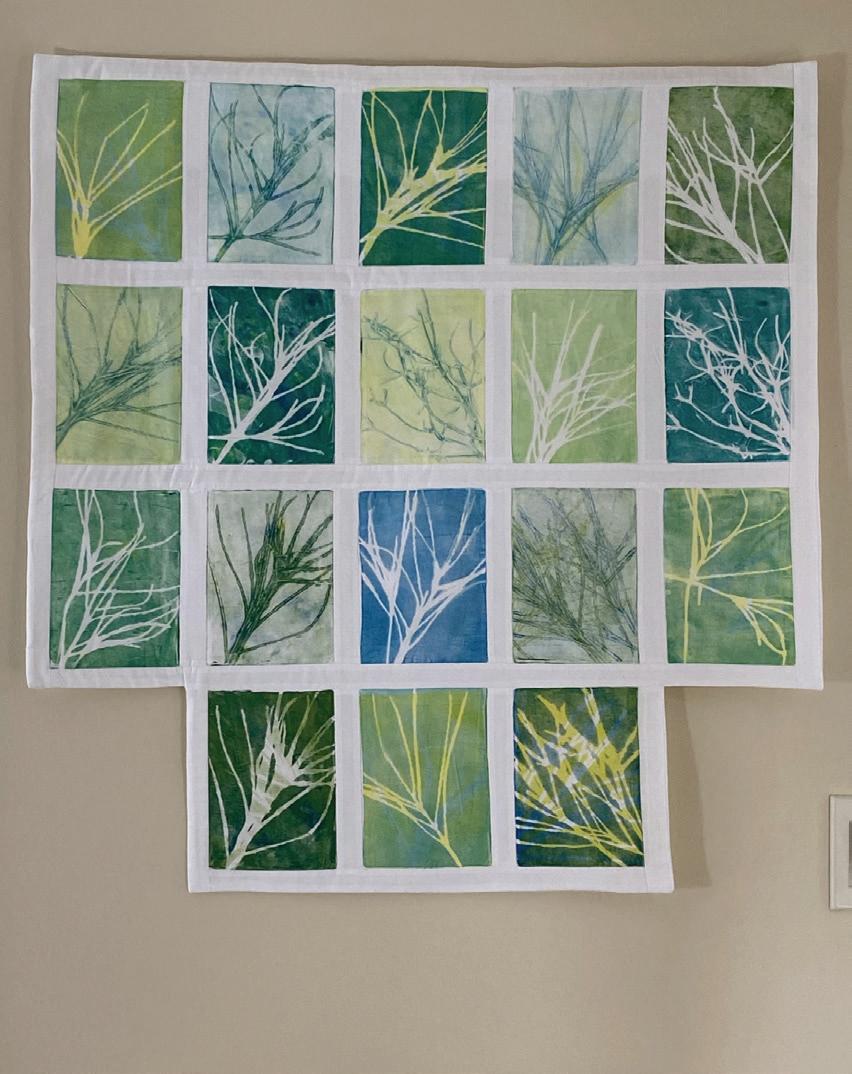
Eileen Kahan uses multiple techniques to create
designs.
Stitching in the Spirit of Democracy
by
Eileen Kahan, a member of Quilters’ Connection and Rising Star Quilters guild, said “Sewing and quilting have been a part of my being ever since I was a child. I relate to people through words and visuals—fabric and threads are part of my life.” Her intricate designs and coloring techniques are modern, and her art pieces are unique. In one quilt, for example, she used grasses from her garden and stamped images of the grasses on fabric using a gel plate with acrylic ink to provide a three-tone effect. She then matched the thread to accentuate the individual handcolored fabrics. When completed, Kahan put white sashing between
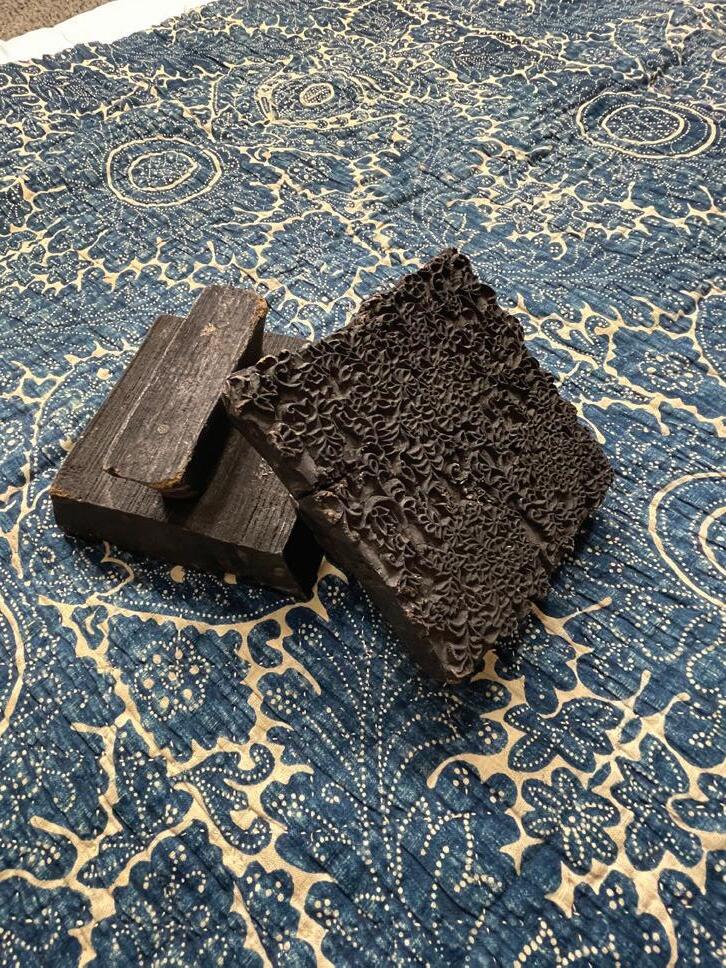
This Blue Resist is a rare and coveted pattern. Indigo blue will not fade in sunlight. Here you can see an example of the block that was used in the lost wax process to create unique patterns. A Blue Resist quilt in the home was a mark of affluence. 1700s.
the 18 pieces to create a jagged bottom edge. The unique pattern brings a fresh look to the art of quilting. She uses geometric formation to alter the historic rectangular shape seen most frequently in quilting, creating asymmetric designs both in the arrangement of blocks and the shape of the final quilt.
It seems that the experience of the quilter, of making a quilt, provides one the opportunity to express creative mastery over design and skill with a needle. One of the wonders of quilting nowadays is the opportunity to simply begin with needle and thread and some fabric. Wonderful healings can come from these actions.
Anne Lehmann is a business consultant, journalist, and freelance writer. She has written for the Boston Globe and a number of other metro west publications.
Celebrate the 250th anniversary of the battles of Lexington and Concord on April 19, 1775, with Quilts 250: Stitching in the Spirit of Democracy. This free show will be open to the public and will follow the development of quilting from the revolutionary period to the present, featuring 250 works by local quilters. Themes will include:
The Spirit of 1775 | Antique, Antique-Inspired, and Traditional Quilts | Quilts of Protest Modern, Contemporary, and Pictorial Quilts | Student Quilts and Fiber Arts
Quilts 250 is sponsored by the Concord250 Celebrations Committee and organized by the Concord Piecemakers, Quilters’ Connection, and Rising Star quilt guilds. For more information and instructions on how to enter your quilts, please email quilts250@quiltersconnection.org.
March 22-23, 2025 • Concord Academy • 166 Main St, Concord, MA 01742
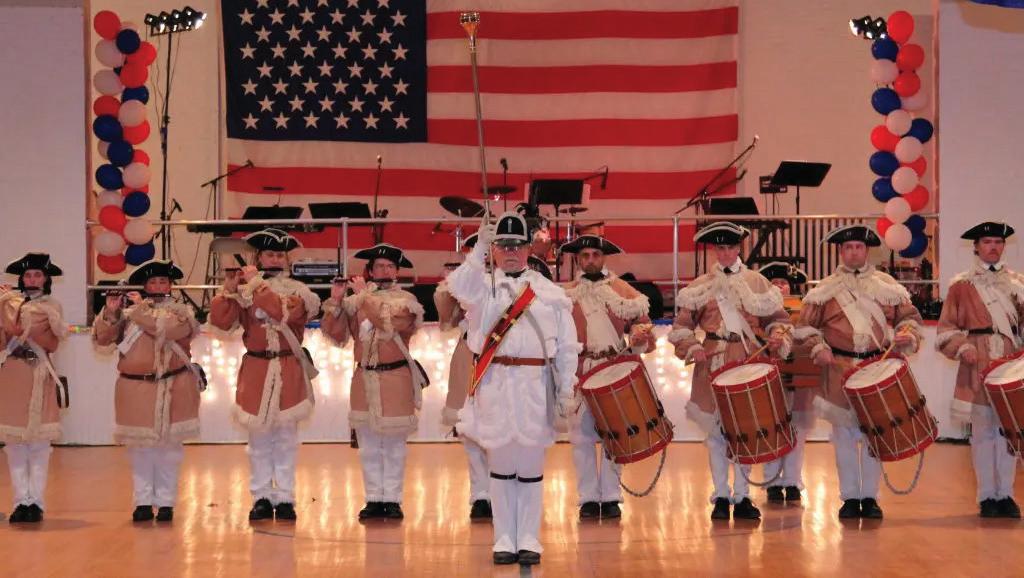
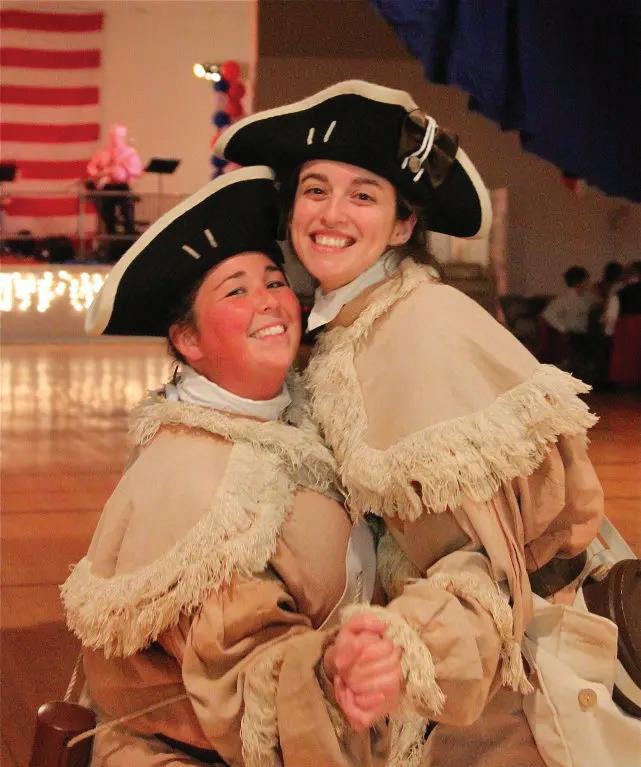
Followed by the traditional grand march to Concord Center before midnight to witness the arrival of Dr. Samuel Prescott on horseback to sound the alarm that the British Regulars are on the move to Concord! LET’S HAVE A BALL!
The Concord250th Patriots Ball
SATURDAY APRIL 12, 2025
7pm-12am at the Concord Armory
Live Band | Dancing | Cash Bar | Light Refreshments
21 and older only. Tickets go on sale February 3rd at 12:01am - first come, first served. Very limited tickets. $75 per person. Tables of 10 are available for $750. Maximum of 10 tickets per purchaser. To order, send an EMAIL ONLY (starting at 12:01 on 2/3/25) to 250patriotsball@gmail.com
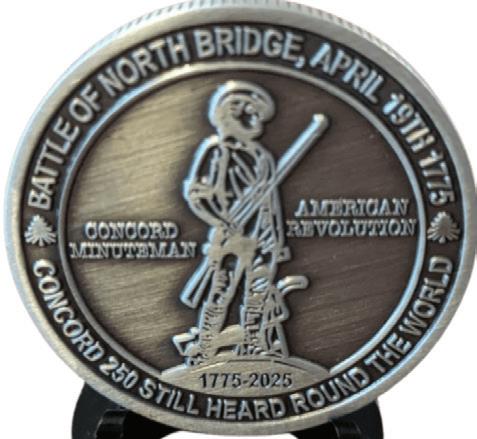
Celebrating the semiquincentennial and the shot heard round the world! Choose from polished nickel proof or antique silver finish. Available at Middlesex Savings Bank, Revolutionary Concord, Concord’s Colonial Inn, or the Concord Visitor Center
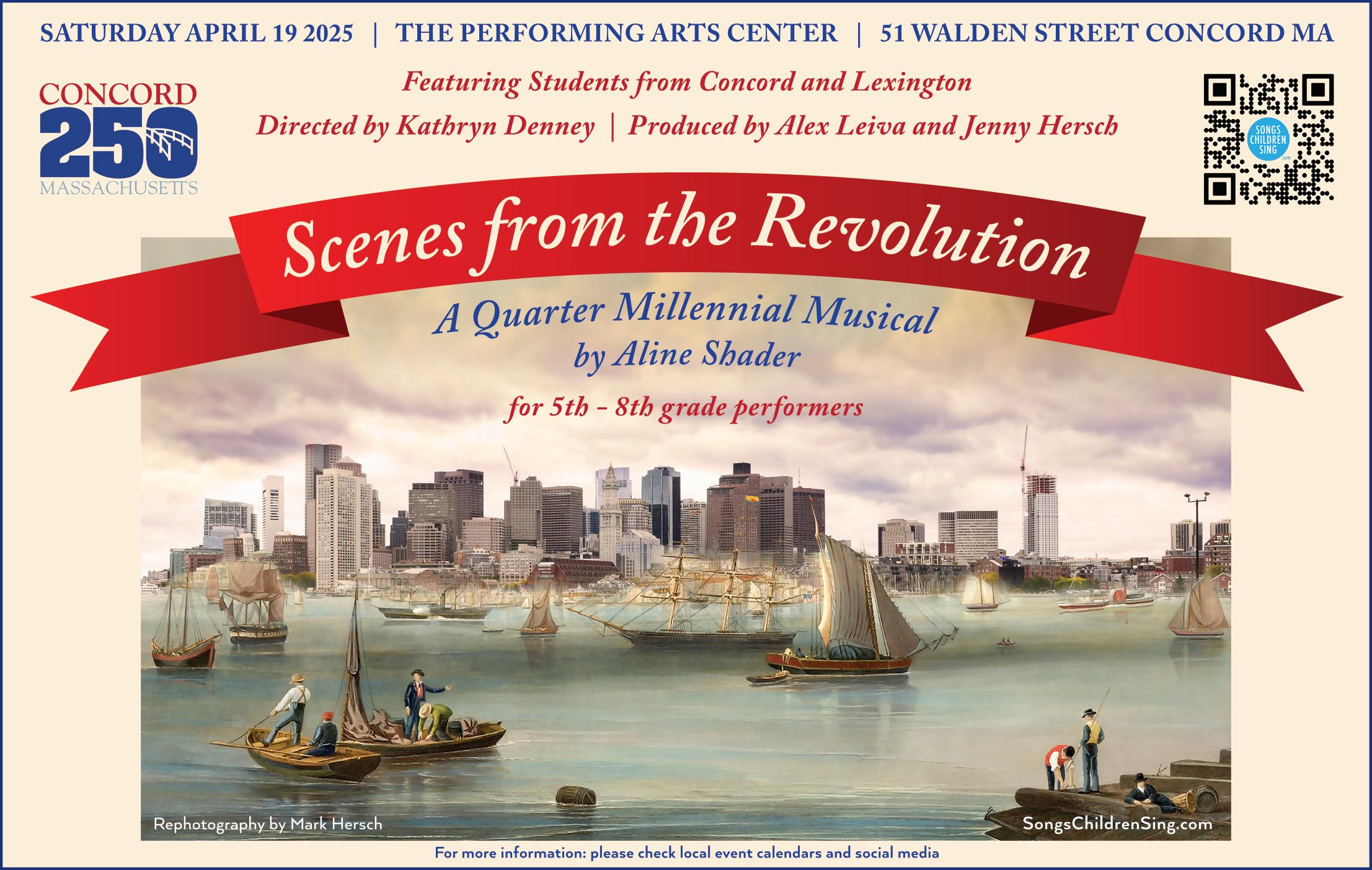
BY MARYBETH KELLY
“The tread of this lady through the unfrequented paths of Emerson’s domestic life is so noiseless that only a rare footfall here and there reaches the ear of the biographer.”
~ from Ralph Waldo Emerson, by O. W. Firkins
BBehind every great man is a great woman. Fortunately, this is one of those outdated adages that we’ve removed from our lexicon. Spend just a little time reading the history of remarkable citizens, and discover a partner who stands shoulder to shoulder with their famous spouse and shares equally in helping shape a culture. Eleanor Roosevelt, Sophia Hawthorne, and Doug Emhoff, to name a few.
On the list of Concord’s notable 19th century women about whom few people know is Lidian Emerson Jackson; so little is written of her many talents, quiet fortitude, and unwavering support of her famous husband, Ralph Waldo Emerson.
She was Waldo’s second wife, succeeding his marriage to Ellen Tucker in 1829. Love letters between Ellen and Waldo reveal a great and passionate connection. Their

life together was tragically ended after eighteen short months when Ellen died of tuberculosis. The heartache and trauma that ensued precipitated Waldo’s trip to Europe in 1832, where he immersed himself in Transcendental philosophy.
Lydia Jackson was born in 1802 in Plymouth, Massachusetts. Orphaned at 16, her severe childhood was filled with periods of loss and depression. At 19, she barely survived a bout of scarlet fever. For the remainder of her life she would suffer from ill-health. Like many women of this period, Lydia was prescribed Calomel by wellmeaning physicians. This commonly used, addictive drug contained mercury and ultimately damaged the patient’s health.
She attended a lecture in Plymouth in 1834. It was here she first laid eyes on Waldo. In the next day’s journal she writes that
she was so “lifted to higher thoughts” upon hearing Mr. Emerson’s lecture, that she had to “hurry home before the thoughts could be tainted with everyday things.” At another lecture, the couple was formally introduced. Soon thereafter, a letter arrived from Waldo with a proposal. They were married in 1835 in her family’s parlor and traveled to Concord to begin their new life.
It was Waldo who asked her to change her name from Lydia to Lidian. He abhorred the lazy New England tongue, always putting the letter R in the wrong place, and knew her married name as Lydia Emerson would become Lydier Emerson. Lydia agreed and was forevermore Lidian.
She was not inclined to enjoy the role of homemaker, especially those domestic expectations of 19th century women. In fact, prior to meeting Waldo, she noted in her
diary that she did not think herself suitable for such a position. She also noted her dislike of the “spinster” alternative.
For forty-six years she served as Waldo’s wife, mother of their four children, and keeper of their home in Concord – The Bush. She played hostess to the ceaseless file of visitors seeking the company of the great sage. At times she wondered aloud whether she would ever be alone in her home.
Upon the birth of their first daughter in 1839, Lidian presented the newborn to Waldo and stated that she wished for the baby to be named Ellen Tucker Emerson after Waldo’s first wife. It seems an extraordinary gesture from a loving and confident new mother. Daughter Ellen would go on to become the seminal caretaker for both Lidian and Waldo for the remainder of their lives.
Lidian was the family’s comedian and entertainer. Journal entries attest to her popularity. Waldo commented on how saddened guests would become when he arrived without Lidian on his arm. Known as a gifted conversationalist, she was the belle of Concord’s social order.
A superior intellectual, she was well-read and involved in many important issues of the day. She was outspoken on women’s rights, the lives of Native Americans, and abolition. It was Lidian’s steady prodding that helped Waldo engage in the anti-slavery movement. But of all her causes, it was the welfare of animals that spoke the loudest to Lidian. Daughter Ellen writes in her diary of many occasions where Lidian stepped in to rescue and heal a needy chicken or feral cat.
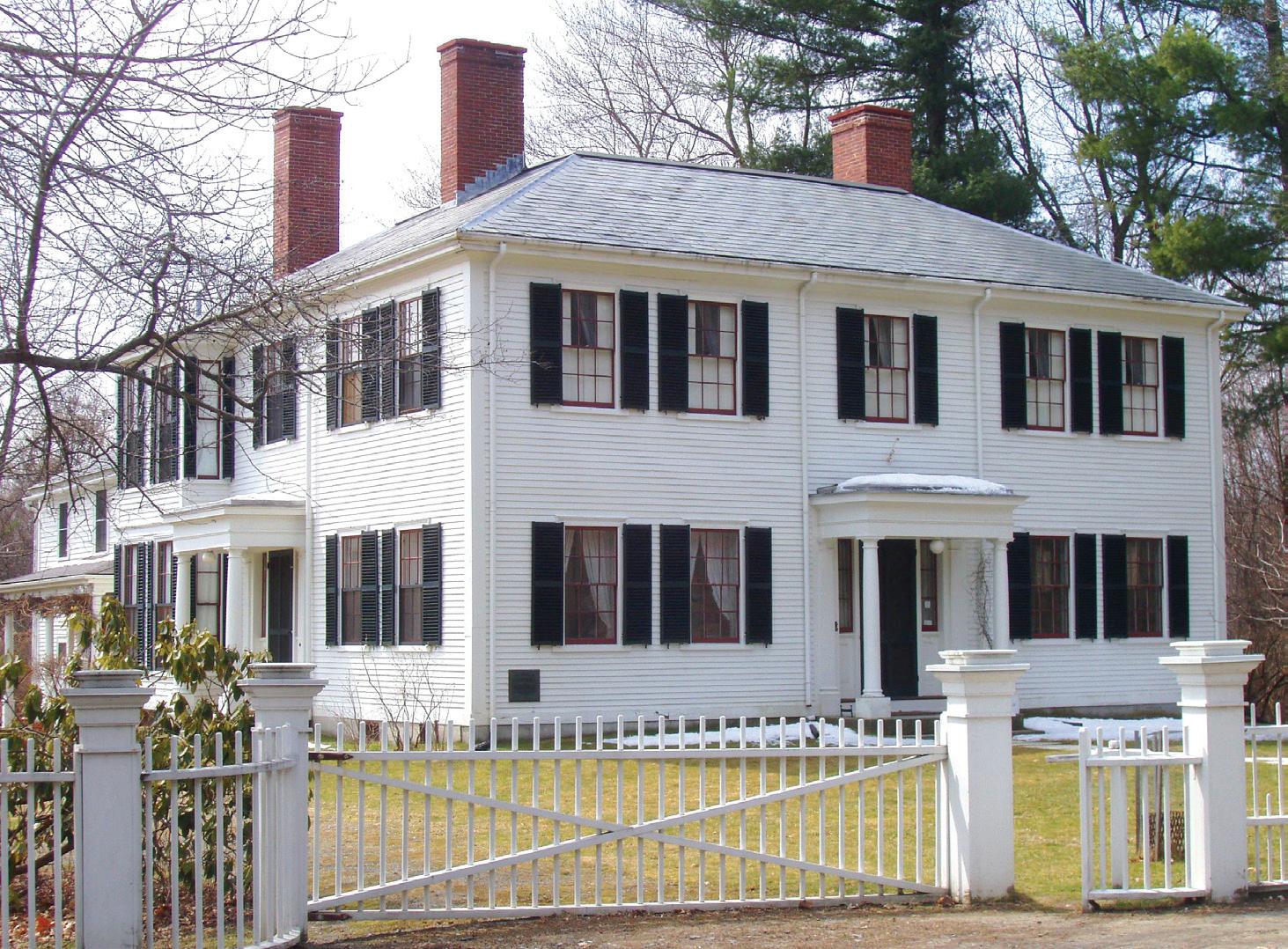
Periods of depression often visited Lidian. The death of their first child, Waldo, in 1842, brought about a lengthy time of anguish.
But again and again, we read in journals and letters of Lidian’s recovery. On rare occasions, sitting alone beside her husband in his study in the evening, discussing his day’s writing, seem to be her happiest moments.
It was Lidian who kept the world-famous Emerson’s feet on the ground. He was especially drawn to her wit and gift for conversation. “I like to see her security and I know that whatever stranger is present will soon recognize the weight of what she says. She is equal to anything they may bring up,” he wrote.
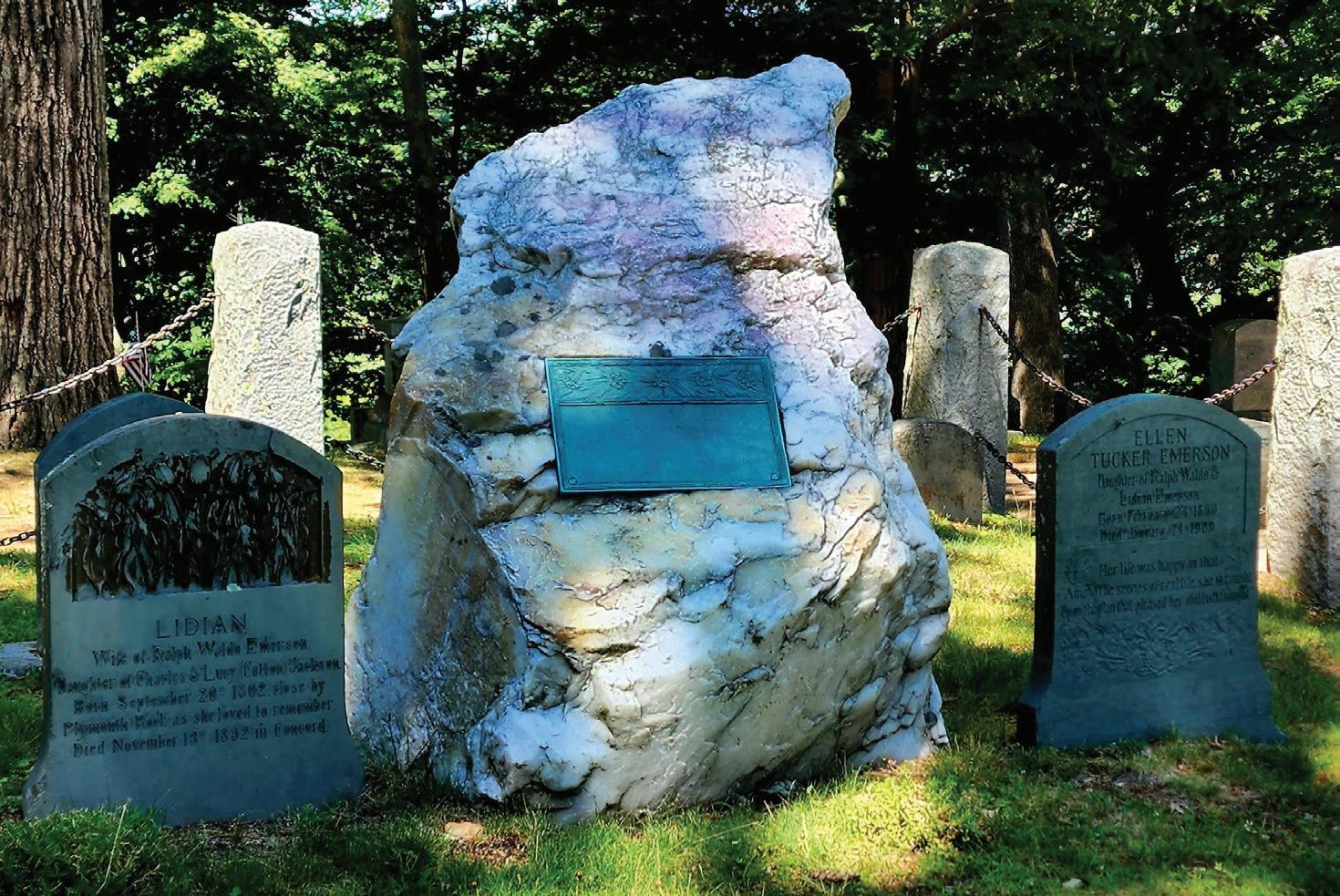
Although their views on Christianity differed, Waldo’s and Lidian’s mutual respect for each other remained at the forefront. Theirs was a bond built on a solid foundation of trust. How much of an influence was Lidian on her husband? A close, personal friend of the couple, Mrs. Nathan Brooks, remarked, “Mr. Emerson wouldn’t be the man he is if it weren’t for Mrs. Emerson. People have no idea how much he owes to his wife.” (1 June 1895)
At the end of his life, suffering from dementia, Waldo spent his days in the company of his wife and daughters. Daughter Ellen was his constant nursemaid. Perhaps in those final years he still had the ability to remember the past more clearly than the present. What he would have remembered was Lidian’s steadfast devotion and love. And in the end, her steady hand and “love’s austere and lonely offices.” She survived him by a decade and now resides for eternity in Sleepy Hollow Cemetery at Waldo’s side.
Acknowledgements:
The Life of Lidian Jackson Emerson by Ellen Tucker Emerson
Anke Voss, Curator, The Concord Free Public Library
And with sincere gratitude to Ellen Emerson and The Ralph Waldo Emerson Museum
Marybeth Kelly is a historic interpreter who resides in her beloved Concord.
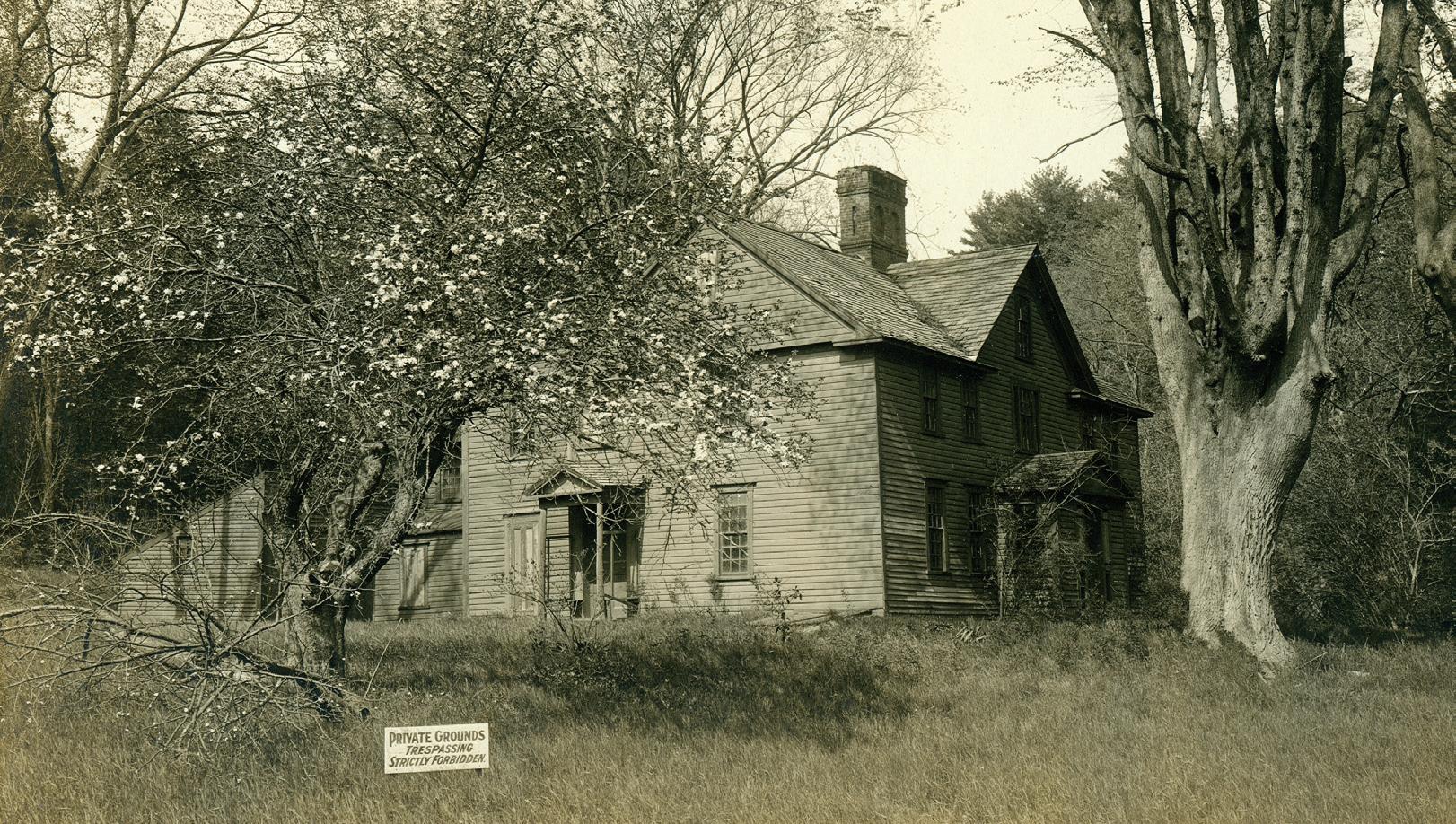
BY JAN TURNQUIST
IIn 1910, the home of one of the world’s most beloved authors was up for sale and likely to be demolished. It had been built in the mid1600s and had been vacant for years. “Private Property” and “No Trespassing” signs were nearly obscured by tall grass, giving the overall impression of sad dilapidation. The real estate prospectus read, “perfect site for a new mansion.”
The course of history was changed by the foresight of neighboring Wayside resident Harriett Lothrop, better known as the author Margaret Sidney. Harriett purchased the home and persuaded a group of Concord women to save it. The goal was to open it as a memorial to Louisa May Alcott and her family’s legacy in literature, education, the arts, and social justice.
On April 5, 1911, a small band of intrepid women who had met through the Concord Woman’s Club, formed The Louisa May Alcott Memorial Association with the help of their husbands. The men were essential because females lacked the required legal standing to form a non-profit corporation! After the gentlemen fulfilled the legal requirement, the women took over, raising funds to purchase

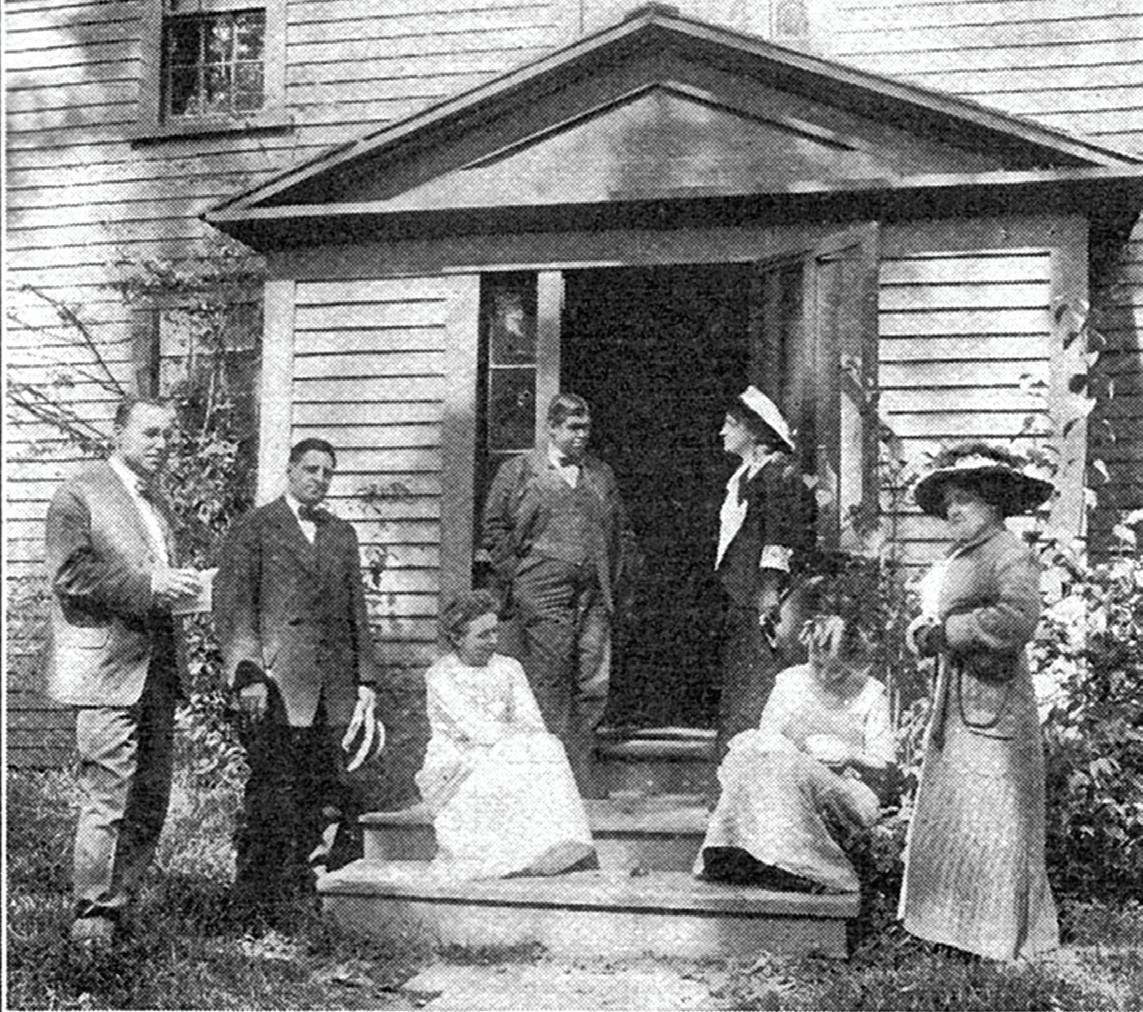
Orchard House from Mrs. Lothrop “with all the land in front of it and 20 to 30 feet in the side and back.” Private donations poured in from around the world—including a dime from a girl in Hungary!—and totaled $8,000 for the purchase and “for papering, furnishing, and a maintenance fund,” noted an article in the Concord Patriot.
Louisa’s nephew, John Sewall Pratt Alcott, provided original furnishings, which were still in the family, as well as vital advice on placement and paint colors. John noted that “The house was in such a bad condition that one of the carpenters . . . advised . . . ‘tear it all down and build a new one.’” Happily, that advice was ignored, and “Apple Slump,” as Louisa had called Orchard House, was preserved with all its flaws. For nearly a year before the work was completed, eager visitors were admitted, and the first Guest Book was begun on July 13, 1911. The price of admission was set at 25 cents.
Finally, the official opening of Orchard House was held on May 27, 1912. People
came from across the globe, as Alcott, an international sensation in her own lifetime, continued to grow in popularity. Honored guests included descendants of the Alcotts and other notable Concord families, including Ralph Waldo Emerson’s son, Edward, a frequent attendee at the many Alcott evening entertainments. John Alcott reminisced about living in Orchard House with his Alcott grandparents, his mother, Anna, and his Aunt Louisa after his father’s death in 1870. The Christian Science Monitor estimated 250 people visited Orchard House that day. Today, Orchard House welcomes more than 60,000 visitors each year. LouisaMayAlcott.org
Jan Turnquist is executive director of Louisa May Alcott’s Orchard House, an internationally acclaimed portrayer of Louisa May Alcott, historical consultant, and Emmy winner for her Orchard House documentary which airs and streams on PBS.
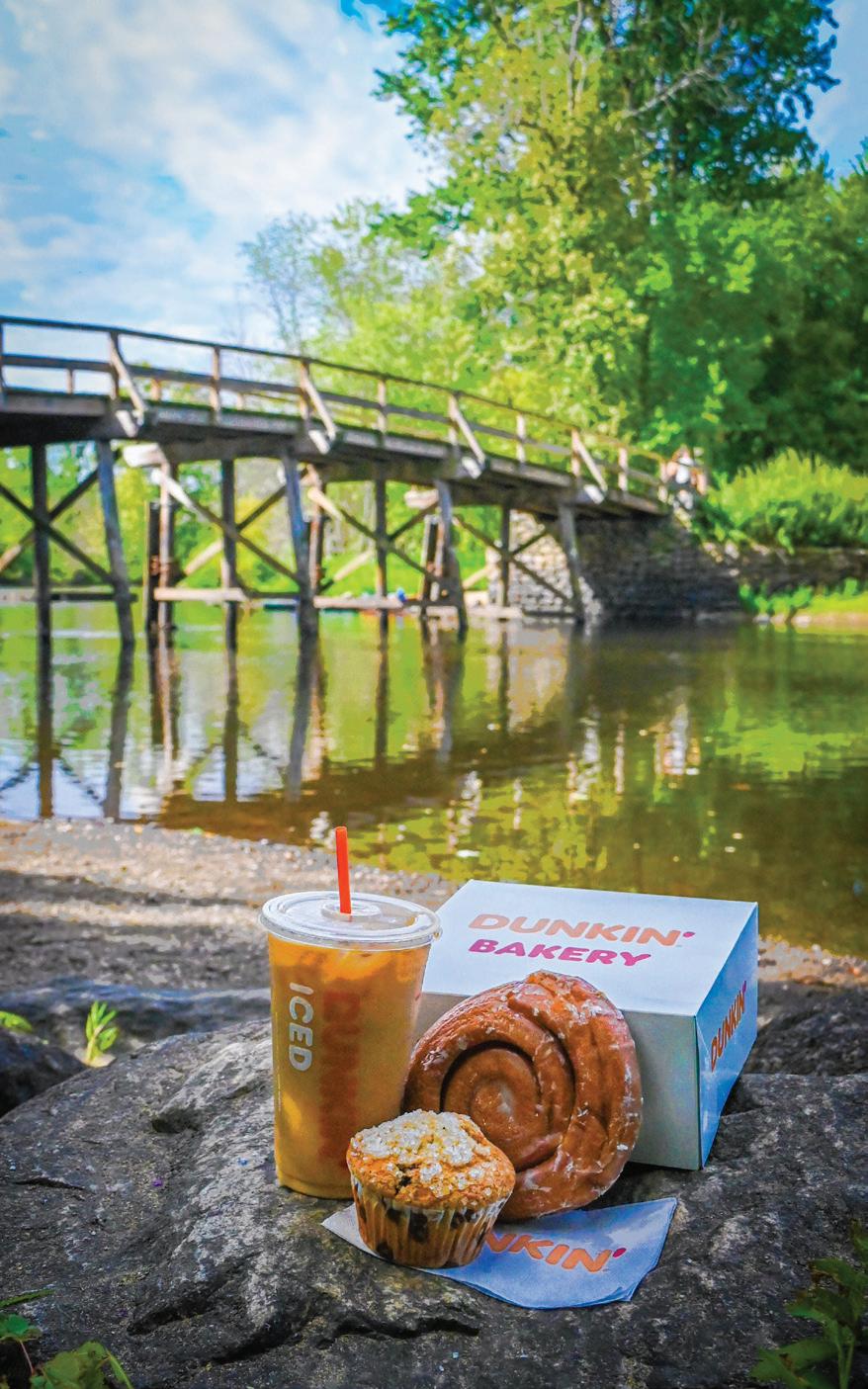
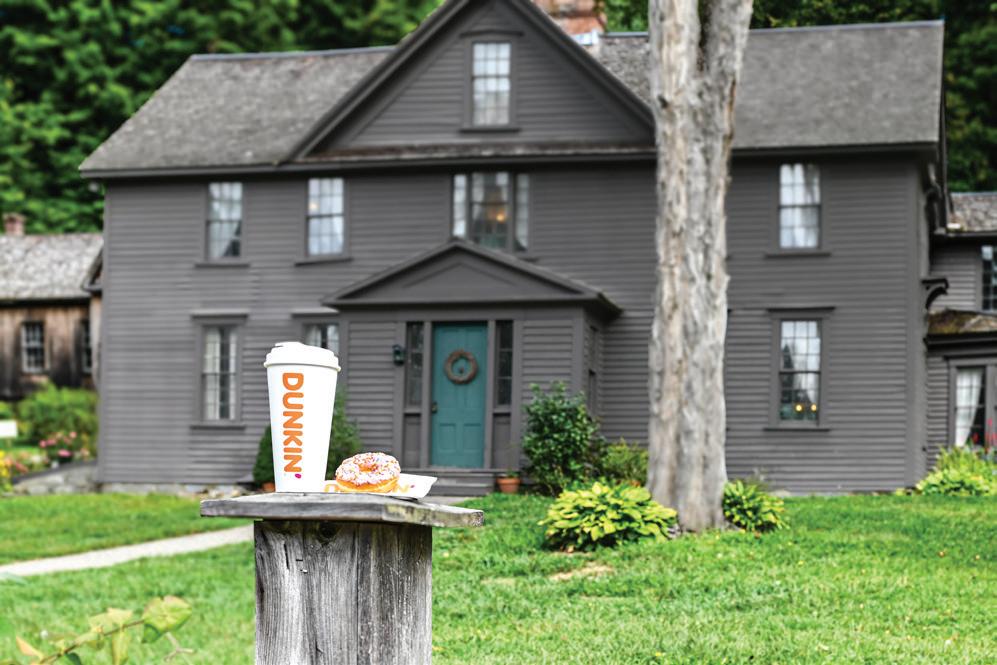

Did you know that all of the Dunkin’ locations in Concord are locally owned and operated? So when you fuel up, or give the gift of delicious coffee from Dunkin’, you are supporting a Concord family too!
117 Thoreau St | 1191 Main St, West Concord | 1641 Sudbury Rd Now Open! 794 Elm Street 978-371-1442
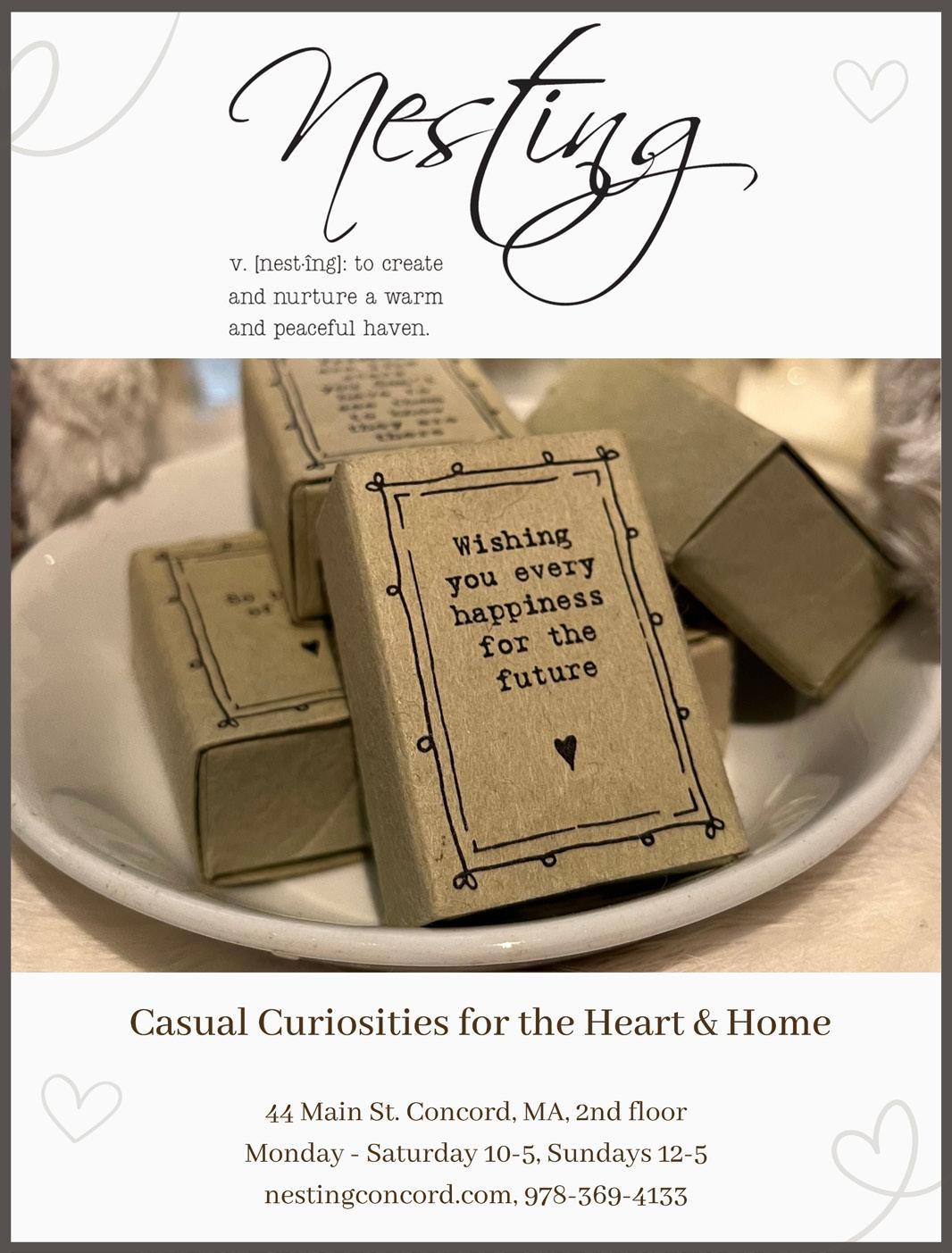
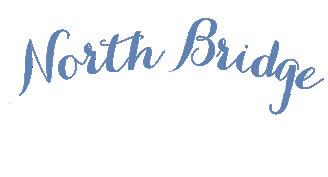

Fine antiques including Americana
Serving the Concord Community for over 30 Years
Monday through Saturday 10-5
Sunday 12-5
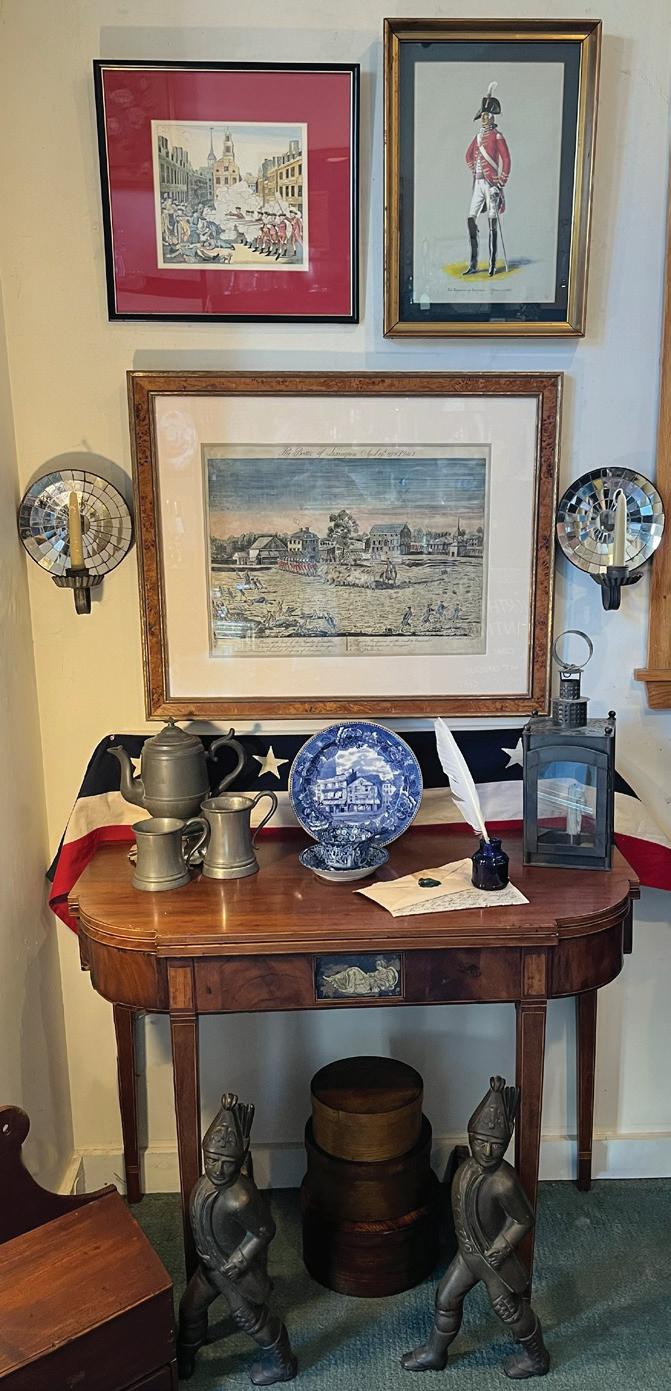
BY CYNTHIA L. BAUDENDISTEL
MUSIC
CONCORD BAND
51 Walden | concordband.org
WINTER CONCERT
Warm up a chilly winter evening with the magic of music! Join The Concord Band for their Winter Concert, Music from Warm Places, an enchanting night filled with melodies designed to uplift and inspire. Don’t miss this unforgettable celebration of music! March 8 from 7:00 – 9:00 pm.
SPRING POPS!
This year, The Concord Band will present two very different themes in its Spring Pops offering. The first, a performance of North Bridge Portrait by Stephen Bulla, commemorates Concord250 and the historic events surrounding “the shot heard ‘round the world.” The second theme of the evening will be an exciting and innovative program inspired by video games and comics, including Epic Gaming Themes, Guardians of the Galaxy Video Games Live, and more! April 11 from 7:00 – 9:00 pm.
CONCORD CHAMBER MUSIC SOCIETY
Concord Academy Performing Arts Center | ConcordChamberMusic.org
WENDY PUTNAM, VIOLIN & VYTAS BAKSYS, PIANO
An intriguing program of works by American composers that includes a tribute to the American Revolution with Vieuxtemps’ Souvenir d’Amerique – virtuosic variations on “Yankee Doodle.” March 9 at 3:00 pm at Lexington’s Scottish Rite Masonic Museum & Library.
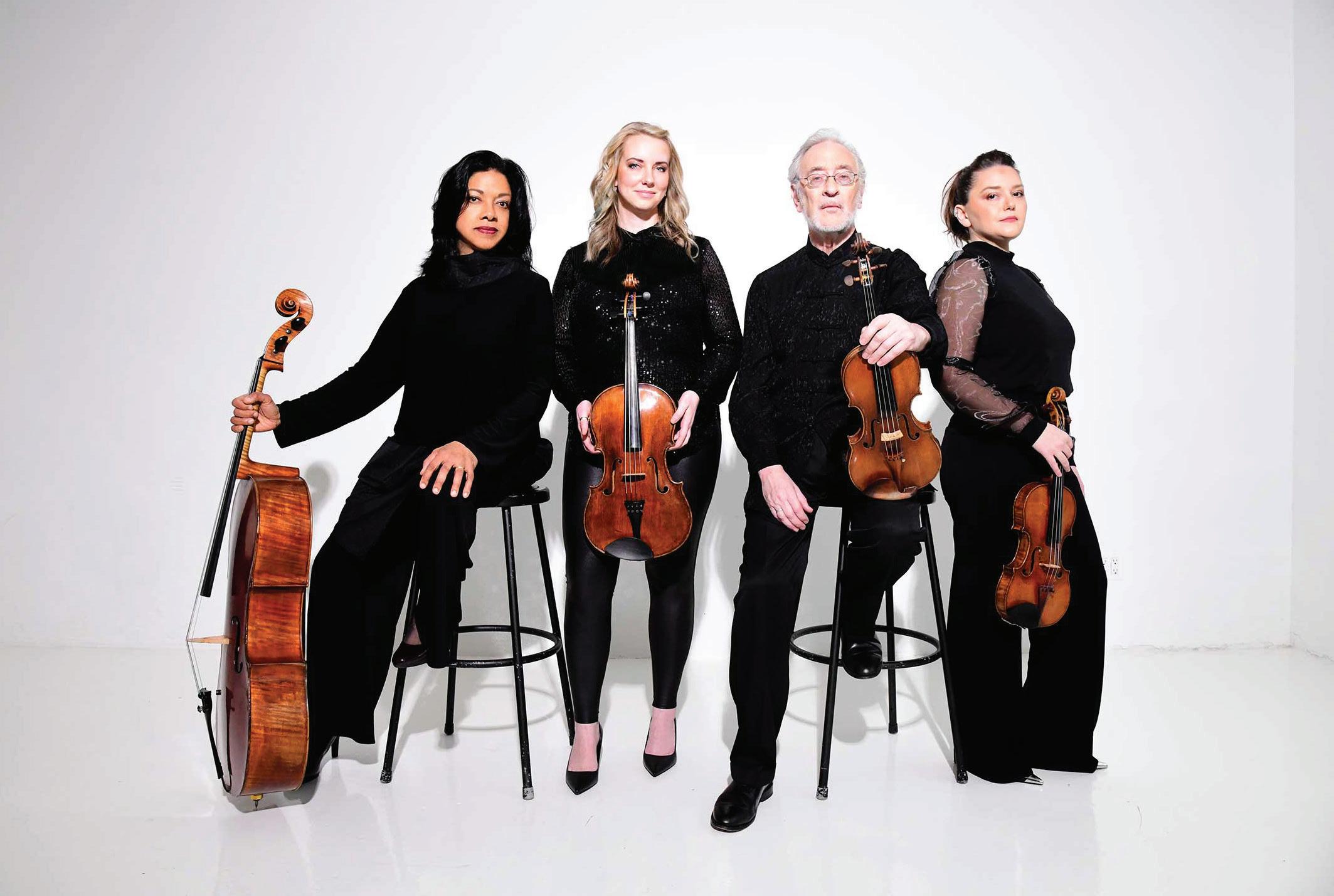
Founded in 1946 and hailed by The Boston Globe as “the most important American quartet in history,” the ensemble draws on a deep and vital engagement to the classics, while embracing the mission of championing new works, a vibrant combination of the familiar and the daring. April 13 at 3:00 pm at the Concord Academy Performing Arts Center.
CONCORD CONSERVATORY OF MUSIC
1317 Main St | ConcordConservatory.org
MUSIC & REBELS
Discover the rebels and revolutionaries who shaped music history, from Monteverdi and Beethoven to modern innovators. Experience how these composers defied conventions and transformed the course of music history. The program will feature the world premiere of Unrest by local composer and CCM faculty member Aaron Jay Myers. Join CCM faculty speaker Jackson Carruthers as he explores how each featured work challenged the norms of its time, propelling both the artform and its audience into a new era. February 7 at 7:30 pm.
Immerse yourself in a multi-sensory musical experience! Families are invited to enjoy an engaging concert adventure featuring chamber music, captivating visuals, and interactive floor art creation. Somerville’s own chamber ensemble, Around Hear, will perform pieces by J.S. Bach, Dvořák, and local composers Mike Kelley and Dan Sedgwick, whose compositions explore
themes as diverse as exoplanets and pigeons! March 22 at 2:00 pm.
Described by Bluegrass Unlimited magazine as “on the cutting edge of creativity,” the award-winning bluegrass band Southern Rail returns to Concord with high energy exuberant fun and stunning harmonies. Join in the irrepressible good humor! April 26 at 7:00 pm.
51 Walden | ConcordOrchestra.com
AMERICAN HERITAGE CONCERT
Concord Orchestra is proud to present a musical evening that will feature a commission by Jeff Beal celebrating the 250th anniversary of the fight at the Old North Bridge. Also on the program is Mozart’s Horn Concerto No. 3 with soloist Richard Sebring, A Sousa Surprise! by Sousa, and Bernstein’s Candide Overture. March 29 at 8:00 pm (7:15 pm pre-concert conductor talk). March 30 at 2:30 pm.
CONCORD WOMEN’S CHORUS
81 Elm St | ConcordWomensChorus.org
SONGS OF THE REVOLUTION
In commemoration of 250 years since the American Revolution began, Diane Taraz takes audiences on a musical journey down the road to rebellion, featuring songs cherished by everyday people, including those who are often overlooked—women and people of color. Her program includes lively ballads, serene hymns, bold marches, heartfelt laments, and tunes composed by
both sides to promote either independence or loyalty to the crown. Dressed in an 18th century gown, Diane performs on authentic instruments such as a lap dulcimer and an “English guitar,” a favorite among women of the era. March 23 at 3:00 pm at First Parish in Concord.
In honor of the 250th anniversary of the historic battles of Concord and Lexington, Concord Women’s Chorus presents a program of women composers writing for women’s voices. Featuring the texts of famous Concord (and New England) authors (including Henry Wadsworth Longfellow, Ralph Waldo Emerson, Lidian Jackson Emerson, Martha Lawrence Prescott, and more), the concert features works by Libby Larsen, Melissa Dunphy, Rosephanye Powell, Tara Traxler, and a new arrangement of Ralph Waldo Emerson’s The Concord Hymn. May 3 at 4:00 pm at Trinity Episcopal Church.
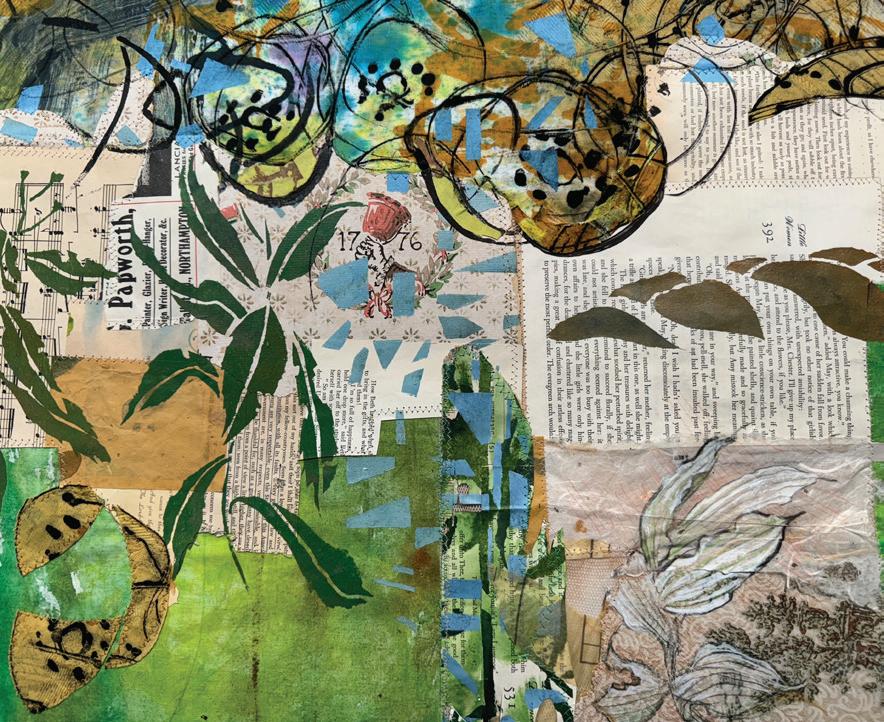
THREE STONES GALLERY
32 Main St | threestonesgallery.com ONWARD
The first show of the new year features illuminating pastels by Cindy Crimmin and flowing abstract paintings by Rachel Korn. New guest artist Britt Snyder captures haunting memories in a classical figurative style with a delicately blurred palette, as if looking through a frosted window. On display through February 16.
This show features cityscapes by Kevin Kusiolek, mixed media works on paper by Mara Wagner, and floral drawings by Alice Rosa. New works by Judy Bramhall, Ray Ciemny, Cindy Cremmin, and Jillian Demeri will also be on display. February 19 – March 30. Reception: March 1 from 6:00 – 8:00 pm.

In celebration of the spirit of our country’s early Patriots, this show highlights the theme of Transcendentalism with textile creations by Merill Comeau, Kimberley Harding, Karen Henderson, Lucy Nims-LaFleche, and Ellen Solari. New works by Daryl Burnett, Patti Ganek, Natasha Dikareva, and Kevin Kusiolek will also be on display. April 2 –May 11. Reception: April 10 from 6:00 – 8:00 pm.
THE UMBRELLA ARTS CENTER
space but experience it in different ways. Some elements are sharp and specific. Some elements are abstracted and can be interpreted in multiple ways. Darkness might be water or the depths of space. Bits of light could be air bubbles or stars.” January 13 –March 23
CONCORD PLAYERS

40 Stow Street | TheUmbrellaArts.org
2025 ARTRAGEOUS GALA & AUCTION
Mark your calendars for a wicked good night featuring a celebration of this year’s Elizabeth Cochary Gross Stewardship of the Arts honoree Gregory Maguire! Former Umbrella board member, fierce advocate of children’s literacy, and devoted steward of the arts, Gregory is a celebrated novelist and the best-selling author of Wicked: The Life and Times of the Wicked Witch of the West which inspired the Tony award-winning musical and two-part film adaptation. He is the co-founder of the nonprofit organization Children’s Literature New England, whose aim is focusing attention on the significance of literature in the lives of children. April 5
TWICE THE SPEED OF BLISS
Paintings and Drawings by Kat O’Connor
Kat O’Connor is a full-time artist and art instructor living outside of Boston, Massachusetts. She has lead painting classes in Texas, New Mexico, Italy, Greece, and throughout New England. Kat says, “For me, swimming is a metaphor for painting. The painter and the viewer enter the same
51 Walden St | concordplayers.org SHAKESPEARE IN LOVE It’s 1593 in London, and William Shakespeare, a struggling playwright and occasional actor, is desperately trying to complete his latest work, Romeo and Ethel, the Pirate’s Daughter. Enter Viola de Lesseps, a young woman with dreams of performing on stage—a forbidden ambition in an era when only men are allowed to act. Disguised as a man, Viola auditions and lands a leading role in Will’s play—and in his heart. Based on the Academy Award-winning film, Shakespeare in Love is a delightful blend of humor, romance, and drama, offering a whimsical reimagining of the muse behind Shakespeare’s immortal Juliet and the timeless love story he brought to life. February 14 – March 1
THE UMBRELLA ARTS CENTER
40 Stow St | TheUmbrellaArts.org
Don’t miss this provocative new multimedia stage adaptation of a cinematic masterpiece. The 1976 film dominated the Academy Awards and was a prophetic masterpiece. Nearly 50 years later, the story remains relevant as the world grapples with truth, authenticity, and the search for meaning in a digital age. September 20 – November 3










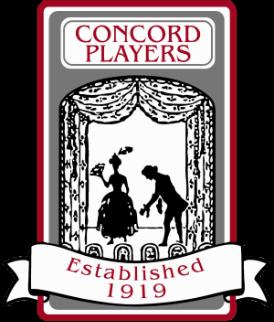














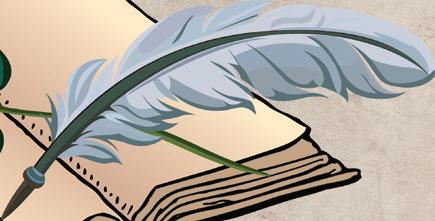


































































BY JAIMEE LEIGH JOROFF
TThey say a person’s home is their castle. But what do you do if that castle is stolen from you?
In May of 2024, such a theft reportedly occurred in Concord, Massachusetts, when an unknown entity badly, but effectively, stole the identity of a Concord landowner and sold her land out from under her. Located on the corner of Mattison Drive and Ayrshire Lane (near Alford Circle), the sloping 1.8acre plot of land had been purchased for the woman (who we shall call “the True Concord Lady”) in 1991 before circumstances moved her out of state. For decades, the land sat patiently waiting, a symbolic “castle” safeguarding the relatable dream of “one day, when I retire, I shall go there and .” But before that day could come, as reported by multiple news outlets, an imposter hired a non-Concord area realtor, listed the land for nearly 50% below market value, and sold it to a developer who came in with bulldozers and began to build a house before the True Concord Lady’s attorney could intervene and an injunction was placed to halt work.
CBS Boston WBZ’s Investigative Team found that the Mattison Drive land theft was the first of three separate land-grab scams in Massachusetts and part of a growing nationwide trend of fraudsters stealing property owners’ identities and committing title theft by selling their land and disappearing with the profit.
It’s enough to bring any rightful landowner to their knees. But from the upturned ground

on the corner of Mattison Drive and Ayrshire Lane, there reemerges a tale that begins with an old Scottish lullaby asking, “Why should [you] sit and sigh on the sloping hillside dreary,” when you can begin to crawl and go get the castle back?
February 19, 1313/14, Scotland: In the dusk, Scotsman Sir James Douglas, an ardent supporter of Scottish King Robert the Bruce, and sixty of his loyal men covered their armor with long black cloaks, got down on their hands and knees, and began to crawl towards the castle Roxburgh. Once Douglas’ ancestral home, the castle had been seized by English forces and was now under control of English King Edward II.
Looking down from high atop the castle walls, English guards saw what appeared to be a herd of approaching cattle, an illusion broken when spears attached to rope ladders flew over the walls and Douglas’ men overran the castle. It was a momentary win for Douglas and Robert the Bruce but not the end of an age-old tale of English and Scottish kings vying for control of land and titles — a tale well-known to the highland Clan Matheson, some of whom were allies of Bruce and believed to be descendants from the first king of Scotland. The name Matheson, meaning “Sons of Heroes,” changed over the centuries so that it was
Henry Matteson who arrived in Rhode Island in 1666/7 where his descendants spent the next hundred years working as deputies and laborers.
By 1775, things were not going well in the colonies, particularly in Massachusetts where, to borrow from Shakespeare’s King Richard III, a “winter of discontent made glorious” by the Boston Tea Party had evolved into the colonists stashing weapons and stores in Concord to supply their own army.
On the night of April 18, 1775, Massachusetts’ Military Governor Thomas Gage sent an order to British officer Lt. Colonel Francis Smith, writing, “you will March with the utmost expedition and Secrecy to Concord, where you will seize and destroy all artillery, Ammunition, [etc.].”
The Battles of Lexington and Concord happened the next day, beginning the American Revolutionary War. Throughout the American colonies, men rushed to join militias, among them, now in Rhode Island and Vermont, the great-grandsons of immigrant Henry Matteson.
Two months later, in Vermont, the Green Mountain Boys captured Fort Ticonderoga from the British. Their ranks swelled to include Alexander Alford, who was among the Green Mountain Boys as they next
attacked the British in Quebec. This was intolerable to King George and Parliament; “Intolerable Acts” were their realm!
Reinforcement troops were sent from Britain. Among them, coming in part from Ayrshire, Scotland, was the 21st Regiment of Foot, the Royal Scots Fusiliers.
If you’ve ever given an employee performance review, you may recognize the “manure-sandwich technique” which was well demonstrated by the Fusiliers who, after arriving in Quebec in 1776, marched south into Vermont and recaptured Fort Ticonderoga. This was good (for Britain). Then, under the command of British General Burgoyne, they participated in the Battle of Saratoga, where all who survived were captured when Burgoyne was forced to surrender. That was bad for them as they likely spent the next five years being marched around the colonies (all the way down to Virginia) by the Patriots as a captive army. When the war ended, the 21st Royal Scots Fusiliers went home to Ayrshire (that was good) where a now smaller British empire turned an eye inward to improving life in the lands they still had.
In Ayrshire, one of these improvements included developing a new breed of cow called “Ayrshires.” White with chestnut markings, Ayrshires were superior producers of high-fat milk, the sweetness of which was mirrored by their gentle dispositions. They thrived on rocky ground and in varied weather.
In 1822, Ayrshires were shipped to New England, particularly to Vermont where, by
now, a number of Mattesons had moved from Rhode Island and their surname changed to Mattison.
Here, William B. Mattison (a direct descendant of immigrant Henry Matteson) met and married Harriet Cole whom legend says was descended from an Old English mythical king known through the children’s rhyme “Old King Cole was a merry old soul, and a merry old soul was he.”
Three generations later, their great-grandson, William Mattison Sr., married Elizabeth Alford, the thirdgreat-granddaughter of the aforementioned Green Mountain Boy Alexander Alford who had attacked Quebec and later been a Green Mountain Ranger involved with defeating the unfortunate Ayrshire Fusiliers in the Saratoga Campaign.
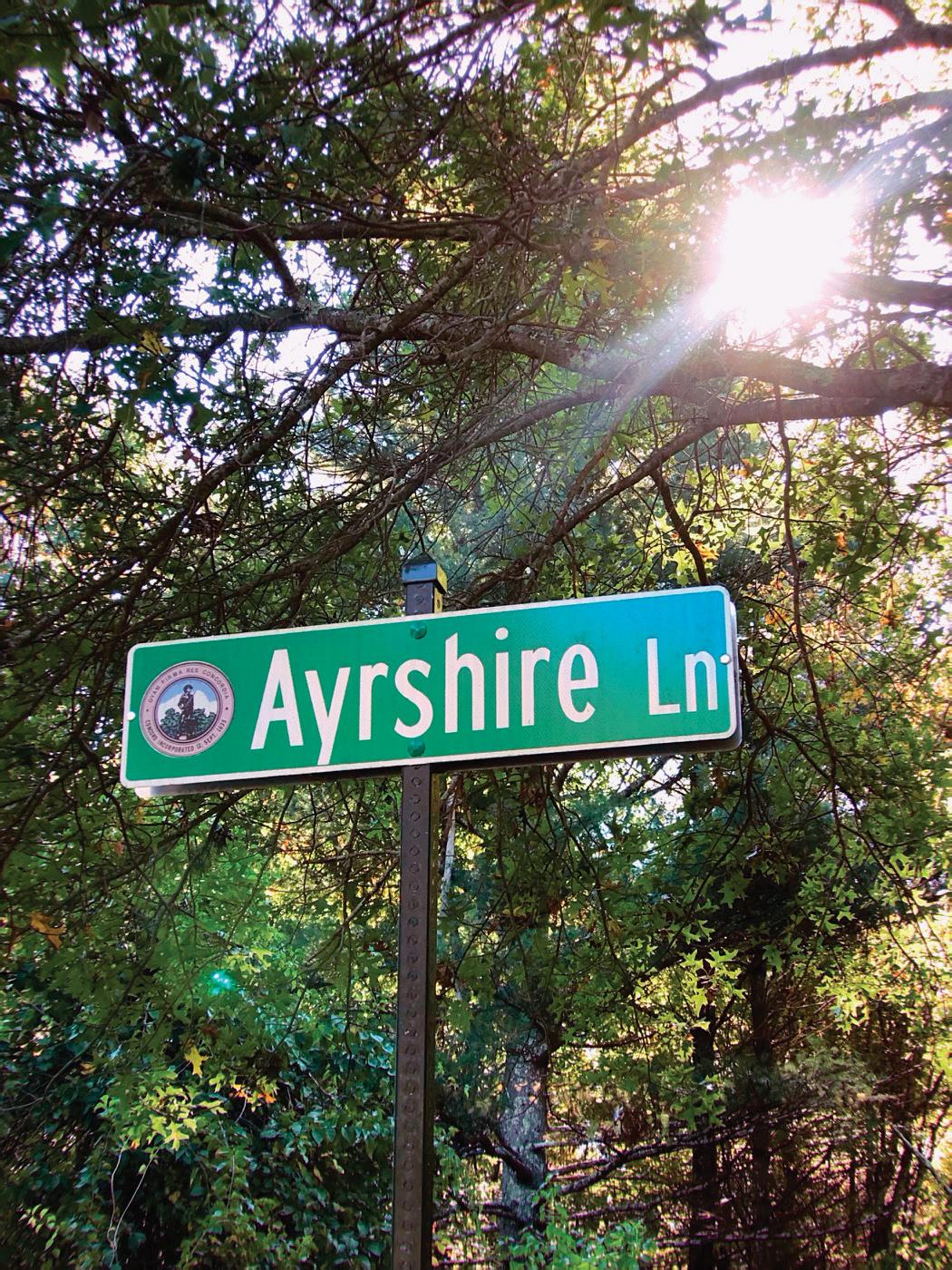
In 1935, William and Elizabeth moved to Concord, Massachusetts, where they purchased a farm on Williams Road from the Williams family, Irish immigrants who had worked the land as a “truck farm” (a farm that grew produce for transport via train to distant markets).
Over time, the Mattison’s farm expanded to 300 acres. They bought Ayrshire cows and became a busy dairy farm. As described in a 1997 oral interview with William “Jack”
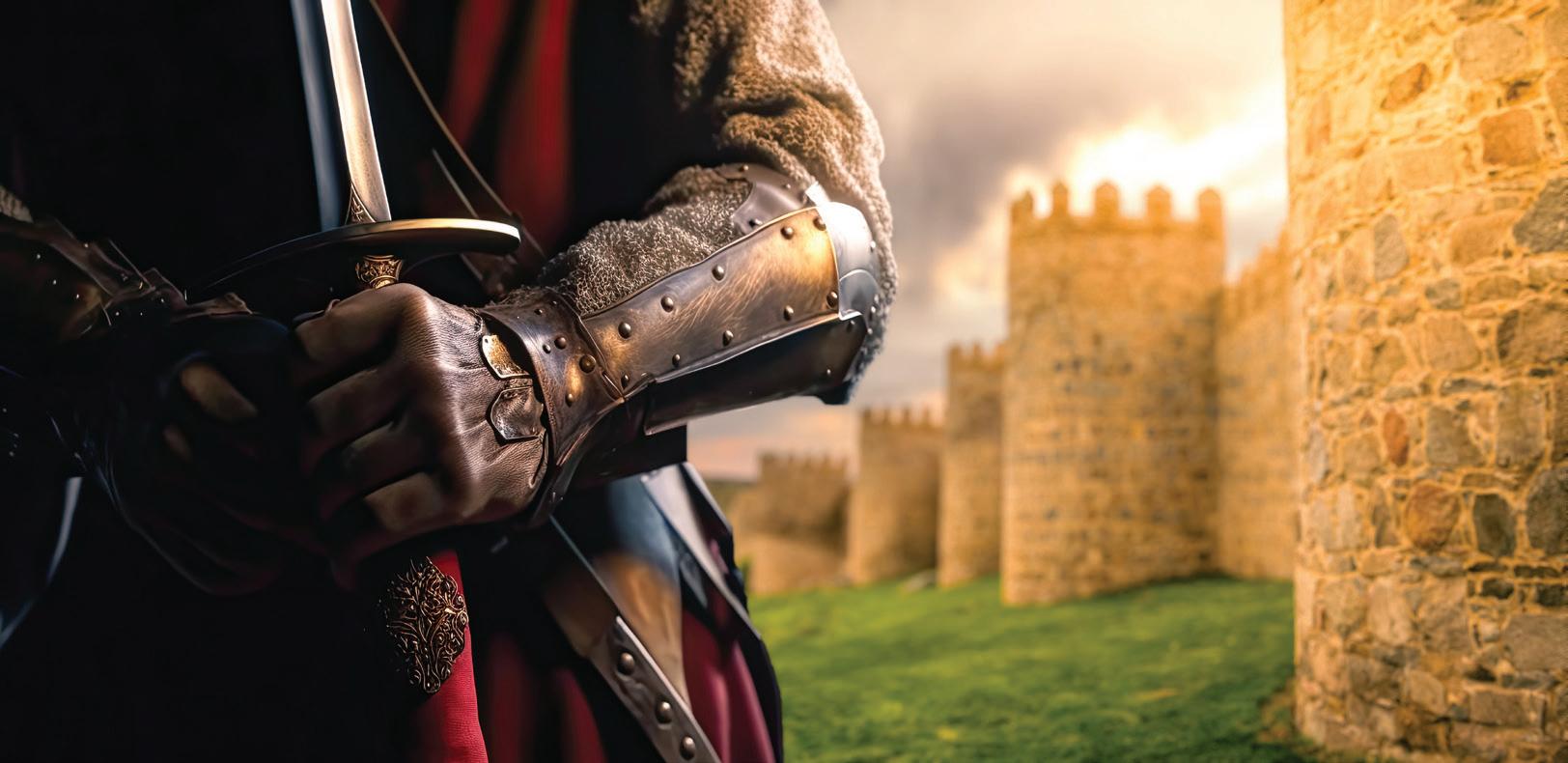
Mattison Jr. by Concord historian Renee Garrelick (available courtesy of the Concord Library William Munroe Special Collections), the Mattisons’ herd reached 250 cows, and “there was a sign hanging in front of the property that said Arrowhead Ayrshires, [showing] two cows and an oak tree.”
Recalled Mattison, at milking time, on their own, the gentle cows lined up at home and patiently waited for you.
In 1986, the Mattisons ceased dairy farming and began selling the farm, the land going to conservation areas or developers who broke it into lots including the True Concord Lady’s section.
Today, the stolen lot sits surrounded by fencing as the case is investigated by the FBI and tied up in court. Some might say they’ll be arguing about it until the cows come home. But as history has shown, when it comes to stolen castles, sometimes cows do come home sooner than later.
For source list, please email barrowbookstore@gmail.com
A Concord native, Jaimee Joroff is manager of the Barrow Bookstore in Concord Center, which specializes in Concord history, Transcendentalism, and literary figures. She has been an interpreter at most of Concord’s historic sites and is a licensed town guide.



I like whooshing gusts
of cold, cold snow
that blow and blow
Snowflakes are clusters of tiny ice crystals. When these crystals grow too heavy for the air to hold, they flutter from the clouds as snow.


Snow freezes in complicated shapes. The shapes, called ice crystals, have six branches or six sides. Ice crystals, especially those that form in very cold skies, can look like stars, flowers, jewels, or elegant glass plates. No two are exactly the same.

In winter, snow acts as a blanket of insultation protecting tree roots and hibernating animals from extreme cold. When snow melts, fresh water fills rivers and lakes and seeps into our gardens, farm fields, and our sources of drinking water.



How do you feel when you are outside in the snow? Write a poem using this frame based on the lyrical words of I Like the Snow, written by Sarah Nelson and illustrated by Rachel Oldfield.
I like the snow. I like I like I like the snow. I like I like I like I like the snow.





Barefoot Books is an award-winning, 30-year-old independent children’s book publisher based in Concord, MA. Learn more by visiting www.barefootbooks.com.
Concord has many historic sites of interest. Below is contact information for each, along with their hours of operation. Please check the website before visiting, as sites may be closed on holidays or for private events.
CONCORD FREE PUBLIC LIBRARY
Concordlibrary.org
Main Branch: 129 Main Street (978) 318-3300
Monday: 10 am – 8 pm
Tuesday through Thursday: 9 am – 8 pm
Friday and Saturday: 9 am – 5 pm
Open Sundays 1 pm - 5 pm
Special Collections: 129 Main Street (978) 318-3342
Monday: 10 am – 6 pm
Tuesday through Friday: 9 am – 5 pm
CONCORD MUSEUM
Concordmuseum.org
53 Cambridge Turnpike | (978) 369-9763
January 2 - March 27
Thursday - Sunday: 10 am - 4pm
March 28 - June 30:
Monday - Friday: 10 am - 4 pm
Saturday - Sunday: 10 am - 5 pm
CONCORD VISITOR CENTER
Visitconcord.org
58 Main Street | (978) 318-3061
February/March: Open for private events, specialty tours, and group tours only
Open April 1 - Dec 31 every day: 9 am - 4 pm
LOUISA MAY ALCOTT’S ORCHARD HOUSE
Louisamayalcott.org
399 Lexington Road | (978) 369-4118
Monday - Friday: 11 am - 3:30 pm
Saturday: 10 am - 5 pm
Sunday: 1 pm - 5 pm
MINUTE MAN NATIONAL HISTORICAL PARK
Nps.gov/mima/planyourvisit/ minute-man-visitor-center.htm
250 N. Great Road (Lincoln) | (781) 674-1920
Grounds are open year-round from sunrise to sunset. The Visitor Center is closed for the season.
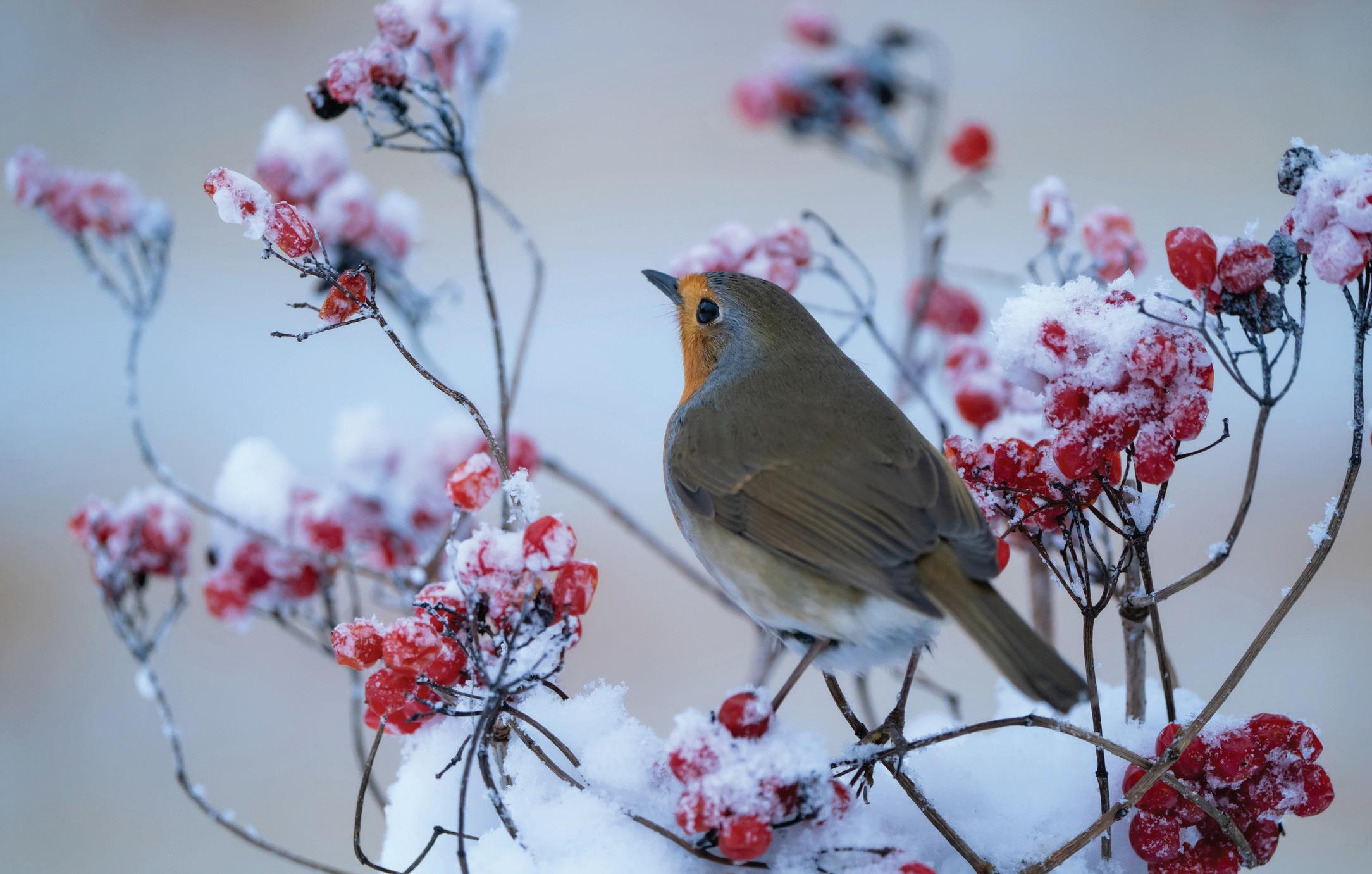
THE NORTH BRIDGE & VISITOR CENTER
Nps.gov/mima/planyourvisit/ north-bridge-visitor-center.htm 174 Liberty Street | (978) 369-6993 Grounds are open year-round from sunrise to sunset. The Visitor Center is closed for the season.
OLD HILL BURYING GROUND
FreedomsWay.org/place/old-hillburying-ground 2-12 Monument Square
THE OLD MANSE
Thetrustees.org/place/the-old-manse 269 Monument Street | (978) 369-3909
Check the website or call for hours.
THE RALPH WALDO EMERSON HOUSE
Ralphwaldoemersonhouse.org 28 Cambridge Turnpike | (978) 369-2236 Closed for the season.
THE ROBBINS HOUSE
Robbinshouse.org
320 Monument Street | (978) 254-1745 Closed for the season.
SLEEPY HOLLOW CEMETERY, INCLUDING AUTHORS RIDGE FriendsofSleepyHollow.org 120 Bedford Street | (978) 318-3233
SOUTH BRIDGE BOAT HOUSE
469 Main Street | (978) 369-9438 Closed for the season.
SOUTH BURYING GROUND
Concordma.gov/1958/SouthBurying-Ground Main Street and Keyes Road
WALDEN POND STATE RESERVATION
Mass.gov/locations/waldenpond-state-reservation 915 Walden Street | (978) 369-3254
Open daily – see website for hours
THE WAYSIDE
Nps.gov/mima
455 Lexington Road | (978) 369-6993
Call for hours and events


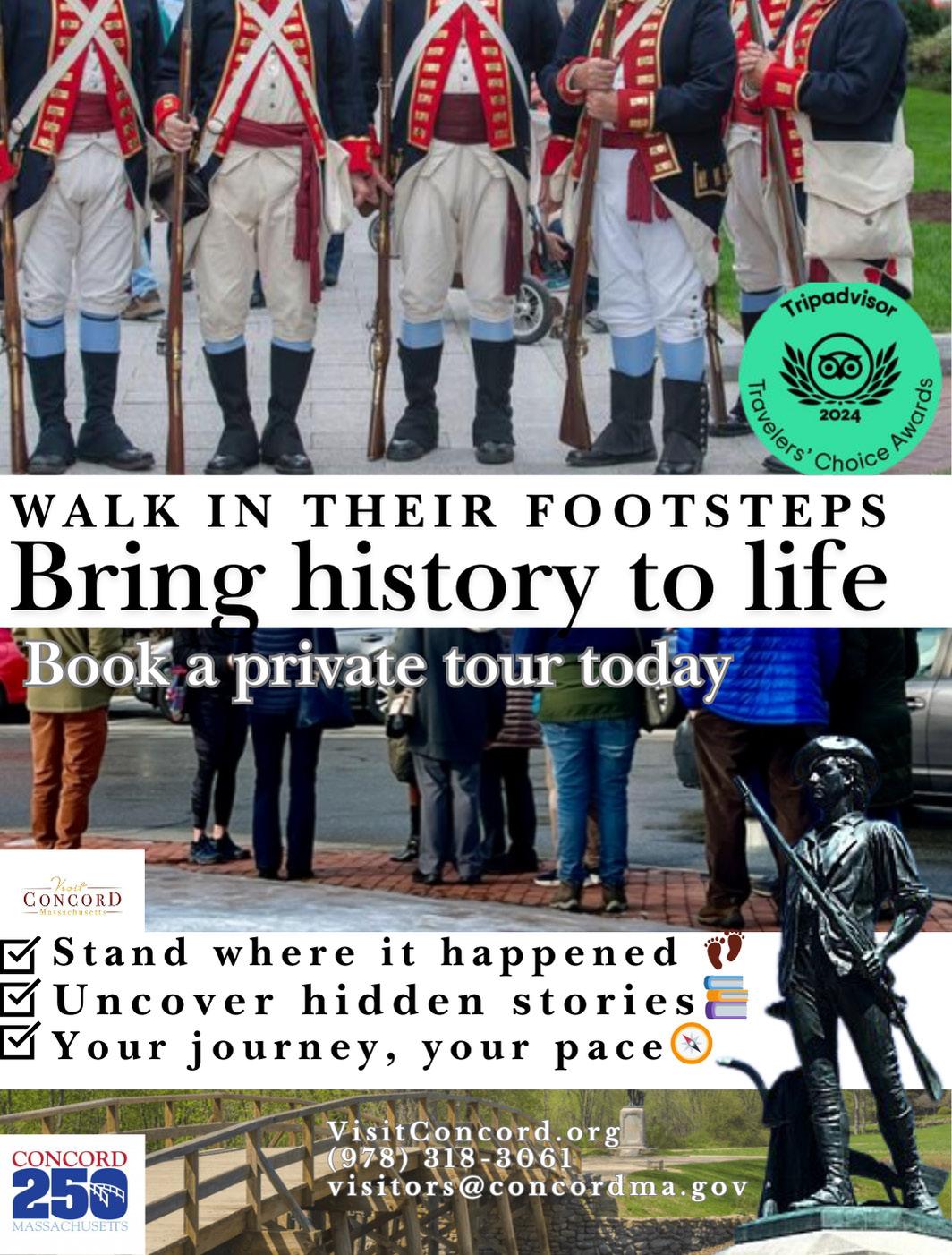

Barrow Bookstore Presents:
1
QWhich Concord authors have had their books turned into major motion pictures?
Bonus points: Name the books/movies.
A. Louisa May Alcott
B. Ralph Waldo Emerson
C. Nathaniel Hawthorne
D. Gregory Maguire
E. Margaret Sidney
2
In November 2024, a monumental change occurred in Concord Center. What was it?
A. A glass monument was installed to honor the upcoming 250th Anniversary of the Battles of Lexington and Concord.
B. The Thoreau jail site memorial was replaced with a tiny house jail that can be rolled out for school programs.
C. The Civil War Monument was restored and an updated memorial plaque added to reflect George Washington Dugan’s name as the 49th Union soldier from Concord who died during the Civil War.
Questions 3 - 10: The 250th is coming, and tourists are on the march to Concord! Kick your area and Revolutionary War knowledge up to tour-guide level and be ready at a minute’s notice to answer any visitor’s question:
3 Prior to European settlement, the area that is now Concord was the homeland of Native Americans and called “Musketaquid,” the Algonquin word for:
A. Home of the muskrats
B. Great meadows
C. Valley of the waters or where the rivers meet
D. Grassy river or grassy island
4 What year was the town of Concord incorporated by English settlers?
A. 1620
B. 1635
C. 1656
D. 1775
5Compared to other early European-settled towns in MA, Concord’s settlement was unique for what reason?
A. It was the first inland town
B. Its first European settlers included convicted witches who had escaped from England
C. Its members were all trained craftsmen and quickly built infrastructure
D. It had the first liberty pole in Massachusetts
6Following the December 16, 1773, Boston Tea Party, the British Parliament passed the Coercive Acts of 1774. Also known as “the Intolerable Acts,” the acts consisted of four laws imposed upon the colonists. Which of the below was not one of these acts?
A. The Massachusetts Government Act
B. The Boston Port Act
C. The Tariff and Tea Act
D. The Quartering Act
E. The Administration of Justice Act

9Select all that apply. Like the person in the above question, you also live in Concord in 1773, but you are exempt from militia service because you are a:
A. Farmer
B. Woman
C. Minister
7You live in Concord in early 1775. There is an empty barn on your property and your recently deceased friend’s house is sitting empty across the field from yours. Following the passage of Parliament’s Coercive Acts, you are most concerned about which of the four new acts that have been passed into law? See Question 6 for your choices.
8You live in Concord, MA, in 1773 and, as required by law, are part of the militia. You report for training four times a year and, each time, find yourself surrounded by people of what ages?
A. 17-28
B. 17-42
C. 16-60
D. 12-50
D. Quaker
10In a 1776 letter to her husband John Adams, Abigail Adams famously wrote, “Remember the ladies.” But, in the early 1770s, some Concord ladies may have preferred you didn’t take too much notice of them as they traveled up and down the road with spinning wheels in their carts. What were they likely on their way to do?
A. Attend a spinning bee
B. Subtly protest the Townshend Acts
C. Visit with friends
11Finally, the most important question you may be asked by visitors to Concord: Where is the public restroom in Concord?

A1. A, C, and D. Louisa May Alcott’s 1868 Little Women has been made into movies several times, most recently in 2019 starring Saoirse Ronan as Jo March. Published in 1850, Nathaniel Hawthorne’s The Scarlet Letter was also made into multiple films, starting with a silent film in 1926 and the latest in 1995 starring Demi Moore as Hester Prynn. Published in 1995, Gregory Maguire’s fantasy novel Wicked: The Life and Times of the Wicked Witch of the West was adapted into a Broadway play that was made into a movie starring Cynthia Erivo and Ariana Grande.
2. C. The Civil War Monument was restored and an updated memorial plaque added to reflect George Washington Dugan’s name as the 49th Union soldier from Concord who died during the Civil War. Read more in Beth Van Duzer’s article “Preserving and Updating Concord’s Civil War Memorial” at DiscoverConcordMA. com/articles/269-preserving-andupdating-concords-civil-war-monument
3. D. Grassy river or grassy island. Learn more: Visit the Concord Museum or check out Victor Curran’s article “The People of the Musketaquid: Concord’s First Residents” at DiscoverConcordMA. com/articles/436-the-people-ofmusketaquid-concords-first-residents
4. B. 1635
5. A. As described in Lemuel Shattuck’s History of Concord, Concord was the “first inland town settled above tidewaters.”
6. C. The Tariff and Tea Act is fictional and not one of the Intolerable Acts passed by Parliament. Read about how these acts affected Concord in Victor Curran’s article “A Turning Point at Wright’s Tavern” at DiscoverConcordMA.com/articles/162a-turning-point-at-wrights-tavern
7. D. The Quartering Act. The act stated that, if no barracks were available, “any officers or soldiers in His Majesty’s service without quarters [may, by order of the governor of the province, be housed in] uninhabited houses, outhouses, barns, or other buildings as necessary to be
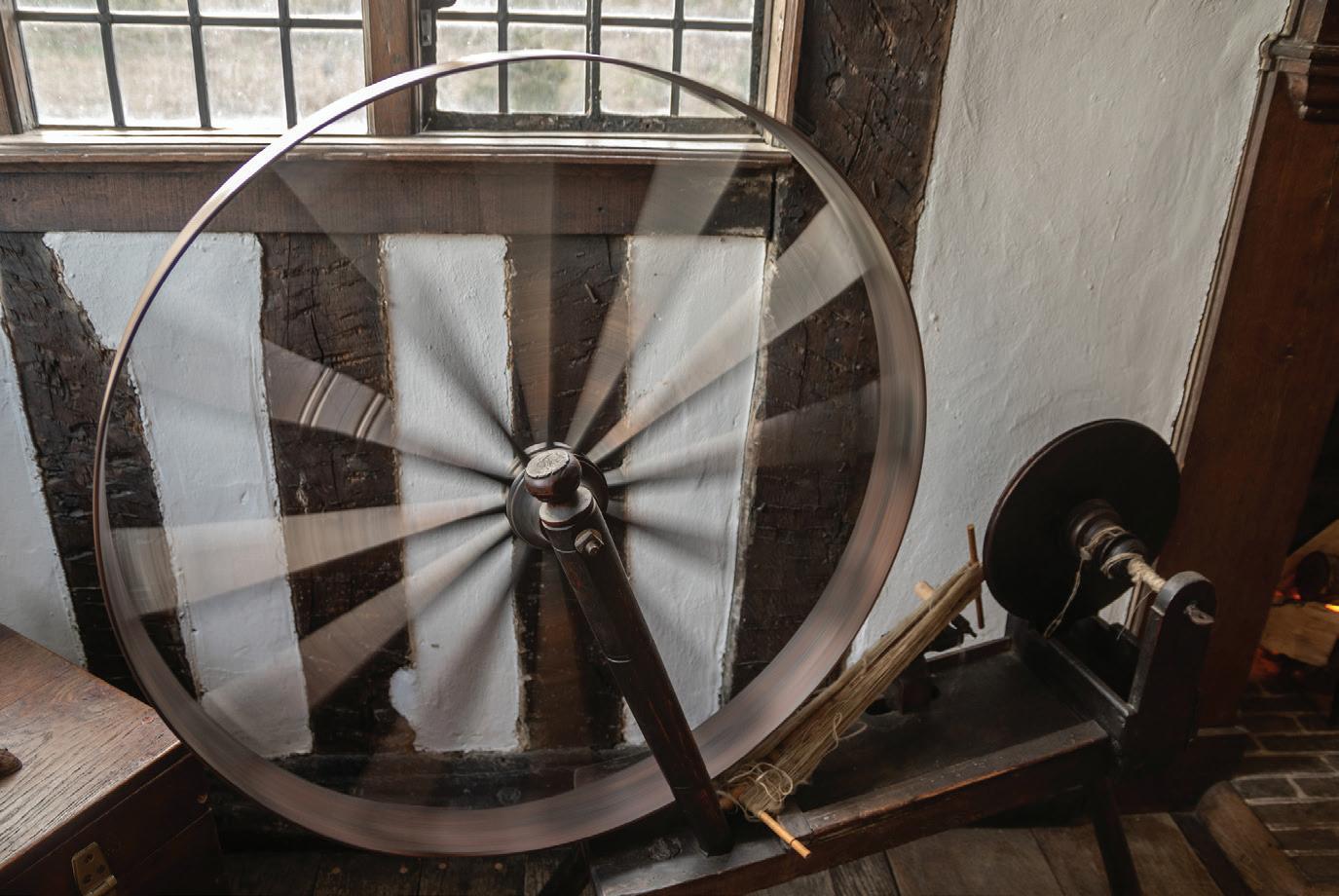
taken for such time as [the Governor] shall think proper.” (Condensed and adapted from the original)
8. C, 16 - 60. A year after Concord was founded in 1635, the General Court of Massachusetts Bay Colony met on December 13, 1636, and ordered the organization of a militia in the colony. With some exceptions, men of 16-60 were required to serve. Read more about the 18th century Massachusetts Militia in Jim Hollister’s article “Militia Companies and the April 19th Alarm” at DiscoverConcordMA.com/articles/ 249-militia-companies-and-the-april19th-alarm
9. B (Woman) or C (Minister). Only men were required to serve in the militia, and ministers were exempt. If you guessed Quaker, you earned partial credit. Despite their commitment to pacifism, Quakers were not exempt from early Massachusetts militia service and had a mixed history of service, risking punishment in their own communities if they did serve and punishment from the General Court if they did not. In 1757-58, the Massachusetts General Court updated the Province Laws, replacing fines on dissenting Quakers with a tax to fund replacement soldiers. [Province Laws, 1757-58, Ch. 0036]. Following the April 19, 1775, battles of Lexington and Concord, some Massachusetts Quakers were moved
to join the newly-formed Continental Army. In 1800, the Massachusetts Legislature updated Militia Law to exempt Quakers from military service.
10. A, B, and C, all of them! In 1767, British Parliament passed The Townshend Act which levied taxes on British imports to the colonies, including tea, paper, and glass. In a measure of protest against the new taxes, and a desire to break free of dependency on all goods supplied by Britain, Massachusetts women began gathering together in spinning bees to spin wool and flax into thread for cloth that could be locally woven.
11. Public restrooms are at the Concord Visitor Center at 58 Main Street.
For a list of sources, email barrowbookstore@gmail.com.
For more than 50 years, Barrow Bookstore has been a favorite of residents and visitors alike, specializing in Concord authors and history, children’s books and literature. The shop also provides a wide array of gently read and rare titles ranging from paperbacks to first editions and original manuscripts. Staff members have all worked as tour guides and reenactors in Concord and are happy to share their knowledge about the town and its history. Discover more at barrowbookstore.com.
A VAST WINTER SCENE
The snow-blanketed river ice stretches wide, framing Fairhaven Bay with the stone boathouse in the distance.
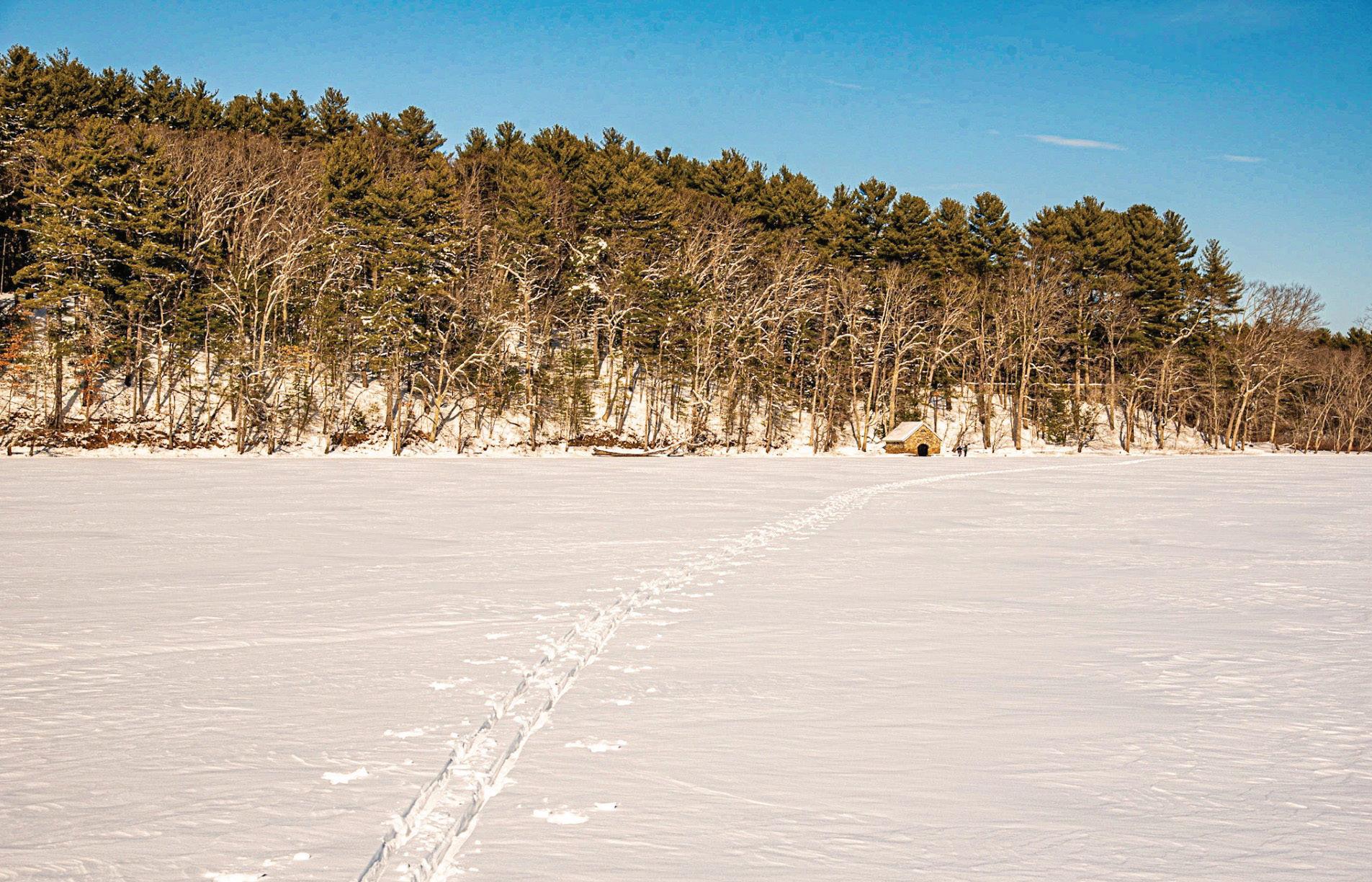
Winter paints our Concord world with charm, giving us unique and quite different seasonal views.
STORY & PHOTOGRAPHY BY DAVE WITHERBEE
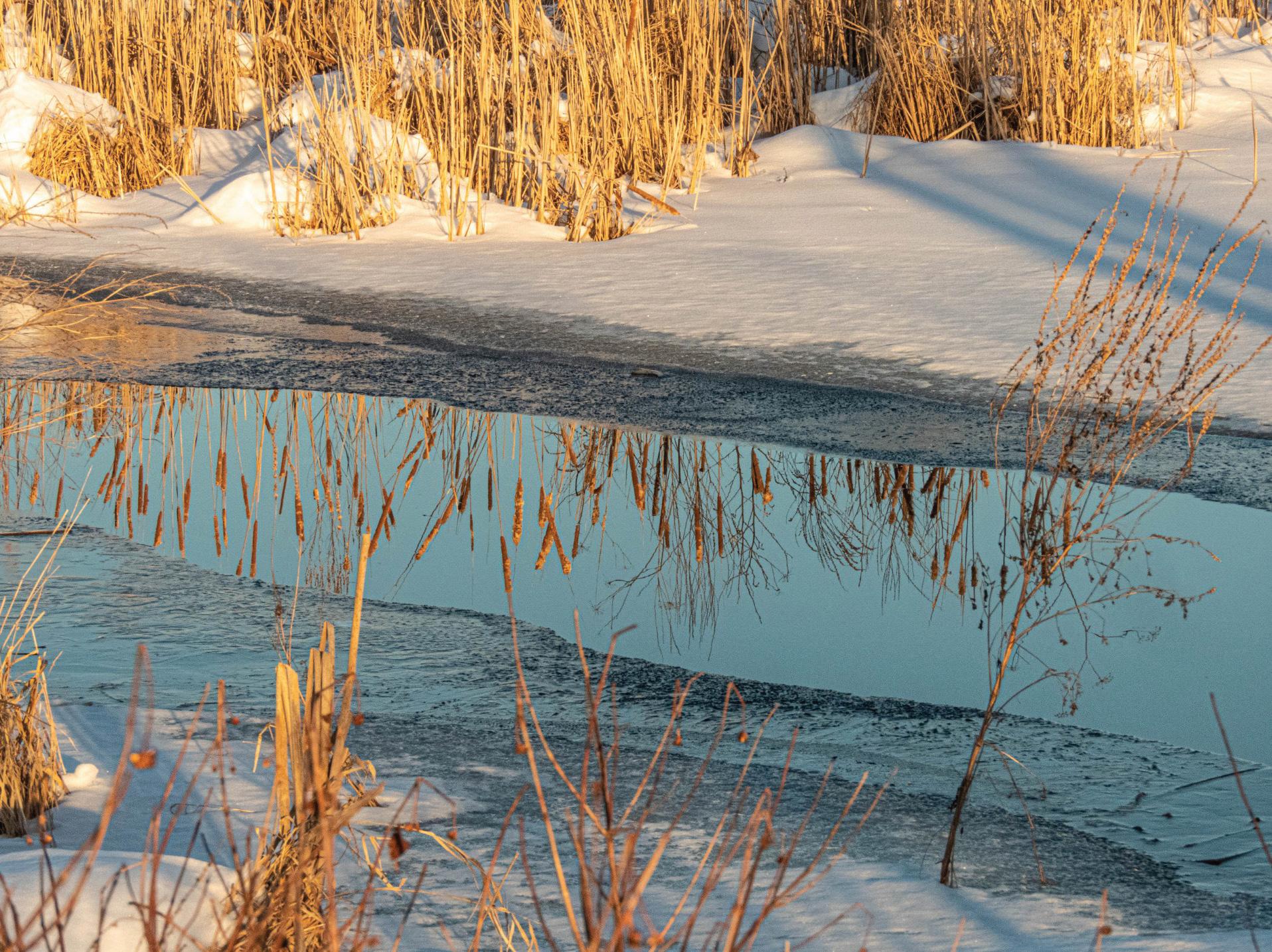

A solitary Mute Swan rests on the river ice, seemingly longing for a friend to share the view.
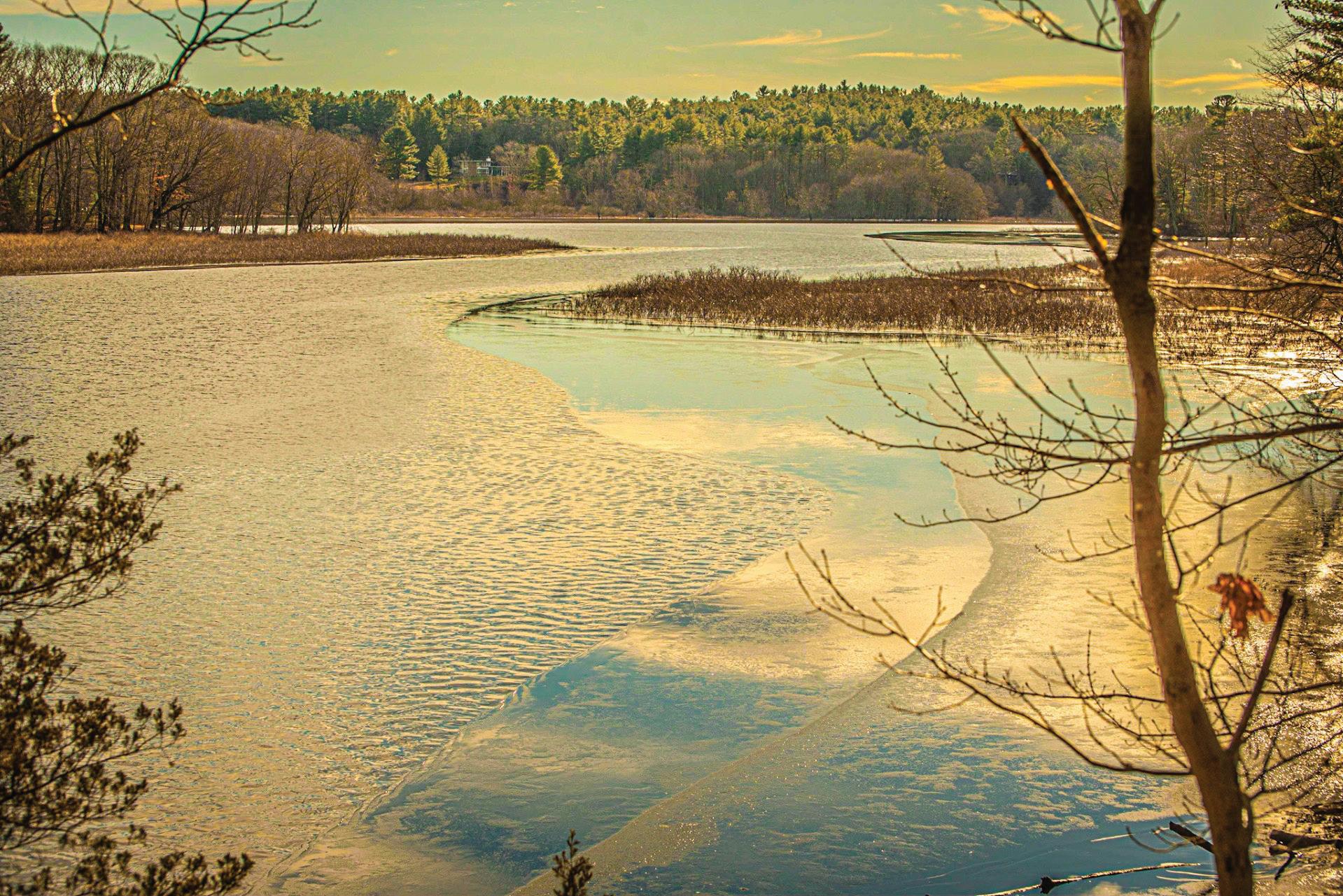

Concord’s winter landscapes offer endless beauty—bundle up, head out, and soak in the season’s serenity.


BY ŠÁRKA BOTNER
SSince 1770, The Old Manse has stood majestically on the banks of the Concord River, overlooking the North Bridge where, on April 19, 1775, one of the first battles of the American Revolution unfolded. It was later home to such literary giants as Ralph Waldo Emerson, a central figure of Transcendentalism, and Nathaniel Hawthorne, making it a symbol of the intellectual and cultural revolution of the 19th century.
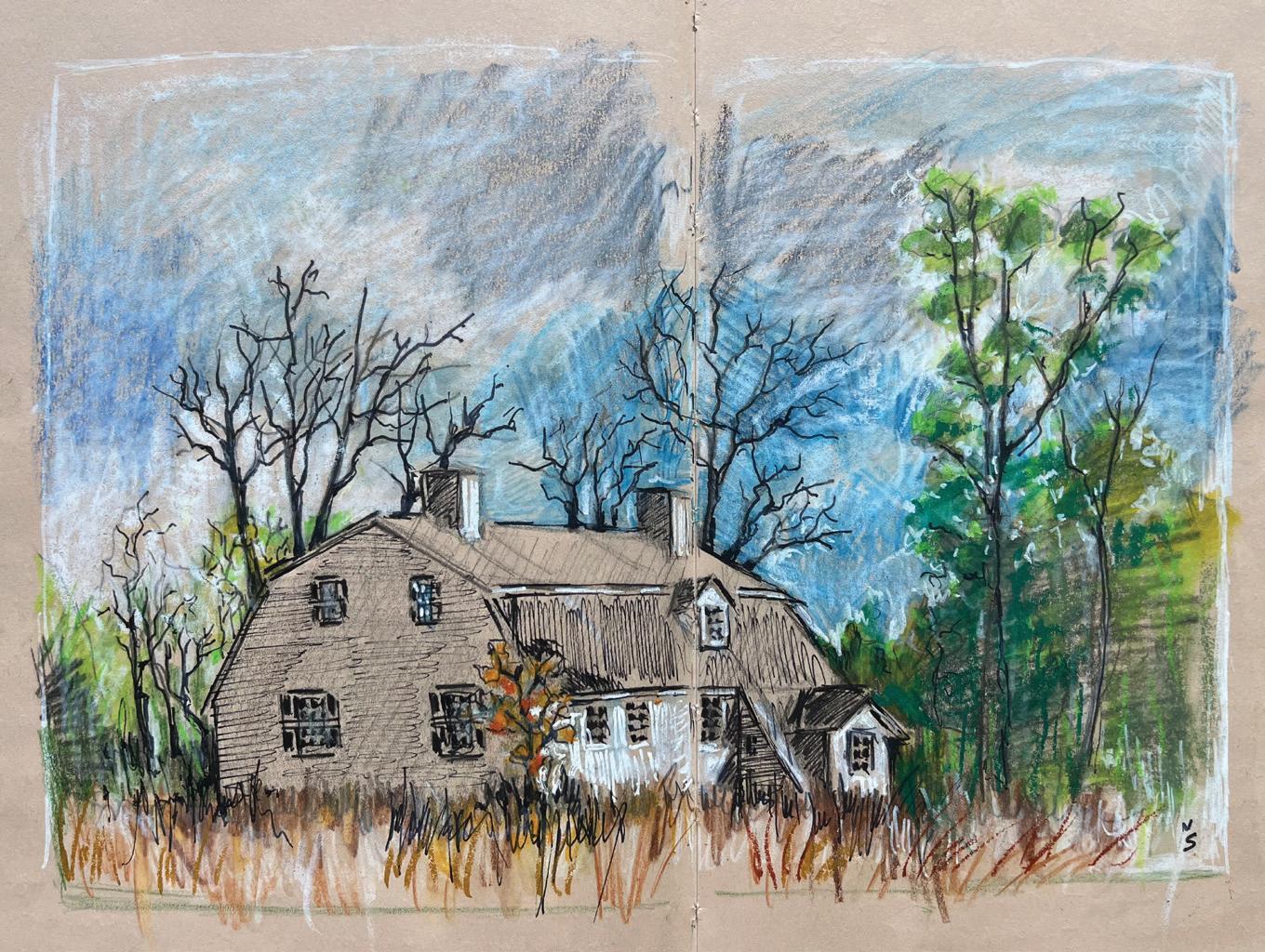
Now, almost two hundred and fifty years later, as an artist, I stand in this beautiful landscape, pondering the very heartbeat of The Old Manse. Again and again, I find myself captivated by the intertwining notions of nature and friendship. In its serene landscapes
and enduring walls, the spirit of nature and the bonds of friendship resonate, reminding us of the timeless inspiration they offer to both life and art. This connection between nature and friendship is, perhaps, what art might truly be about.
Šárka Botner is a local artist and art teacher. Find more of her work at SharkaStudio.com.
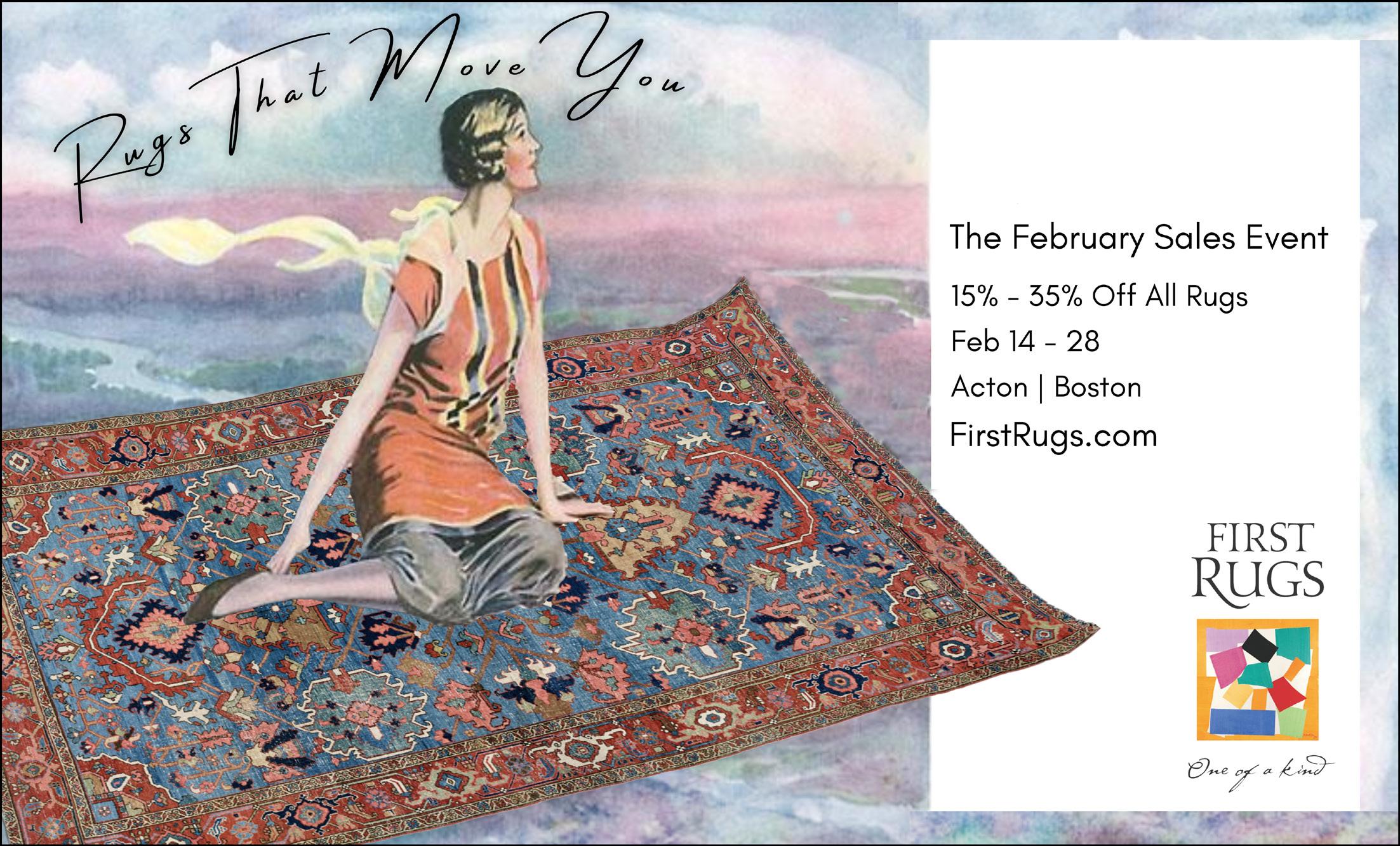

ANTIQUES
9 Bobbi Benson Antiques
55 North Bridge Antiques
ARCHITECTURE, CUSTOM BUILDING AND INTERIOR DESIGN
1 Appleton Design Group
16 CS Bailey Landscaping
72 Driscoll Contracting
47 Inkstone Architects
ART
9 Three Stones Gallery
BOOKS AND OTHER MEDIA
C3 Barefoot Books
47 Barrow Bookstore
22 The Concord Bookshop
32 Discover the Battle Road: the Official Concord250 Commemorative Book
CATERING, RESTAURANTS, AND SPECIALTY FOOD AND WINE SHOPS
23 Adelita
33 Concord Teacakes
27 Concord’s Colonial Inn
45 Debra’s Natural Gourmet
55 Dunkin’
40 Fiorella’s Cucina
36 Ideal Mixology
45 Verrill Farm
22 West Concord Wine & Spirits
65 Woods Hill Pier 4
31 Woods Hill Table
CLOTHING
33 Sara Campbell
EXPERIENTIAL
58 Concord Players
17 Freedom’s Way National Heritage Area
51 Songs Children Sing
31 The Umbrella Arts Center
7 The Wright Tavern
FARMS
45 Verrill Farm
FLORISTS
22 Concord Flower Shop
HOME FURNISHINGS, DÉCOR, AND UNIQUE GIFTS
37 Artisans Way
17 The Bee’s Knees British Imports
70 First Rugs
55 Nesting
33 Puck and Abby
JEWELERS
17 Artinian Jewelry
27 Fairbank & Perry Goldsmiths
58 Merlin’s Silver Star
LODGING
27 Concord’s Colonial Inn
PROFESSIONAL SERVICES
37 Camden Writers
59 Chiha Portraits
58 Cruise Planners
65 Northeast Numismatics (Coins)
REAL ESTATE
3 The Attias Group
C2 Barrett Sotheby’s Int’l Realty
37 Carleton-Willard Village
C4 Compass
5 Landvest
VISITOR RESOURCES
26 Concord250 Parade Route & Schedule
65 Concord Visitor Center & Tours
32 Discover the Battle Road: the Official Concord250 Commemorative Book
17 Freedom’s Way National Heritage Area
51 Patriots’ Ball & Commemorative Coins
23 Revolutionary Concordians: Trading Cards










